Conversations
- Start conversation


Select language

Live: Coronavirus travel information for Yunnan and Kunming
By Vera van de Nieuwenhof in News November 5, 2020
Updated: Sunday, January 24, 1:00pm local time
As we are looking at travel to and from China resuming at some point, we have archived a lot of the old — and by now obsolete — information and split the Covid-19 reporting articles into three parts: this one with travel updates within China, coming to China or leaving China, one with Covid-19 news and health information and one with government and business information . We hope this is helpful in finding the information you need.
These articles will be updated live — see date and time above — with verified news from trusted and official sources regarding the Coronavirus situation and how it impacts the lives of people living or travelling in Kunming and the rest of Yunnan. A lot of misinformation has been spread through WeChat groups and we hope that this article can provide a stable reference point.
We are working with a small team of news gatherers and verifiers, both foreign and Chinese. We are checking Chinese government information, national and international news sources, social media, academic resources and information from a couple of foreign embassies in China.
Below information is organized by topic which you can quickly access through the menu above. We will update the publishing date and time of this article as it is updated, so you will know how old the information in the article is.
If you have important news please email vera [at] gokunming [dot] com or contact us through the contact form . After verification it will be added to the article if relevant for Kunming and Yunnan residents.
Domestic and international government institutions and regulations
Chinese government guidelines and apps.
Thursday January 14 update: With several new outbreaks across China and with Spring Festival coming up there are new guidelines for domestic travel. It is generally discouraged to travel . But, if you must, there is a new government app (in Chinese) where you can enter your points of departure and arrival and it will give you the requirements needed for travel. We have received reports of several villages in Xishuangbanna not allowing entry to non-residents, so please check local guidelines when planning a trip further afield in Yunnan.
Tuesday August 11 update: The Chinese embassy in Denmark has issued guidelines for travellers — those who are holding a valid residence permit and want to return to China may apply for a visa for free . We are checking with other embassies on the list of countries if that means that they will reopen and start processing visas. We'll keep you updated.
Thursday July 23 update: all travelers coming into China — Chinese and foreign — are now required to show a negative Covid-19 test , taken within 5 days of boarding their flight.
It is #mandatory to show a 'green code' on your phone when traveling by plane, train or subway or when entering certain places. You can get the code through Alipay (see 'health code' option in the picture below), or by scanning the QR code you can find at posted at airports, subway stations etc.
Thursday November 5 update: As of today, several Chinese embassies in Europe have closed for an unspecified period. Since an embassy approval of a negative Covid-19 test is required for travel to China this will affect people wishing to return to China. The Chinese embassy in the United Kingdom has issued a notice: China has decided to temporarily suspend entry into China by non-Chinese nationals in the UK holding visas or residence permits still valid at the time of this announcement... Entry by holders of diplomatic, service, courtesy or C visas will not be affected .
We are following updates from the US , Dutch and Italian embassies.
Please register with the embassy of your own country for updates.
Most embassies now advise travellers to avoid travel to China, or if they are already here to leave China by their own means if they have no reason to be here (this is up to every individual to decide what that means), and to not travel to Hubei province.
Monday February 3 update: The USA is not accepting visitors from China — also for people who are only transiting in the USA. . USA citizens, permanent residents and their immediate family can still travel to the USA but might be asked to stay quarantined for two weeks upon arrival.
More countries are closing their borders to travelers from China, so please check with your airline, and the IATA link provided in the 'border info' section.
Visa and residence permit administration
Friday May 15 update: We have received several reports that earlier this week a government decision has been made concerning current tourist visa holders who are at the end of their stay. 30-day extensions will be given on an individual and month by month basis for as long as the pandemic persists and international travel is not an option. Existing multiple-year (tourist) visas will not be affected by this. The fee for this extension varies by country. For student and work visas that are about to expire some more documentation from the ex-employer or school may be required. Same applies as before: go with your documents to the Entry and Exit Bureau before your current visa, residence permit or stay permit expires. They only give information regardig extensions on a case-by-case basis when you present in person — with your paperwork — at the bureau.
Friday May 8 update: Here is a pretty comprehensive write-up of what do at the end of the automatic 60 day extension, including an explanation of the difference between visa, residence permit and stay permit. In short: go to the entry and exit bureau before your current visa, residence permit or stay permit expires.
Friday April 3 update: here is a useful link with information about what exemptions could possibly apply to the ban on foreigners entering the country .
Wednesday April 1 update: There is still some confusion around the automatic and free 60 day extension on their current visa . We have received reports of employers or schools giving false information to employees or students and in one case even trying to charge money for this FREE extension. At the end of your current visa you receive an automatic and free extension of 60 days. This is a blanket government policy, and not up to schools or employers to make any decisions on or charge money for. If you are in doubt whether you will get this automatic extension, please call the Entry and Exit Bureau hotline: 63197353. If you feel your employer or school is not being truthful about the free and automatic extension please report to us: vera [at] gokunming [dot] come. Even after the 60 day extension expires you are not required to leave the country, see next paragraph. In all cases the Entry and Exit Bureau will discuss options on an individual basis so please call them if you are not sure what will happen with your visa.
Tuesday March 31 update: Over the last few days a notice has circulated about foreigners having to leave China at the end of the 60 day 'grace period' that gets automatically added after the current visa expires, and not admitted back into China. This notice has caused worry among the foreign community and was quickly taken down. One PSB officer in Shenzhen has written a clarification in order to stem the confusion somewhat. Today we called the Kunming Entry and Exit Bureau. The take-away from this is that everyone who is near the end of their current visa or near the end of the 60 day automatic extension should contact the Entry and Exit Bureau — see hotline phone number below — as cases will be discussed on individual basis.
Monday March 2 update: The Entry and Exit Bureau has reopened, as well as all PSB's.
Important notice: People who are at the end of their visa stay or residence permit validity but who can not leave China because of virus restrictions will automatically get a two-month extension on their residence permit , to allow for extra time to leave the country and go back to their home country or next destination without overstaying their current (and last) residence permit or visa. Please note that this does NOT apply to people who intend to renew their residence permit — they can apply for the extension as per the usual procedure at the Entry and Exit Bureau. If you are not sure, please contact the Entry and Exit Bureau at tel. 63197353.
Thursday February 20 update: The Entry and Exit Bureau service has not resumed.
This is the 24 hour emergency hotline for the Kunming Entry and Exit Bureau : 63197353 and email address: [email protected].
Anyone whose visa stay will expire soon should call this number to report their situation and begin the process of filing an extension.
Latest notice from the Entry and Exit Bureau : Foreigners in Kunming who cannot leave China or apply for extension of their visa/stay/residence due to quarantine or medical observation, permit and registration of the change of items of their residence permit in time should report to the Exit and Entry Administration Bureau through telephone or Wechat in advance and with permission, they can either make an appointment or reapply those formalities afterward.
Your company or school may be contacted by the local authorities and asked to give information about the number of foreign employees or students, whether they are in China or not, potential health issues, plans for returning if they are not in China, etc. Please cooperate if you get asked questions by your employer, your school or the local authorities.
Official WeChat account of Kunming Entry and Exit Bureau: kmgacrj
International travel updates
We will post developments with regards to changes in entry requirements and flights to China in general here — info that is relevant for travellers wishing to come (back) to China.
Sunday January 24 2021 update: We received a report from a traveller who was leaving China. The 60 day automatic extension was not recognized in her port of departure and she was almost denied boarding — as she was considered to have overstayed her visa. If you plan to leave the country, allocate plenty of time at the departure airport and have the phone number for the Kunming PSB at hand.
Friday August 14 update: From Saturday, August 15, it will be possible to transit to connecting international flights at Hongkong airport .
Tuesday June 16 update: This map by IATA — the International Air Transport Association — gives some insight in international travel restrictions (and how that affects flights, transfers etc).
Monday June 1 update: Transit through Hongkong airport is not yet possible .
Monday June 1 update: One passenger on a flight with German workers returning to China tested positive for Covid-19 upon arrival in China
Friday May 22 update: The restrictions on international flights to and from China have been extended until at least October . This means in effect that foreign nationals cannot enter China, unless you are eligible for a rare exemption — diplomats etc.
Thursday March 26 update: China suspends all travel of foreigners coming to China per March 28 . This includes all foreigners holding a valid visa or a residence permit.
Please note that travelers who withhold or conceal travel history details may be held liable .
Airport and flights
Friday March 27 update: All Chinese and international airlines operating in China have to limit there flights to one route per country and one flight per week
Here is a handy overview of restrictions imposed by countries around the world with regards to travelers from mainland China , by IATA — the International Air Transport Association.
Border info
The border crossing with Laos is still closed and Laos is not issuing visas to travelers coming from China.
Saturday February 8 update: Visas to visitors from China are no longer issued at the Laos border
Monday June 1 update: Even if Vietnam is going to start issuing visas again per July 1, restrictions apply to people who are coming from mainland China
Friday May 29 update: Vietnam will open the borders and start issuing visas again as of July 1 . Follow the link for details on borders, nationalities and application procedure. Please note — this does NOT mean that you can reenter China from Vietnam, until further notice.
Monday February 3 update: Vietnam has suspended all flights to and from China. (proxy needed). We have no confirmation as yet on the land border. No visas are issued to people who have been to China in the last two weeks.
Tuesday August 18 update: Thailand will likely be closed to foreign visitors until 2021.
Friday May 8 update: Thailand extends travel ban until end of May
Friday March 27 update: A Thai emergency decree bars all foreigners from entering the country until April 30
Domestic travel updates
Sunday January 24 2021 update: The government has further increased restrictions on travel, and requires negative Covid tests for those traveling from risk areas. Here is an article which lists the current risk areas . As this will likely change over time, search for 疫情风险等级查询 in wechat — it's a mini program that lists up to date info on which areas are considered high - medium - low level risk.
The general advice is to not travel unless necessary . Furthermore, as quarantine requirements are often decided at local level, please check carefully what the situation is at your destination. We have received reports of people who were ordered to quarantine because they travelled into Yunnan from across provincial borders, even if they did not arrive from a medium risk area. There may be increased scrutiny towards foreigners travelling, especially in rural areas.
Tuesday June 16 update: Here is more info about the measures taken in each province with regards to travellers from Beijing or high-risk areas .
Monday June 15 update: quarantine and Covid-19 tests may be imposed on travellers coming to Kunming from outbreak areas elsewhere in China . A green health code is mandatory in order to enter Kunming without further measures.
Monday June 15 update: Due to recent Covid-19 outbreaks in Beijing and elsewhere in China it is expected that interprovincial travelers will face more questions and scrutiny, from authorities but also from employers (schools). Contrary to rumours, there is no outbreak in Xi'an . Please check with your employer and plan your trips accordingly.
Trains and interprovincial buses are operating as normal — expect however more hassle: a temperature check, lots of questions, show your green code. Allow for extra time at the bus- or train station, be patient and wear a mask.
Kunming Airport is open and functioning as usual apart from extra temperature checks. The official advice is to come early and allow time for the extra checks. You can follow the Yunnan Airport Group (YAG) WeChat account for updates — kunmingairport is their WeChat ID.
Travel within Yunnan
Thursday April 30 update: teachers and students are not allowed to travel outside Kunming during the Labor Day holidays.
Monday April 27 update: We are continuing to add hotels in the Yunnan tourist destinations that are happy to welcome foreign visitors. If you know of more places that welcome foreign guests, please let us know. In general: please check before you travel if your hotel currently accepts foreign guests. Allow for extra time at the train station and have your 'green code' ready to present at the train station and at your hotel.
Wednesday April 22 update: Traveling within Yunnan province is possible but expect more hassle — extra checks at the train station and less options for accommodation. Please check with your hotel if they do indeed accept foreigners and what their requirements are. It can help to point out that you have the health app with a 'green code' and share your travel history. The people at trip.com are very helpful in checking with the hotels for you, and even looking for nearby hotels that do accept foreigners if your hotel of choice does not. A health certificate — to be obtained at your community health clinic — might be helpful but is not a requirement.
Infrastructure
Thursday February 13 update: All highway exit closures within Kunming's jurisdiction have been lifted and traffic is resuming as normal. .
Wednesday April 22 update: Please plan for half an hour extra at the train station, as a health check and checking in with a new app (similar to the 'green code' health code app) are now required for foreigners.
Official WeChat account for China Railway: chineserailways. Kunming Railway: kmtl2013
Tourist destinations
Dali and xizhou.
Thursday January 14 update: Here is the latest about travel requirements (in Chinese) for people traveling from different regions across China to Dali.
These hotels are happy to welcome foreign guests: Jade Emu Guesthouse , the Lily Pad Inn , The Linden Centre (Xizhou).
Lijiang and Tiger Leaping Gorge
Friday November 20 update: a Covid test is now required to travel to Liming in Lijiang Prefecture. No test is required to travel to Lijiang Old Town and surroundings. Tiger Leaping Gorge will be closed for about half a year.
Thursday July 23 update: Tiger Leaping Gorge is closed for landslide inspection. It will likely reopen soon but please check back for updates until the end of the rainy season.
Tuesday June 2 update: Tiger Leaping Gorge is open to international tourists. Please call 13988707922 in advance.
Tuesday April 28 update: Foreigners can not hike the Tiger Leaping Gorge but they can visit the upper gorge and viewing platform.
These hotels are happy to welcome foreign guests: Jayden Lodge , Pullman Resort & Spa , The Bivou , Sean's Guesthouse (Tiger Leaping Gorge), Mama Naxi Guesthouse .
Follow these official WeChat news accounts from Lijiang for updates: Ljrbqmt ( 丽江日报 ) or ljdb8885566 ( 丽江读本 )
Tuesday April 28 update: The Shika cable car is closed.
These hotels are happy to welcome foreign guests: Yi's Hostel , Sean's Guesthouse (Tiger Leaping Gorge), Red Hill Bed & Breakfast .
Thursday July 23 update: Lugu Lake is open to foreigners but you must show a health report, which you can get at most hospitals. Ask for " 新冠病毒核酸检测 ", the nucleic acid Covid-19 detection test.
Tuesday April 28 update: The toll gate to Lugu Lake will not let foreigners pass.
Jianshui & Yuanyang rice terraces
These hotels are happy to welcome foreign guests: Timeless Hostel .
Xishuangbanna
Thursday January 14 update: We have received reports that several villages in Xishuangbanna do not allow non-residents to enter.
These hotels are happy to welcome foreign guests: Jinghong Yourantai B&B
Follow the official Xishuangbanna Radio and TV WeChat account for updates: XSBNRTV
Ruili / Dehong
Local residents who have been traveling have been asked to stay away from Ruili until February 9.. No news on the border, but it's closed to foreigners anyhow.
Travel within Kunming
Public transport and taxis.
A mask is now required for Didi drivers as well as passengers.
Buses are operating as usual. A mask is required to get on the bus. Official WeChat account of Kunming Bus: kmbus_weixin
The subway is operating as usual. Facemasks are now required for entry into the Kunming Metro system , as well as a green 'health code'. Official WeChat account of Kunming subway: gh_2b8d94a97c82
Tourist attractions
Parks have reopened, with measures in place to register and control the number of visitors.
Thursday April 16 update: the following hotels and guesthouses will gladly accept foreigners.
Lost Garden Guesthouse , Sofitel Kunming , Cachet Boutique Kunming Artime , Wanda Vista hotel .
We are currently asking around and adding to the list as we go.
Thank you everyone in the international community in Kunming for sticking together in this difficult time. A special thanks to our Chinese friends who are helping to make Chinese news accessible and therefor being a true bridge between cultures.
In order to stem hearsay and fake news no comments will be open for this article.
If you have important news please email vera [at] gokunming [dot] com or contact us through the contact form. After verification it will be added to the article if relevant for Kunming and Yunnan residents.
- Coronavirus
Share this article

Related articles

COVID-19 vaccinations for expats in Kunming available until July 18

China cuts quarantine time for international inbound travelers to 7+3

China and Thailand's visa-free deal further reshapes Asia travel

China-Laos railway now connecting cities of Kunming and Vientiane
Recent articles.

China further eases visa rules with five measures for easier entry

China is building bridges with groundbreaking visa-free policy

The Lijiang-Shangri-La Railway: A New Era in Yunnan's Connectivity

Announcing Yunnan's latest UNESCO site: The ancient tea forests of Jingmai Mountain
This article does not have comments yet. Be the first!
Login to comment
Travel to Yunnan – A Complete Guide to The South Western Province
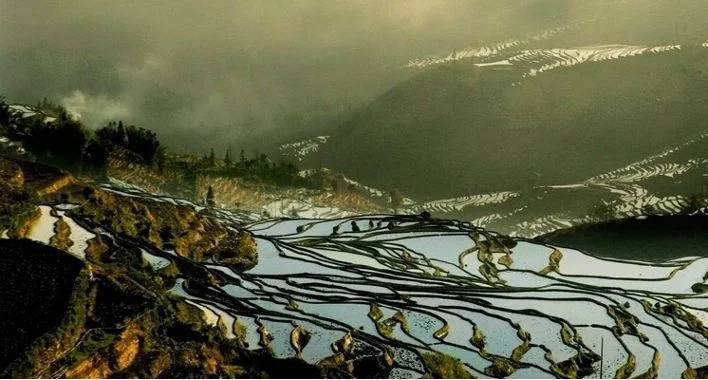
This article is a travel guide to Yunnan Province, in the South West of China. It was written by Harley Greenberg, who works with a local travel agency (WindhorseTour) in China.
Travel to Yunnan – Index
Yunnan basic travel facts.
- Possible itineraries
- The Stone Forest near Kunming
- Dali Ancient Town
Lijiang Ancient Town
- Yuanyang Rice Terraces
Frequently asked questions
Yunnan Province is famous for its diverse scenery and for being home of a third of all China’s ethnic minorities. It has lots to offer any traveler!
A trip to Yunnan province realistically takes at least one week. However, if you want to cover all the highlights I encourage you to spend twelve days or longer.
A trip to Yunnan is a breathtaking view of some of the most spectacular and overwhelming scenery within China. You can watch the sun rise and set on the magnificent Yuan Yang rice terraces; escape the crowds and enjoy the days exploring the less visited Lugu Lake, or get lost among the canals and cobbled lanes of Lijiang ancient town or Dali Cang Mountain.
Yunnan’s climate is diverse as its terrain, for many places such as Dali there is an ideal temperature – an eternal spring – that attracts tourists all year-round. The northwestern region around Shangri-la is situated on the Tibetan plateau and can be very cold during winter.
I find the best time and also peak season for traveling Yunnan is from April to October, when the vegetation is a lush green and flowers are in bloom.
Yunnan can be easily accessed by air, bus and trains from most cities across China. Kunming, the capital, is served by all Chinese airlines and has daily flights to most cities.
Other popular attractions such as Lijiang, Dali and Shangri-la also have airports with connecting flights offered from Kunming and other major cities in China. Another option is to take the train – or the bus – that goes from Kunming to Lijiang (via Dali).
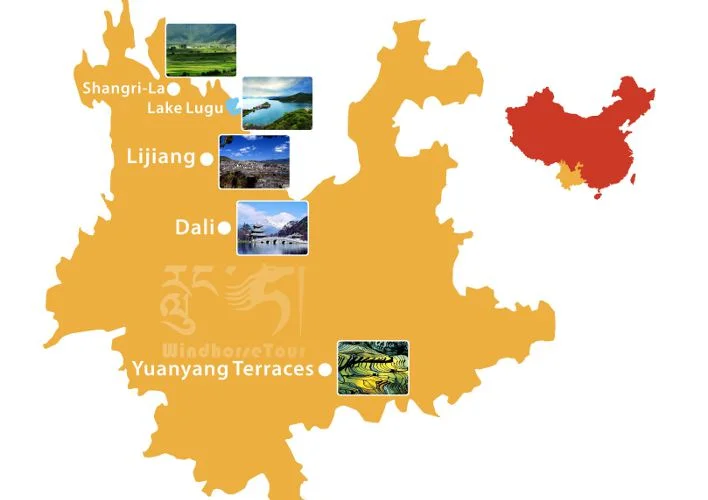
Itineraries
Here some possible itinerary to visit Yunnan Province:
- Kunming – Stone Forest – Dali – Lijiang – Shangri-La and then back to Kunming or up to Sichuan.
- Kunming – Stone Forest – Dali – Lijiang -Lugu Lake and then back to Lijiang or up to Sichuan.
- Kunming – Yuan Yang and then back to Kunming, East to Guanxi Chinese Province or South to Vietnam.
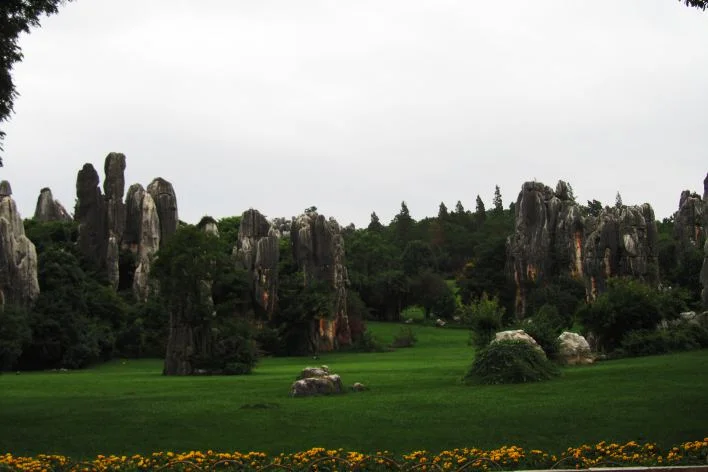
The Stone Forest
The Stone Forest (or Shilin, in Mandarin) is a beautiful park composed by limestone formations.
You can get there by private car, taxi or taking the bus that leaves from Kunming every hour (the trip takes about ninety minutes). The Stone Forest is quite popular, especially among Chinese tourists. This means that most days by nine am it will be jam packed, this is one reason why clients that visit the forest tend to don’t recommend it. However when asked if they are glad they went the answer is “yes”. So there you have it.
A hint on how best to enjoy the Stone Forest is to travel there with an agency that brings you early on or head to Lunan – the near by town – the night before so you can wake up early and visit it before the buses from Kunming start to arrive (normally around nine am). For more info you can read this story published here on the site longtime ago.
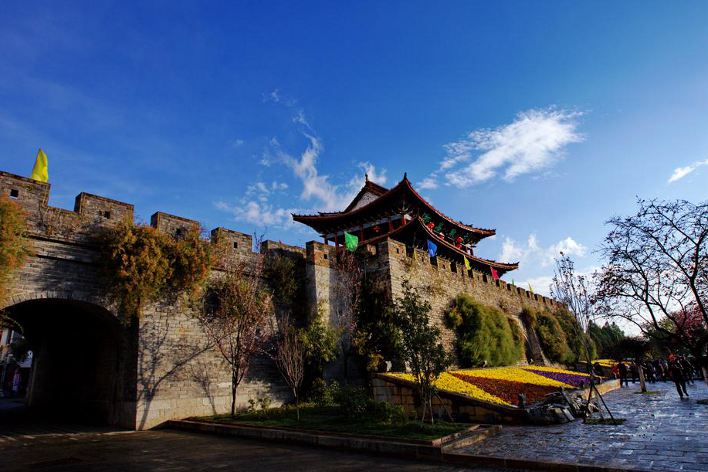
Dali Ancient City
Dali is one of those few places in China with an infectious ambiance, an environment that seem to attract many Chinese backpackers. Don’t be surprised when you find some of them sitting around strumming their guitars and telling tales of their travels.
With over 2,000 years of history, Dali shares a glorious past of being the former capital of the Nanzhao Kingdom, a powerful entity separate from China. It lies on the western edge of Erhai Lake at an altitude of 1,900 m (6,234 ft.), with a backdrop of the imposing 4,000 m (13,123 ft.) tall Jade Green Mountain (Cang Shan in Chinese). You can climb it using the stairs but be careful to do not lose yourself.
Flights are probably the most popular transportation to get to Dali. You can also choose an overnight sleeper train from Kunming or take a bus, always from Kunming, that will take around four hours.
Within the heart of Dali still lives the ancient city that retains a historical atmosphere that is hard to come by in other parts of China.
A short distance northwest from the old town stand the Three Pagodas (you can walk till there). Like 3 guardians this landmark is a definite “can’t miss” attraction in the city. The tallest of the three has 16 tiers, reaching 72 m. (234 ft.), and was originally constructed in the 9th century.
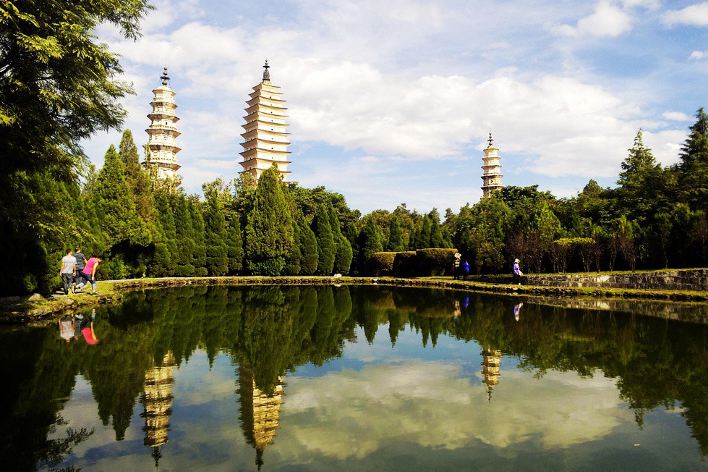
The countryside around Dali can also be dazzling, with small fascinating temples, and the occasional village showcasing exquisite traditional local architecture.
A good start is to visit the Zhonghe Temple. You can climb the paths that snake their way up and see the marvelous views of Erhai Lake.
Other way to explore Erhai Lake is by either renting a bike or zipping across the water on the many ferries that crisscross the lake. Roads now encircled the lake so it is possible to do a loop of the lake by mountain bike. There are some small villages dotted along the way for you to buy food and water.
24 km. (15 mi.) north of Dali, the old town of Xizhou is a must-see to extend your cultural trip in Dali. Much of the original Bai architecture is well preserved. Here you will witness the local courtyards with children play, chickens squawk, dogs fight, and all the rhythms of family life play out.
When the night falls, find a bar at the Foreigner’s Street, sit back with foaming cappuccinos and banana pancakes, there is another singer telling his stories in Dali.
Click here to read SDC’s hotel recommendation in Dali .

In the foothills of Qinghai-Tibet Plateau lies Lijiang, a splendid little town that is home to the Naxi people. Filled with a maze of cobbled stone streets, rickety old wooden buildings and gushing canals makes it one of the most visited sites in northern Yunnan. Here you will find the stunning Jade Dragon Snow Mountain that presents a splendid backdrop viewable from across Lijiang.
Beyond Jade Dragon Snow Mountain lies one of the most popular backpackers destination in Yunnan, Tiger Leaping Gorge. Most travelers will spend two days hiking within Tiger Leaping Gorge.
Lijiang can be easily accessible by air, bus and trains from Kunming and other big cities in China.
A visit here requires at least two days to take a glimpse of the highlights this town has to offer. However, I would suggest you arrange a local guide either local or along with a private tour. This will help your to better understand the rich culture of the region and history of the nearby Baisha and Shuhe Villages.
Here the most popular attractions in Lijiang:
- Dayan ancient Town: It is one of the main draws for people coming to Lijiang. The whole town is crisscrossed by canals, bridges and a maze of narrow streets. Dayan is full of traditional Naxi architectures that still today fills the town. As you walk through the narrow street you will observe the many wooden doors that are left open to reveal the interiors of both Naxi and Western restaurants.
- Black Dragon Pool: As you head towards the north you will reach the Black Dragon Pool. One of the most popular vantage points of Jade Dragon Snow Mountain.
- Dongba Culture Museum: If you fancy museums stop and visit the Dongba Culture Museum dedicated to the Shamanistic Dongba religion.
Jade Dragon Snow Mountain : A visit to the Jade Dragon Snow Mountain is a must-do in Lijiang. 34 km. (21 mi.) north of Lijiang, this mighty mountain rises raggedly above the ancient town. The mountain’s summit soars to 5,596 m. (18,354 ft.), encrusted with snow and set against a sharp, blue sky.
Located at 4,506 m (14,784 ft.), Cloud Fir Meadow is the highest point you can ascend to at Jade Dragon Snow Mountain. The walkways provided to help protect the environment lead you to some awesome glacier views.
Be warned that the elevation here can make some people feel uncomfortable. Mind your health and tell your guide immediately if you start feeling queasy.
Tiger Leaping Gorge : For further exploration in Lijiang, head over to Tiger Leaping Gorge. A hike here is a “can’t miss” experience of Northern Yunnan.
The gorge is considered one of the deepest in the world. With Jade Dragon Snow Mountain in the back, the Jinsha River flowing through the gorge and later swelling into the Yangtze River it offers a dramatic and thrilling journey to travelers.
The nightlife in the ancient town is lively! Chinese people believe this is one town filled with romance. Also, there are many bars and western cafes in the old town. With a cold beer in your hand and exotic music in the air, it offers you a great place to experience the Lijiang nightlife and perhaps find your true love.
Click here to read SDC’s hotel recommendation in Lijiang .
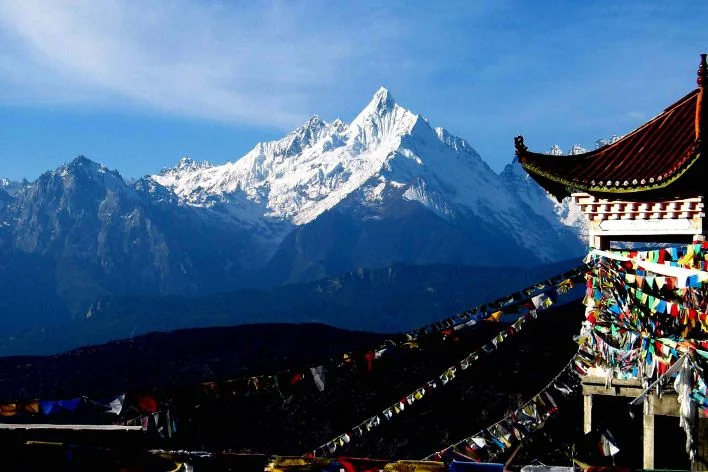
Traveling along the northern route of Yunnan, Shangri-la is the last stop for most travelers . It is home to several remote temples, rugged scenery and is the start of the Tibetan world.
Originally called Zhongdian, this place has attracted travelers since it was declared the location described on the novel The Lost Horizon written by the British writer James Hilton .
While we cannot confirm or deny James Hilton intention, the real Shangri-la exists today. The real scenery you will witness here is awe-inspiring, and the people are some of the warmest heartiest in the world.
If you cannot make a Tibet tour , Shangri-la is a pretty popular runner up to get a taste of Tibetan cultures. However, I would still suggest a trip into western Sichuan if you are craving Tibetan culture and cannot travel into the Tibet Autonomous Regional.
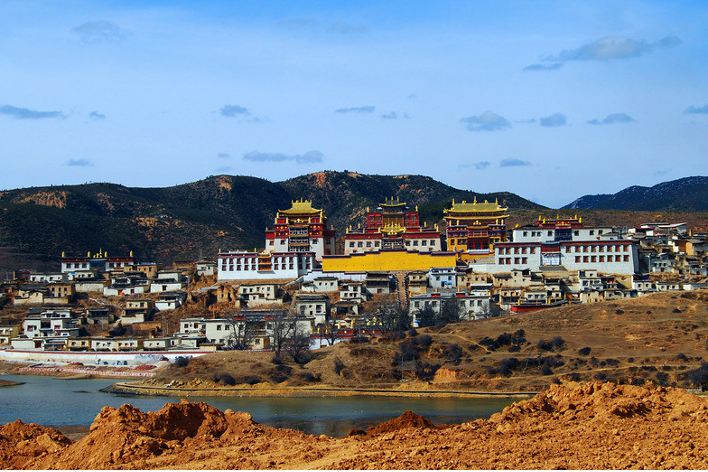
Within Shangri-la there are Tibetan towns, named Gyeltang or Gyalthang, where you can experience the daily life of Tibetan people.
About an hour’s walk north of the town is the Ganden Sumtseling Gompa. One of the main reasons people to come here is to see the little Potala Palace. This monastery was built based on the layout of the Potala Palace in Lhasa, and is home to countless Tibetan Buddhist treasures.
The view of town from the top of Ganden Sumtseling is gorgeous. A sunset from here is particularly picturesque among the tinkling bells and fluttering prayer flags.
Shangri-la is a wonderful place to get off the beaten track.
I encourage you to spend some time trekking or horse riding to explore the surrounding areas. There are many less visited monasteries and villages.
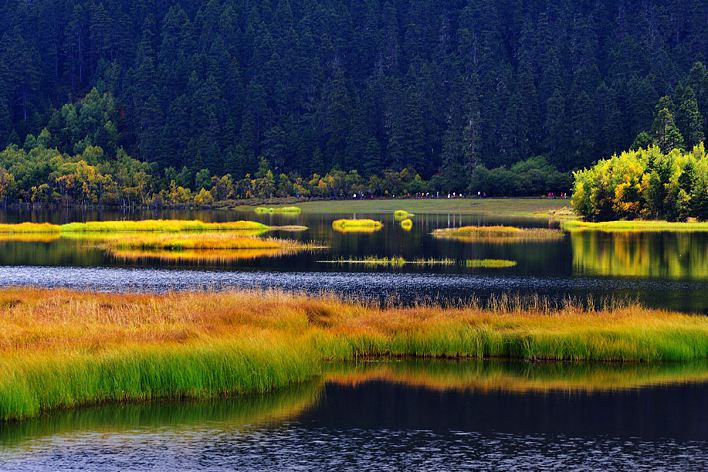
There is a severe lack of reliable public transportation in these remote areas, so be prepared to hire a local driver for a couple of days or consider organizing a private tour with a local guide who will share with you the intricate details of her culture.
When visiting in Shangri-la, I suggest you spend a day at Pudacuo National Park, which is composed by two beautiful lakes, Bita Hai and Shudu Lake.
Fed by small streams from the snow mountains encircled, Bita Hai Lake resembles a trumpet shell. The picturesque scenery of the pure green water with snow mountains and trees reflecting in it will offer you a great photography chance. The Shudu lake is home to lush plants and various wild animals.
Shangri-la is also popular for being the “backdoor” access to Yunnan Province from Sichuan (the main and easier route being the train Chengdu-Kunming). Be aware that for enter (or exit) Yunnan from Shangri-la you’ll have to travel by bus through the Tibetan Plateau, which isn’t always opened to foreigners and it may take up to two days.
SDC’s cheap hostel recommendation in Shangri-la: Shangri-La Lamtin Youth Hostel .
SDC’s hotel recommendation in Gyalthang (it’s not that cheap but it’s were I slept and it’s awesome, check the pics of the bedrooms!): Shangri-la Gyalthang Dzong Hotel .
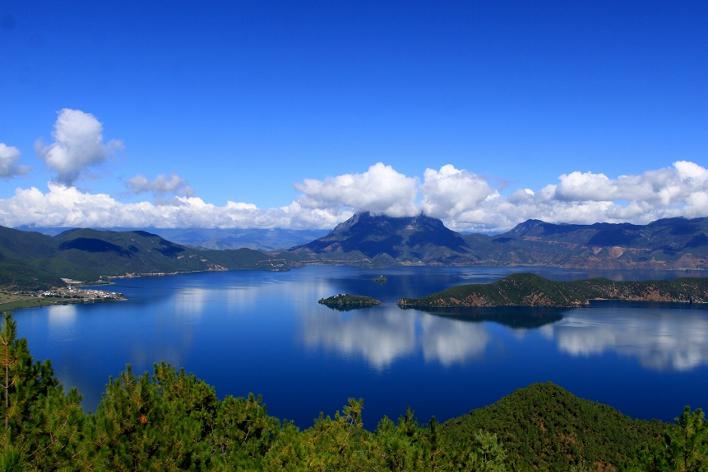
This forest lined lake overlaps the remote border between Yunnan – Sichuan provinces . It is home to several Tibetan, Yi as well as Mosuo minority villages.
The stunning scenery and ethnic cultures are two main features that attracts thousands of visitors.
A visit to the Lugu usually can be started from Luoshui. The lake, was formed by two sinking faults, and this high alpine lake sits 2,685 m. (8,809 ft.). Most people say it is shaped like a horse’s hoof – long from north to south, and narrower from East to West.
The lake which is surrounded by hills is filled with inviting clear water, that makes it easy to see the fish swimming within. The forest that protects the lake if full of dense trees and fresh mountain.
Lugu Lake is a place that has not been disturbed by the other economic developments and pollution; its’ natural beauty has been retained.
The weather is pleasant – it is cool in summer and warm in winter.
From Luoshui you can visit several islands on the lake by dugout canoe: Liwubi Island is the largest island where you can practically wade across to a spit of land in Sichuan; Heiwawu Island is in the center and has a variety of birds living on it; the smallest is Nixi Island, an oblong rock covered with shrubs and moss.
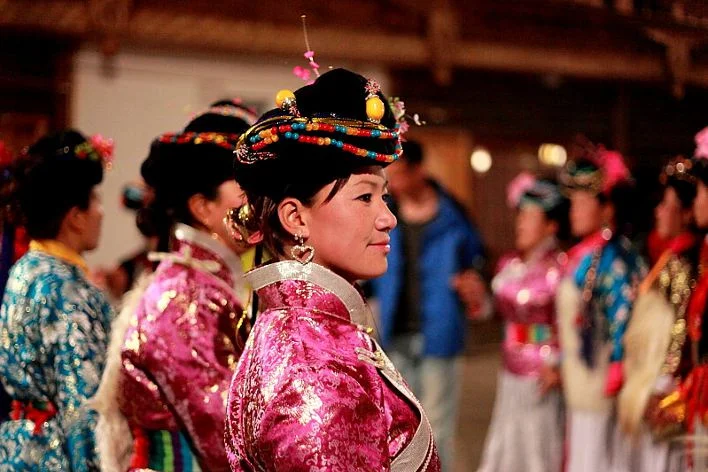
One of the main reason Lugu Lake has maintained its’ mystery and charm is because the Mosuo people who live here. The Mosuo are the last practicing (almost) matriarchal society in the world .
Mosuo women never marry and never cohabit, instead they are free to choose as many lovers as they like throughout their lives.
Children are brought up by women, and use the surname of their mothers. Families are composed of the members of the matrilineal kind. Women hold the principal positions in the society, forming a modern day ‘woman’s kingdom’, which adds mystique to this magical place.
The best time to visit Lugu Lake are April to May, and September to October, when the weather is dry and mild.
In order to reach Lugu Lake you’ll have to take a bus or private minibus from Lijiang (it should take around seven hours to arrive here).
p.s. You can enter Sichuan also through Lugu Lake. You’ll have to take a bus till Xichang (the trip takes about seven hours) and then a train till Chengdu (you may want to stop at Emei Shan, one o the holy Buddhist mountains and Leshan, where you can admire the biggest statue of Buddha in the world).
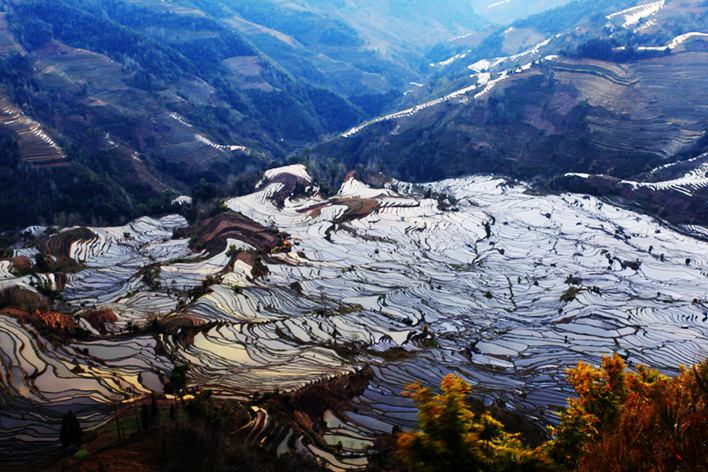
Yuan Yang Rice Terraces
Yunnan is a destination that is never lacking of natural beauty. However the last place I want to recommend to you is famous for its spectacular man made sights.
The famed rice terraces are slopes claimed from nature for cultivation in these hilly and mountainous areas. Some are hundreds or even thousands of years old.
Yuan Yang, located in the south of Yunnan, is one of the two most popular places to capture this unique sight in China. Fashioned over hundreds of years by the ancient Hani people, Yuan Yang Rice terraces cover roughly 125 sq. km. (48 sq. mi.).
A proper trip to the rice terraces can be done in two days when driving from Kunming. For those willing to spend more time a three days visit offers a chance to explore deeper into the local culture.
The scenery here is amazing and each year Yuan Yang attracts numerous photographers who flock here to capture the spectacular sunrise and sunsets that convert the terraces into pools of gold, red and silver.
Even in poor weather the views can still be breathtaking! When the fog rolls into the terraced valleys leaving only the hilltop village visible, the effect is dramatic. Many describe it as islands floating in the clouds.
Xinjie is the traditional starting point near Yuan Yang to reach the rice terraces. It is the recommended place to start any trip.
The terraces around each of the dozens of villages that you will find here have their own special characteristics which vary from season to season. Having a local guide helps to determine which terrace matches with your interest and helps to find the best ones given the time of year you visit.
To help you plan your trip, here are several popular photography places within Yuan Yang Rice Terraces:
- Duoyishu, about 25 km. (16 mi.) from Xinjie, has the most spectacular sunrises and is one you should not miss.
- Bada and Laohuzui are two of the best places to capture the sunsets. The scenery can be mesmerizing.
- Longshupa Scenic Spot is famous for its closest views of the terraces, while Mengpin is splendid for the bird’s eye view of the terraces.
Besides these landscapes, the unique mushroom-shape Hani houses and Hani costumes are also great for photography.
The rice harvest will traditionally occurs in early September and the fields will remain dry till December when flooded again. The fields are then again filled with water in December.
I advise you to plan your trips from January to March, when the seas of clouds above the terraces are most likely to be witnessed. In early spring according to the Chinese lunar calendar (from late February to March), the terraces are filled with wild flowers, including pink peach blossom and white pear blossom.
Yuan Yang lies on the Tropic of Cancer, so the climate is neither extremely hot nor cold.
However, it is cooler in morning and evening, and the sun is very strong at noon. So pay attention to the sun and wear proper protection. Moreover, T-shirts and shorts can be worn all year round, but you are advised to take a jacket.
In addition to capturing the picturesque scenery, exploring the unique Hani ethnic cultures at the surrounding villages is also an interesting experience not to miss. Participate in a local country fair, during which the entire minority people dress in colorful ethnic costumes, you will find it is very lively.
p.s. Here you find all you need to know to book your hotel (or hostel) in China .
Also, bring some sunblock and sunglasses as the sun is strong. You should also try to buy a hat or a cap beforehand or when arriving. Preferably, you should also buy medicine which prevents high-altitude disease and also oxygen, if you’re to ascend the mountains.
Photo Credits: Photos by Harley Greenberg
About The Author
Harley Greenberg
Related posts.

The Stone Forest and the legend of Ashima

From Lijiang to Lugu Lake: Chronicle of a Hectic Trip

Gubeikou: Hiking on the Wild Great Wall
23 thoughts on “travel to yunnan – a complete guide to the south western province”.
Thanks so much for sharing. 🙂 zinbeauty
This website is great, thank you! I’m planning to visit Yunnan this summer. I’ve read info on the Chinese Embassy in my country about Covid-19 policies, and it says that one should refer to the dispositions given by the local authorities. I’ve tried to find out whether in Yunnan some rules still apply, but I couldn’t find anything – I can’t speak Mandarin *that* well. Do you know something about this issue? Where should I seek info?
As far as I know at the moment, there aren’t any restrictions and it’s unlikely that the situation will change this summer. However, here in China the situation can change really fast.
I have never been in Yunnan before, but spent quite some time in south east Asia. It is different word, but those are the places in my opinion worth visiting. Culture, people, way of living and the way of thinking if you want. It is great you not only visited Yunnan, but also described you journey in details here. Thank you!
Yunnan is an incredible place and culturally close to Southeast Asia
Yunnan is an extremely beautiful destination to visit also Yunnan is full of natural beauty. Next month, gonna plan to visit here. This travel guide is full of useful travel information. Thanks for sharing this informative post. Keep sharing the good work ahead……Bookmarked for the future read. If you are planning to visit Morocco, Visit us here. We are best hotels in Marrakech, Morocco
Visiting Yunnan is probably the part of my Asia trip Im the most excited about! It just seems as if there are so many beautiful places :) Im planning to visit Feilai si in Deqin, you have any tips for doing so? The mountains there seem absolutely incredible!
Hello Niclas,
the only tip I can give you for a specific spot is the following: sometimes in Yunnan is difficult to find public transportation for short trips. In this case the best way is to rent a car with a driver for a day (usually is not expensive). You can ask to your hotel reception to help you finding a driver, it shall not be too difficult
Hi. My husband and I are thinking of going to Yunnan from September 30th until October 4th. We are thinking of just going to one place so we are not rushing on one place to another. Which one would you recommend? Our choices are Dali, Shangri La and Lijiang.
Probably Dali is the best choice. Lijiang is too crowded and Shangri-La had a big fire on 2014 so I don’t know if it’s still a beautiful place to visit
Are night buses between Kunming and Yuanyang safe for two female travelers!?
Hello Jaimie,
yes, there are night buses
Your article has been a great help in me deciding to travel Yunnan for ten days with my boyfriend. I am living in Shanghai for three months and this is the only big trip that we will take. If I am coming from Shanghai and only have ten days.. do you recommend a specific set of places to visit? You have provided three options in this article, I wonder if you could say which you think would be most suitable? I want to spend as little time as possible travelling and being on buses (I get very travel sick). I’m aware that a lot of travelling will need to be done between places but want to keep it to as much of a minimum as possible. Maybe you could recommend routes that have night trains for example? We are most interested in seeing beautiful nature and wonderful scenery. We are both very fit so lots of climbing, hiking, cycling etc would be wonderful. Thanks so much, looking forward to hearing your advice!
Hello Lucy,
if you have troubles traveling, the easiest itinerary is Kunming-Dali-Lijiang-Shangri La.
I think the longest trip by bus is Kunming-Dali, which is just 4 hours.
You will find a ton of nature near all these 3 cities!
Dear Furio,
I am planning a trip in spring next year.
Arrive in Kunming (one day), onwards to Dali (one night), then Lijiang (one night), Tiger Leaping Gorge, then back to Lijiang. Onwards to Zhongdian. Have not decided whether to go onwards to Chengdu or back to Kunming to catch an international flight out of China.
I know I won’t be able to see all recommended places so my priorities will be Lijiang, TLG and Zhongdian.
Due to a tight schedule and budget, what’s the fastest way, other than flights? Train or bus? Will I be able to save if I take overnight buses or trains?
Hello Audry, you really have a tight scheduling here…
If your priority is Lijiang, I’d catch a night train Kunming – Lijiang to save time (although personally I prefer Dali to Lijiang).
Zhongdian is only 2-3 hours by bus from Lijiang, and the Tiger Leaping Gorge is on the way, thus in this case a night train / bus is not needed.
Yes, China is pretty safe.
Dear All, I would like to visit Yunnan for 5 days arriving on 31 December 2017. I would like to include in the itinerary : (1) Shillin Stone Forest (2) Black Dragon Pool Park (3) Jade Dragon Snow Mountain (4) Tiger Leaping Gorge and (5) Zhongdian/Shangri-la. Please add other destinations which you think should be included. It will be for 2 adults. We would like to stay at the Intercontinental in Kunming, then Grand Hyatt in Lijiang and the Songtsam in Zhongdian/Shangri-la. Is December and January a bad time to visit the places in my itinerary for Yunnan? Will cold, icy weather and snow interfere with travel? What percentage of shops and restaurants will be closed at this time of year? I look forward to your reply.
Hello Maria,
the itinerary seems ok, maybe even too much for only 5 days!
In winter Shangri-la may be cold as it’s on the Tibetan plateau
Awesome info – thank you for sharing! Is there a faster way to get to the Yuanyang area? Wondering if there’s a closer airport if we’re flying in from Beijing so we don’t have to spend as much time on a bus. Yunnan looks spectacular!
Shannon, there’re several regular flights from Beijing to different Yunnan’s cities as Kumming (the capital), Dali, Shangri-la and Lijiang. Beijing-Kumming is normally the cheapest. You can check it out in the ctrip website.
China is the safest country I’ve visited so far. And I’ve visited quite a few countries : P
Harley Greenberg is a teacher? Please tell me he isn’ t teaching English. The article is littered with mistakes.
Wow thank you for the constructive comment Ruby; keep them coming : )))
Leave a Comment Cancel Reply
Your email address will not be published. Required fields are marked *
Save my name, email, and website in this browser for the next time I comment.
Privacy Overview
Get 3 Months FREE with EXPRESS VPN
+ Best VPN For China + 30-Day Money-Back Guarantee + 24/7 Live China Customer Support + 3 Months Free on 12 Months Package

- [email protected]
- 86-773-286-5632 (Intl rates apply)
Yunnan Travel Guide
Yunnan is reopening to tourists and you can travel without any restrictions and quarantine. You are no longer required to prepare a negative acid test and the certificate of health code and travel code.
Yunnan is a province that encompasses the climate in four seasons. It is suitable to travel all year round. Visitors will not only feast on their stunning scenery of snow mountains and glaciers but also their exotic ethnic culture and customs.
Why Should Visit Yunnan in a Lifetime
- 1. Yunnan Province has the largest number of minority groups in China. The 25 minorities consist of an amazing array of ethnically diverse cultures, tourists are willing to experience minorities' cultures and customs that differ from the cities they live.
- 2. The majestic nature beauty : The ancient city of Lijiang, the spring city of Kunming, the Tibetan inhabit of Shangri-La, Dali, the famous Cang Mountain, Erhai Lake, the scary Jade Dragon Snow Mountain, Lugu Lake, etc...
- 3. The spring-like weather : the city of Kunming, Dali is located on the low latitude of the plateau, characterized by a small temperature difference and an average temperature of around 12℃(54F) ~ 22℃(72F). The places are suitable for travel all year round.
- 4. The Food : Yunan food is famous for its wide range of ingredients and different ways of cooking. The dishes you must try are: Crossing the Bridge Rice Noodles (过桥米线), Yak Meat Hotpot (牦牛肉火锅), Steam Pot Chicken (汽锅鸡), Wild Mushroom Hotpot (野生菌火锅), Fried Rice-Flour Cake (炒饵块).
Best Places to Visit in Yunnan
Top 1. kunming - the city of ever spring.
Kunming is the capital city of Yunnan, and while reputed as a flower city that attracts tourists from all over China. Owning China's largest flower market that delivers to all over the country every day.
Kunming endows with many historical temples and stunning landscapes like Stone Forest; Kunming Western Hill (Xishan); Dongchuan Red Land; Green Lake (Cui Hu); Dian Lake (Dianchi)...
Top 2 Lijiang - Old Towns and Snow Mountains
Lijiang has three famous ancient towns - Dayan, Shuhe, and Baisha, which were listed as UNESCO World Heritage Sites and inhabited by Naxi People. Lijiang is also renowned as an important gateway to the Ancient Tea Horse Road , the Tea Horse Museum and Lashihai Tea Horse Trail are worth exploring.
Things to see and do in Lijiang: 1. the Jade Dragon Snow Mountains; 2. Lugu Lake · 3. Dayan Ancient Town; 4. Shuhe Ancient Town; 5. Black Dragon Pond Park; 6. Lashihai Town
Top 3 Dali - Explore by Bike
Dali, being the capital of the Dali Bai Autonomous Prefecture, was the capital of the ancient Nanzhao and Dali kingdoms, and served as the political, economic, and cultural center of ancient Yunnan for more than 500 years.
The place we visit is commonly known as Dali Old Town, and the other must-sees are Erhai Lake, bike or take a boat ride there, Shuanlang Old Village, Xizhou Bai Village, composed of the most well-preserved Bai-style architecture complex; Three Pagodas, the simple of the region.
Top 4 Shangri-La - Diqing Tibetan Autonomous Prefecture
Formerly known as Zhongdian County, located at the intersection of Yunnan, Tibet, and Sichuan provinces, with an average altitude of 3,380 meters. Shangri-la featured vast primitive forests, holy snow-capped mountains and glacial lakes, and unique Tibetan culture.
Best places to visit in Shangri-La: Potatso National Park · Songzanlin Lamasery · Napahai Natural Lake Reserve, Balagezong Grand Canyon, Tiger Leaping Gorge
If You have enough Time to Travel, Go a Bit Deeper to Explore...
Extend your trip to see more authentic Yunnan, the Dai ethnic groups and wild tropical forest in Xishuangbanna, the gorges rice terraces in Yuanyang; Laid back in the hot spring resort in Tengchong; One of the important cultivation regions of the Pu'er tea - Pu’er City...Yunan has a lot more to discover.
Contact us via WeChat
for any inquiry
Scan ChinaTravel QR Code
Top Attractions in Yunnan
Old Town of Lijiang - Lijiang
Green Lake (Cuihu) -Kunming
Stone Forest - Kunming
Jade Dragon Snow Mountian - Lijiang
Tiger Leaping Gorge - Lijiang
Dali Old Towns - Dali
- Kunming Attractions
- Lijiang Attractions
- Dali Attractions
- Shangri-la Attractions
- Xishuangbanna Attractions
Best Time to Visit Yunnan - Weather & Climate
Generally speaking, Yunnan is suitable for travel all year round, among the four seasons, the best time to visit is from October to April , the weather is dry and pleasant at this time.
Due to the different topography and latitudes, you can experience seasonal scenery from winter to summer within one province, according to the regions you visit.
February to April is the best time to visit Yunnan as the spring warms up earlier than in the north. Luoping is the best place to see the rape flowers . The "spring city" of Kunming is in its most pleasant season, and the peach blossoms in southeastern Yunnan are just in time.
In April , you can go to Xishuangbanna to engage in the grand Water-sprinkling Festival. Furthermore, it is time for the azalea blooms in Laojun Mountain in Lijiang.
May to August is the best travel time to enjoy the summer scenery of Shangri-La ; in addition, lotus flowers are in full bloom in Puzhehei and Damei in southern Yunnan.
July and August is the season when the wild mushrooms are in harvest, savor your taste buds for the meals of mushroom hot pot.
Summer is the rainy season in the south and southwest of Yunnan, The driving road in the mountain area was use to blocked by a landslide. Should pay attention to the weather forecast when you travel in this region.
From September to November , you can visit Dali to experience the fishing festival in Erhai Lake. While in November, the hundred-year-old ginkgo village of Tengchong offers the most beautiful golden autumn scenery in Yunnan.
Xishuangbanna is in its dry season with pleasant weather. You can also enjoy the world-famous Yuan Yang Terraces offer stunning views during this season.
How to Plan a Trip to Yunnan
Yunnan is the most diverse country in China, Take a trip to the must-see regions Kumming, Lijiang, and Dali in Yunnan basically takes at least one week . However, if you want to cover all the highlights, suggest spending two weeks or more discovering the region from south to west.
So Where to start the trip? How to arrange the classical 7-day itinerary? How to get around Yunnan? To find out the answers in this article, click for Yunnan trip planning >>
How Many Ethnic Groups in Yunnan
Besides its Han Chinese majority, China has 55 ethnic minorities, 51 of which can be found in Yunnan Province, of which a subgroup of 25 both have a population in excess of 5000 and have lived for generations in enclaves in the province.
There are 15 ethnic minorities that are indigenous to Yunnan. These include the Bai, Blang (aka Bulang), Dai, De'ang (aka Deang), Drung (aka Dulong), Hani, Jingpo, Jinuo (aka Jino), Lahu, Lisu, Naxi, Nu, Wa, Pumi, and Yi.
Four minorities Dai, Hani, Yi, and the Zhuang have populations that exceed one million.
Moreover, among all the above ethnic groups, the national majority of Han, Hui, Miao, Shui, and Yao are distributed in different regions of Yunnan.
Top Recommended Yunan Tours
- 8-Day Authentic Yunnan Discovery
- 4-Day Lijiang and Magnificent Tiger Leaping Gorge Tour
- 6-Day Yunnan Xishuangbanna Tour
We can also customize your own trip based on your group size, budget, interests, preferences, and other requirements. Please contact us .
Amid the coronavirus crisis, any customer who has booked a trip with us can cancel or reschedule it for free .
Request a custom itinerary today and get one step closer to your personalized trip
Create Your Trip
- 86-19138970032 (GMT+8 18:00~09:00)

- Beijing Xian Tours
- Shanghai Beijing Tours
- Hong Kong Guilin Tours
- Hangzhou Suzhou Tours
- Kunming Lijiang Tours
- Shanghai Yangtze Cruise Tours
- Chengdu Tibet Tours
- More Short Stay Tours
- China Tours in January
- China Tours in February
- China Tours in March
- China Tours in April
- China Tours in May
- China Tours in June
- China Tours in July
- China Tours in August
- China Tours in September
- China Tours in October
- China Tours in November
- China Tours in December

- High Speed Trains
- China Yangtze Cruise Tour
- Photography
- Desert Adventure
- Ethnic Villages
- Biking Tours
- Kung Fu Tours
- Heritage Sites Exploration
- China Spring Tours
- China Summer Tours
- China Autumn Tours
- China Winter Tours

- Best-value Yangtze Cruises
- Top Family-friendly Cruise Ships
- Top 3 Luxury Yangtze River Cruises
- Yangtze River Highlights
- Yangtze River Cruise Routes
- Upstream or Downstream?
- Dining & Drinking
- Accommodations
- On-board Activities
- Yangtze Cruise Booking Steps

- Inner Mongolia

- Fanjingshan
- How to Plan Your First China Tour
- How to Plan Beijing Tour
- How to Plan Xian Tour
- How to Plan Shanghai Tour
- How to Plan Guilin Tour
- How to Plan Sichuan Tour
- How to Plan Family Tour
- 2024 China Travel Ideas
- Best Time to Visit China
- What to Pack for Your China Journey
- Updated China Travel News
- Ultimate Chinese Visa Guide
- Chinese Visa Types
- Chinese Visa Requirements
- Do I Need a Visa for China
- Chinese Visa Application
- Chinese Visa Exemptions
- 144-hour Visa Free
- Shenzhen Visa on Arrival
- Hainan 30-day Visa Free
- Embassies & Consulates
- Invitation Letter
- Useful Visa FAQs & Tips
- Entry Regulations
- Baggage Allowance
- Customs Declaration
- Exit Regulation
- How to Book Train Tickets
- How to Collect Train Tickets
- How to Cancel & Alter Train Tickets
- How to Read Train Tickets
- China High Speed Train Types
- Seats Class & How to Choose
- Friendly Facilities on the Train
- The Train Station Departure Process
- Available Food and Drinks on the Train
- Western Toilets on the Train
- Luggage Racks & Baggage Allowance
- Beijing Train Stations
- Shanghai Train Stations
- Guilin Train Stations
- Xian Train Stations
- Chengdu Train Stations
- Hong Kong West Kowloon Railway Station
- Beijing - Xian
- Beijing - Shanghai
- Guangzhou - Shanghai
- Shenzhen - Shanghai
- Chengdu - Xian
- Shanghai - Hangzhou
- Shanghai - Xian
- Chengdu - Chongqing
- Kunming - Lijiang
- Beijing Capital International
- Beijing Daxing International
- Shanghai Pudong International
- Shanghai Hongqiao International
- Guangzhou Baiyun International
- Hangzhou Xiaoshan International
- Chengdu Tianfu International
- Chengdu Shuangliu International
- Xian Xianyang International
- Shanghai - Beijing
- Hong Kong - Shanghai
- Guangzhou - Beijing
- Chengdu - Lhasa
- Shanghai - Guilin
- Shanghai - Sanya
- Travel in Spring Season
- Travel in Summer Season
- Travel in Autumn Season
- Travel in Winter Season
- Weather in January
- Weather in February
- Weather in March
- Weather in April
- Weather in May
- Weather in June
- Weather in July
- Weather in August
- Weather in September
- Weather in October
- Weather in November
- Weather in December
- Top 10 China Destinations
- Top 15 Things to Do
- China World Heritage Sites
- Top 10 Best Natural Beauties
- Top 10 Museums in China
- Top 10 Old Towns & Villages
- Five Great Mountains in China
- Top 10 Monasteries & Temples
- Top 10 Ski Resorts
- Top 10 Beautiful Lakes in China
- 7 Best Beaches in Sanya
- Top 6 Beautiful Waterfalls
- Panda Volunteering
- Having fun on Ice and Snow Festival
- About Us Who We Are Our Team Why Travel with Us Feedback & Reviews Travel Stories Travelers' Gallery Payment Guide Customer Support Contact Us
- Tour Experiences
Destinations
- Travel Guide
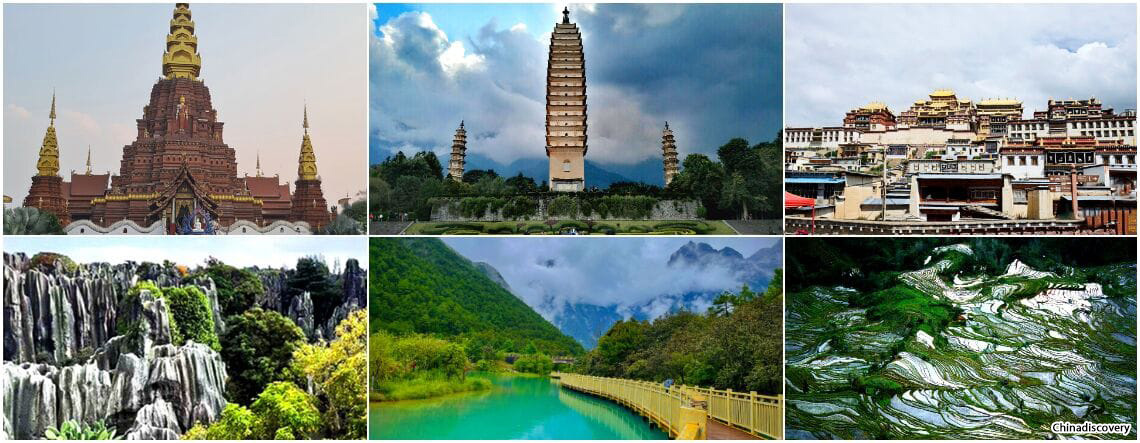
How to Plan a Yunnan Tour | Ultimate Yunnan Trip Planning Guide
Yunnan is located in the southern China, bordering Myanmar, Laos and Vietnam as well as Chinese provinces and regions of Guangxi, Guizhou, Sichuan and Tibet. It is the most diverse province in all China, both in its extraordinary mix of peoples and in the splendor of its landscape .
Knowing Yunnan is an amazing place to visit but still have many questions to plan your Yunnan tour? Doing detailed research before your Yunnan tour will make you travel smoothly and in a well-organized way. We have listed some essential travel information, like best to go, how to get to and within Yunnan, top places to visit, brilliant ethnic culture, festivals & traditional handcraft to experience, where to stay, for your Yunnan trip. Hope to help you make a more reasonable and useful trip plan. Check now!
Yunnan Weather & Best Time to Go
Yunnan generally belongs to subtropical plateau monsoon climate. The highest temperature is in July with an average around 19°C~22°C and the lowest temperature is in January around 6°C~8°C. It is cool in the morning and at night; and warm or hot at noon.
To travel in Yunnan, you should make clear the best time in different regions - Northwestern Yunnan and Southwestern/Southern Yunnan . (a) Come during May to October to Northwestern Yunnan is highly recommended when various kinds of flowers are in blossom on the plateau and other natural scenery could be breathtaking. (b) To visit Southwestern or Southern Yunnan, it is better to come during October to next April when sky is azure and weather is cool.
Below are the recommended best time to visit the popular destinations in Yunnan and you can check for reference.
- Kunming (altitude: 1895 meters): It can be visited all year round.
- Lijiang (altitude: 2418 meters): The best time to travel is March ~ November.
- Shangri-La (altitude: 3300 meters): The best time to travel is May ~ October.
- Dali (altitude: 2052 meters): The best time to visit is March to May, and September to November.
- Yuanyang (altitude: 255 meters): The best time for photography is in Late November to Early March.
- Xishuangbanna (altitude: 1700 meters): It is recommended to visit during November ~ Next April.
To know more info about Yunnan Climate and Weather, please check our Yunnan Weather, Seasons & Best Time to Go in 2024 .
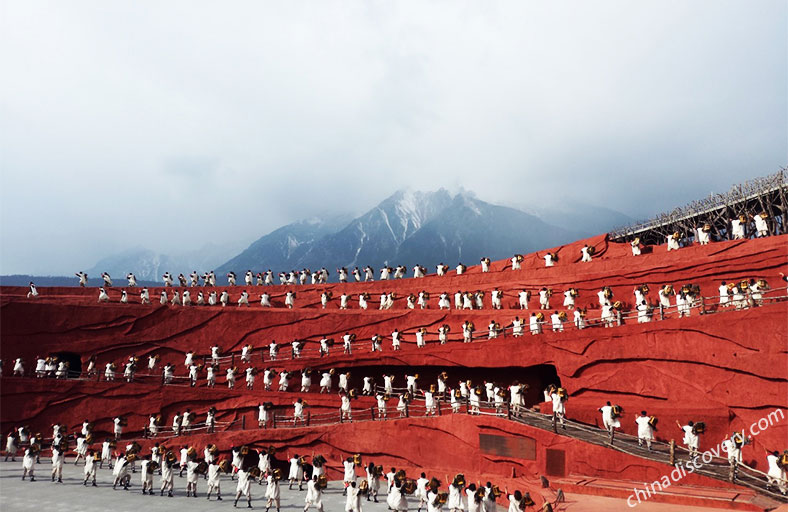
How to Go to & within Yunnan?
How to get to Yunnan and transfer within this amazing vast land? You can take direct flights, high speed trains, normal trains, coaches, and so forth making your travel there without any blocks no matter from the famous domestic cities, places in other countries and regions, or the famous destinations in Yunnan.
Travel to Yunnan by Air & Train
- Flights to / off Yunnan: Travelers can take flights from/to Chengdu, Beijing, Shanghai, Xian, Chongqing, Lhasa, Guilin, Wuhan, and Nanjing to/from Kunming Changshui International Airport, or Lijiang Sanyi International Airport, Dali Huangcaoba Airport, Shangri-La Diqing Airport, Xishuangbanna Saga International Airport.
- Train to / off Yunnan: There are not only trains, but also the advanced and awesome high speed trains from Beijing, Shanghai, Guangzhou, Shenzhen, Guilin, Chengdu, Chongqing, Wuhan, Changsha, Zhengzhou, Guilin, etc. to Kunming so far. >> Check more about Kunming High Speed Trains
Travel within Yunnan Province:
After landing in Yunnan, how to transfer between the top favored destinations, like Kunming, Dali, Lijiang, Shangri-La, Yuanyang, Lugu Lake, etc.? Within this province, convenient flights, distance coaches and trains would escort you among them with great efficiency.
- Kunming - Lijiang (distance: 490 kilometers): Air, Train and Bus are available. Travel by air only takes about 1 hour. If you by high speed train, it will take about about 3-3.5 hours. Most travelers travelers would choose the high speed train to Lijiang. For budget travelers, we recommend you take overnight train from Kunming to Lijiang.
- Lijiang - Shangri-La (distance: about 180 kilometers): Distance coaches are the most frequent transfer method to go between Lijiang and Shangri-La. From about 07:30 to 17:10, there are comfortable coaches departing from Lijang Bus Terminal (丽江客运站) to Shangri-La Bus Terminal (香格里拉客运站), which needs about 4 hours.
- Kunming - Dali (distance: about 332 kilometers): Travelers can transfer by air (about 50 minutes), high speed train (about about 2-2.5 hours, most recommended) and bus (about 4 hours, recommended for budget travelers).
- Kunming - Shangri-La (distance: about 659 kilometers): Travelers can transfer by air (about 80-90 minutes, highly recommended), and bus (about 9.5-15.5 hours, time-consuming and not recommended).
- Kunming - Yuanyang (distance: about 320 kilometers): From Kunming to Yuanyang (元阳), the most recommended way is to take a distance coach or by private car. It takes about 6 hours.
To have more detailed transportation plan or travel to other places, please read our Yunnan Transportation Guide .
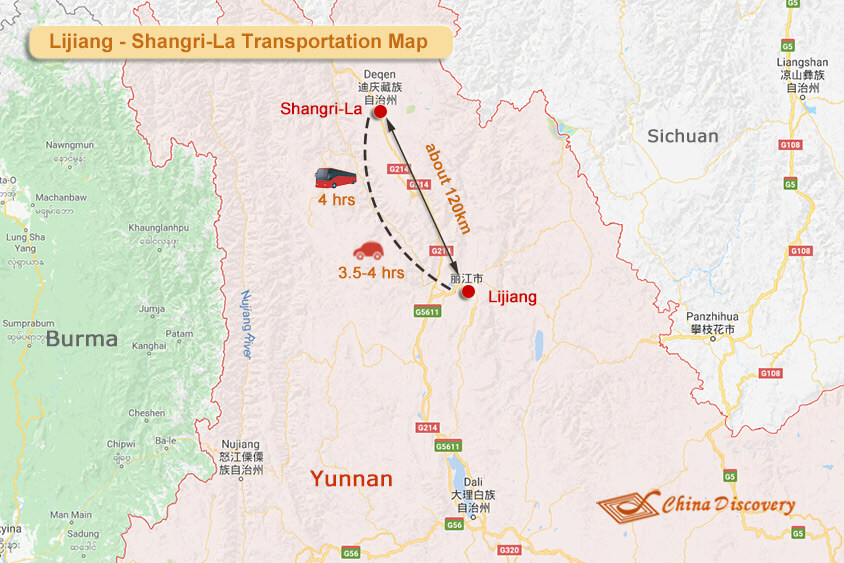
Where to Start or End your Yunnan Tour?
You have already made clear how to get to and transfer within Yunnan province. To plan your trip well and travel smoothly, it is recommended to start or end your Yunnan tour in Kunming or Lijiang.
Kunming is served as the gateway cities to many destinations, like heading to Dongchuan Red Land, visiting Yuanyang Rice Terraces or Jinahsui Old City, viewing lotus flowers in Puzhehei and Xanadu Bamei, or even getting to Dali, Lijiang, Shangri-La from many domestic cities and international countries and regions. While, if you choose Kunming to start your tour, you can select Lijiang as your last stop. It also connects many cities in China and international cities/regions by flight.
That’s to say, you can do Kunming - Dali - Shangri-La - Lijiang route, Lijiang - Shangri-La - Kunming route, or extend longer to do Kunming - Dongchuan - Dali - Shangri-La - Lijiang route, or Kunming - Yuanyang - Jianhsui - Kunming - Dali - Shangri-La - Lijiang route. To see more possibilities of traveling in Yunnan, please check our Top Yunnan Tours .
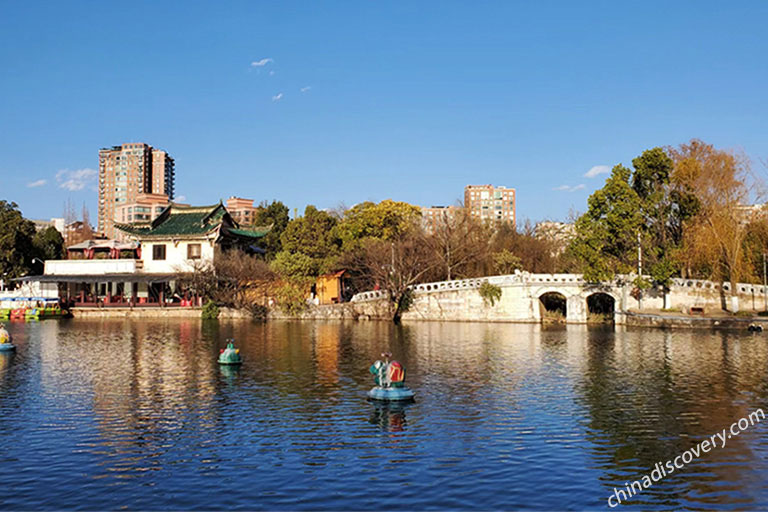
Top Places to Visit in Yunnan
Yunnan is an earthly paradise with many stunning places to visit. Its beauty lies in the high mountains, emerald lakes, thrilling gorges, red fields, rice paddies, Ancient Tea-Horse Road, ancient towns, old streets, exquisite pagodas, traditional folk houses, featured inns, brilliant ethnic minority culture…Actually, it is more than these, every step on this land will surprise you to the most even travel on the road. After the trip, you can say “I have been to a place better than a paradise”.
Top 1: Lijiang
Someone said Lijiang has been commercialized recent years, but, it still should be listed as the top one destination in Yunnan. You can fully feel its charm in the morning or at midnight when Lijiang Old Town becomes quiet. Besides, different kinds of experience are offered, from the traditional Naxi ancient music to exotic cafe’ and bars; from challenging Jade Dragon Snow Mountain climbing to relaxing horse riding…life is romantic, slow-paced and cultural enlightening.
▶ Learn more about: How to Plan a Lijiang Tour | Lijiang Travel Guide | Top Things to Do in Lijiang
Top 2: Kunming
With the convenient transportation network, Kunming is the gateway city for reaching different places. To have one or two days more, you can feel the true charm of “City of Eternal Spring” by visiting Western Hills aside Dianchi Lake, Green Lake, Birds & Flowers Market, as well learn colorful ethnic culture in Yunnan Nationalities Museum and of course, you won’t miss Stone Forest which is 90 kilometers away.
▶ Learn more about: How to Plan a Kunming Tour | Kunming Travel Guide | Top Things to Do in Kunming
Top 3: Shangri-La
Some other places are called themselves the Last Shangri-La, but, Shangri-La in Yunnan is the real one which is depicted in James Hilton’s novel “Lost Horizon”. Snow mountains, beautiful lakes, meadow, Buddhist temples and hospitable Tibetan people…are the highlights for your coming. All the sites are within 1 hour transfer. It is recommended to go with Lijiang and you can travel via Tiger Leaping Gorge where you can appreciate breathtaking gorge view located between Haba Snow Mountain and Jade Dragon Snow Mountain.
▶ Learn more about: How to Plan a Shangri-La Tour | Shangri-La Travel Guide | Top Things to Do in Shangri-La
Top 4: Dali
The time-honored old towns sandwiched between Cangshan Mountain and Erhai Lake, enchanting weather with azure sky and white clouds, historical sites with profound history and legendary stories…these are the reasons to Dali. Spend one to three days relaxing on the banks Erhai Lake and exploring the interesting Bai culture. If you like, you can enter an ancient trading town on the Ancient Tea-Horse Road between Dali and Lijiang, to witness the living scene of trading when attending the Friday Market in Shaxi Ancient Town.
▶ Learn more about: How to Plan a Dali Tour | Dali Travel Guide | Top Things to Do in Dali
Top 5: Yuanyang
Yuanyang Rice Terrace is the masterpiece of god as well as the local industrious and intelligent Hani ethnic minority. You are going to love this beautiful land with fulfilled with spirituality and mystery. It is marked by spectacular terraces that cascade down the slopes of towering Aliao Mountain to the banks of the Hong River. Over the past 1300 years, the Hani people have developed a complex system of channels to bring water from the forested mountaintops to terraces. The rice terrace is a testimonial to demonstrate extraordinary harmony between Hani people and their environment. Yuanyang Rice Terrace is wildly scattered, mainly composed of Bada Scenic Spot, Duoyishu Scenic Spot and Laohuzui Scenic Spot.
▶ Learn more about: How to Plan a Yuanyang Tour | Yuanyang Travel Guide | Top Things to Do in Yuanyang
Besides, you can have nice exploration in Xishuangbanna, Puzheihei, Puer, Tengchong, Baoshan and more places. Want to know deeply? Check our Top 10 Places to Visit in Yunnan .
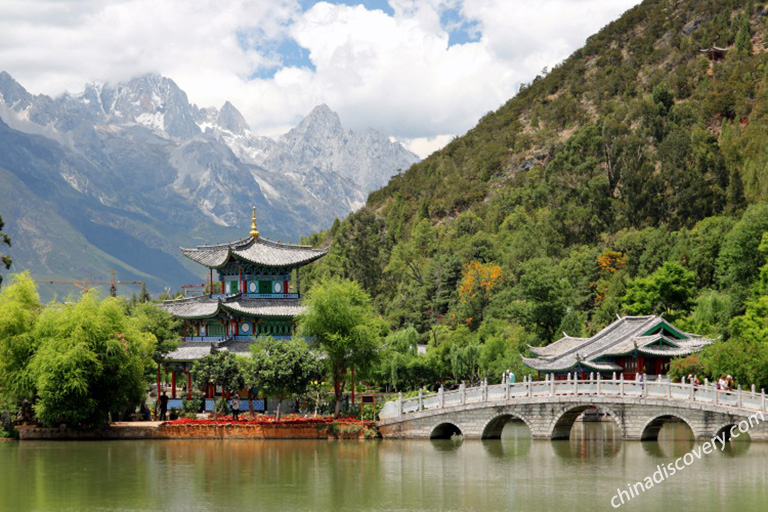
Brilliant Ethnic Minority Culture, Festivals & Traditional Handcraft
Local ethnic family visiting.
Seeing different ethnic minorities who work in the old towns or walk on the road, ethnic facts presented in the museum are not enough. Besides for basic understanding, you have the chance to deeply know them, talk with them and learn their lifestyle where they really live.
- In Nuohei Village around Kunming, you will enter a primitive village with stone and pay a visit to local family to follow the Yi people to learn how to play Yi musical instrument, make Yi’s local food - Baba, or learn Yi embroidery.
- In Xizhou Village of Dali, visit a local Bai family and spend half an hour making Yunnan Cheese, the specialty of Bai ethnic group.
- Around Lijiang Old Town , you can visit a local Naxi family to learn Dongba writing and see their sacrificial dance.
- While, in Shangri-La, pay a visit to local Tibetan family to experience their life on grassland, taste some local snack. And if you like, you can follow them to learn how to make Tibetan butter tea.
Main Ethnic Festivals Held in Top Destinations
There are many festivals held in different regions of Yunnan. If time permits, you can experience their grand festivals and share jollification and happiness together.
>> Check more information about Ethnic Festival in Yunnan
- Tibetan New Year Festival: This is the grandest festival in Diqing Tibetan Autonomous Prefecture. The time of Tibetan New Festival is close to Chinese New Year Festival. It offers a chance to see the sacrificial and worship ceremony, as well as see the traditional Tibetan dance. >> 7 Days Shangri-La Tour with Meili Snow Mountain & Yubeng Village Hiking
- Sanduo Festival: This Festival is the most important festival for Naxi ethnic minority with over 1200 years. It holds on the eighth day of the second month in Chinese lunar calendar. If you happen to travel in Lijiang on this day, you can enjoy Naxi people worship their god - Sanduo God, enjoy singing and dancing in Lijiang Old Town and its Sifang Square as well as appreciate Naxi ancient music. >> 3 Days Romantic Lijiang Tour with Visits to Naxi Kingdom
- March Fair of Bai Ethnic Group: March Fair is the grandest festival for the Bai people who are living in Dali, Yunnan. It holds at the foot of Cangshan Mountain and Dali Old Town. Nowadays, it has developed into the largest market for commodity transaction in the west Yunnan. During the festival, businessmen and local people in and around Dali gather here to participate in the transaction. What’s more, horse-racing, folk dance and songs will be presented by the Bai, Yi, Naxi, Tibetan, and Hui minorities. >> 3 Days Dali Classic Tour
- Water-Splashing Festival: It is the New Year Festival for the Dai and the most important and grandest festival of the year. It is held in mid-April usually from April 13 to April 15 in Jinghong city. Dai people dip branches into the river and sprinkle the water onto others as a way to express their best wishes. You can enjoy this festival at Dai Minority Park and Manting Park. >> 4 Days Xishuangbanna Tour with Tropical Flavor & Dai Culture
- Torch Festival: This festival is the grandest festival of Yi Ethnic Minority which holds on the 24th day of sixth month in Chinese lunar calendar. Travelers can enjoy Torch Festival in Kunming, Chuxiong, Honghe. Also, Naxi, Bai people will light the torches in Lijiang or Dali. >> 4 Days Kunming Jianshui Tour by High Speed Train
- Mosuo People Mountain Worship Festival: Known as Zhuanshan Jie, the Mountain Worship Festival is the grandest festival for Mosuo people held on every July 15 to July 25 of the lunar calendar. The Mosuo people will climb the Gemu Mountain to pay tribute to Goddess Gemu and worship nature. After the ceremony, people light bonfires and boil buttered tea. They eat and sing songs together. Young Mosuo men and women take the opportunity to look for a partner. >> 2 Days Magic Lugu Lake Tour with Mosuo Ethnic Culture
Traditional Ethnic Culture Experience & Handcraft Learning
Yunnan can be called “A Cultural Museum of Human Being” and there are 13 items of traditional handcrafts listed as National Intangible Cultural Heritages. Slower your space when traveling in Yunnan, you can get under the skin and know better about its people with traditional skills on the amazing land.
- In Xizhou Ancient Town of Dali, you have the chance to taste Three-Course Tea of Bai Ethnic Group and witness local life by attending a local morning market.
- In Zhoucheng Tie-dye workshop of Dali, you can follow Bai people to know how to knot and view the process of dying.
- In Shangri-La, there are featured schools to learn how to paint Tangka as well as Learn Tibetan language. If you want short time experience, you can attend the half day course.
- In Nixi Pottery Village out of old town of Shangri-La, you can learn how to make a black pottery with the guidance of local Tibetan handicraftsman.
>> 7 Days Dali Lijiang Shangri-La Inspiring Tour with Ethnic Culture Seeking (Dali / Lijiang / Shangri-La)
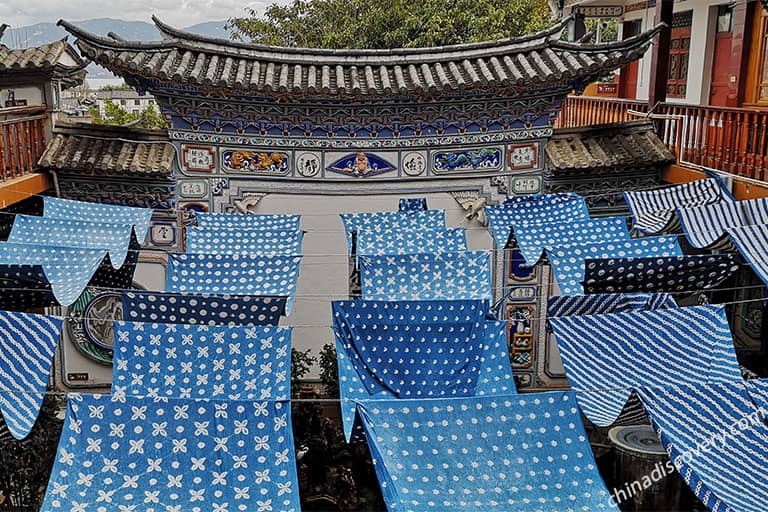
Decide your Travel Length & Suggested Route
For most travelers, they usually spend one to two weeks in Yunnan to cover the highlighted destinations. It takes around 4 days to visit two destinations, 6 days to visit three destinations, 8 days for four destinations, 10 days for five destinations and 11 days for six places.
Kunming Dali Lijiang Shangri-La route is regarded as the golden route in Yunnan, taking 8 days. You can add two days to extend to Dongchuan Red Land from Kunming and continue your trip northwest to Shangri-La. Or, turn to southern Yunnan to Yuanyang/Jianshui from Kunming for around 4 days and then get back to Kunming to finish the Golden route. Check the following sample itineraries for reference. Or, you can contact our professional travel consultant to customize your trip based on your time, date and likes.
>> 8 Days Classic Yunnan Tour (Kunming / Dali / Lijiang / Shangri-La)
>> 10 Days Beautiful Yunnan Tour with Dongchuan Red Land (Kunming / Dongchuan / Kunming / Dali / Lijiang / Shangri-La)
>> 11 Days Amazing Yunnan Tour (Kunming / Yuanyang / Jianshui / Kunming / Dali / Lijiang / Shangri-La)
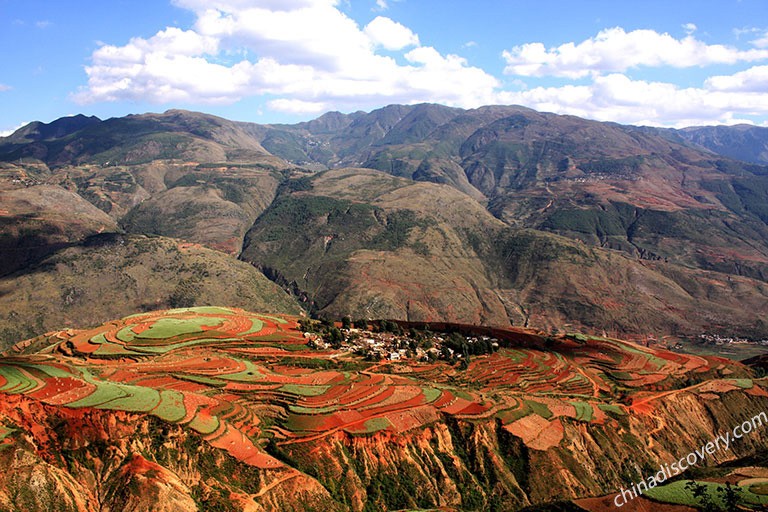
Where to Stay When Visiting Yunnan?
There is no need to worry your accommodation choices in Yunnan. In most of the destinations, you can choose from 3 star hotels to luxury hotels in good locations which are mostly close to downtown area or scenic spots. If you want to stay in a boutique hotel, or featured hostels, you will get an ideal choice. Please check different hotels in Kunming, Lijiang, Shangri-al, Dali and Yuanyang for a look.
>> Top Recommended Hotels in Kunming
>> Top Recommended Hotels in Lijiang
>> Top Recommended Hotels in Shangri-La
>> Top Recommended Hotels in Dali
>> Top Recommended Hotels in Yuanyang
>> Top Recommended Hotels in Jianshui
Have your own accommodation ideas? Please contact us for reservation and we will design a trip well matched with your likes.
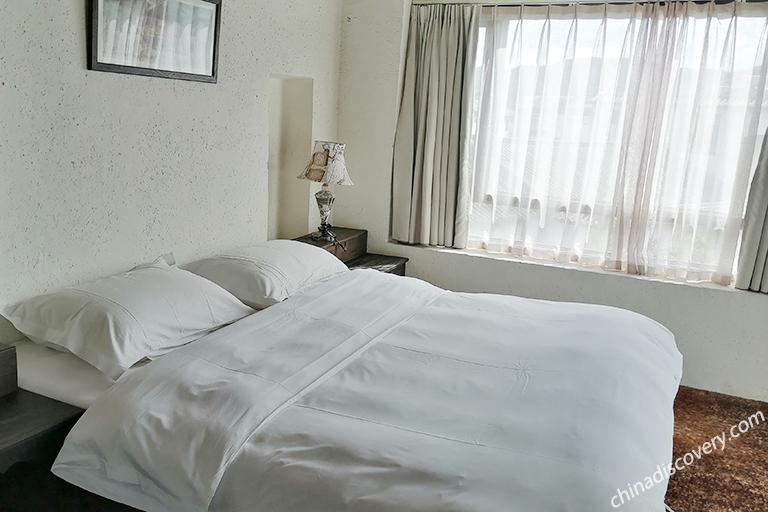
Extended Destinations & Travel Beyond Yunnan Province
Only a Yunnan tour is not complete for your visiting in China. It is a great idea to cover Yunnan with more places around China to savor more amazing landscape, culture, history, ethnic minority customs, food, etc. in one go, such as Guilin with Karst landform wonders, Guizhou with wonderful ethnic beauties, Chengdu with adorable giant pandas, Beijing with profound ancient royal Forbidden City, Shanghai with modern cityscape, Xian with impressing Terracotta Warriors, Zhangjiajie with incredible Avatar Mountains, and more like Hong Kong, Guangzhou, Yangtze River, Lhasa, etc.
10 Days Classic Sichuan & Yunnan Highlights Tour (Chengdu / Leshan / Mount Emei / Lijiang / Shangri-La / Kunming)
9 Days Guilin Karst Landscape & Diverse Yunnan Tour (Guilin / Lijiang / Shangri-La / Kunming)
8 Days Brilliant Yunnan & Zhangjiajie Avatar Mountains Tour (Lijiang / Shangri-La / Kunming / Zhangjiajie)
14 Days Wild China Tours from Shanghai to Yunnan on Expresses (Shanghai / Zhangjiajie / Kaili / Kunming / Lijiang / Shangri-la / Kunming)
If you have other travel ideas or any questions, please feel free to contact us and our experienced travel consultants will customize a satisfactory for you.
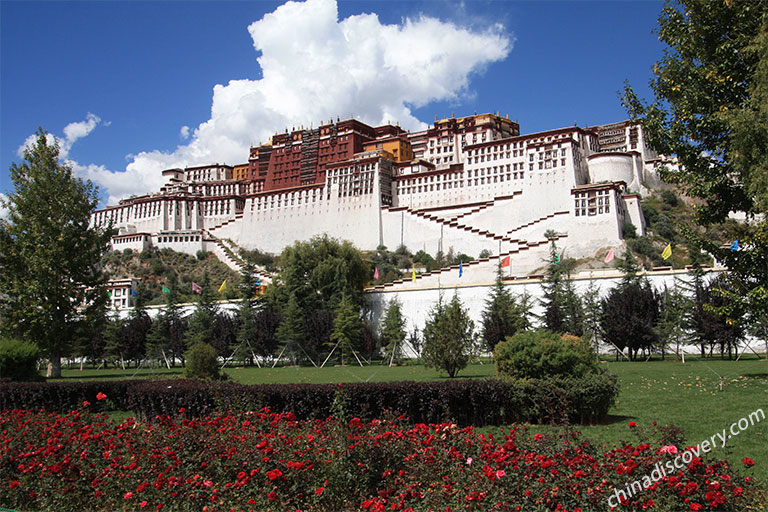
Keep Reading on How to Plan a Yunnan Tour
- How to Plan a Kunming Tour
- How to Plan a Lijiang Tour
- How to Plan a Kunming Lijiang Tour
- How to Plan a Dali Tour
- How to Plan a Shangri-La Tour
- How to Plan a Yuanyang Tour
Useful Yunnan Travel Articles
- Yunnan Travel Guide
- Kunming Travel Guide
- Lijiang Travel Guide
- Dali Travel Guide
- Shangri-La Travel Guide
- Yuanyang Travel Guide
- Xishuangbanna Travel Guide
- Luoping Travel Guide
- Top 10 Places to Visit in Yunnan
- Yunnan Attractions
- Yunnan Transportation
- Yunnan Weather & Seasons
- Yunnan Maps
- Yunnan Minorities
- Yunnan Ethnic Festivals
- Yunnan Ethnic Markets
Recommended Yunnan Tours
Top 3 Yunnan tours chosen by most customers to explore Yunnan in the best way. Check the detailed itinerary, or tailor your own trip now with us.
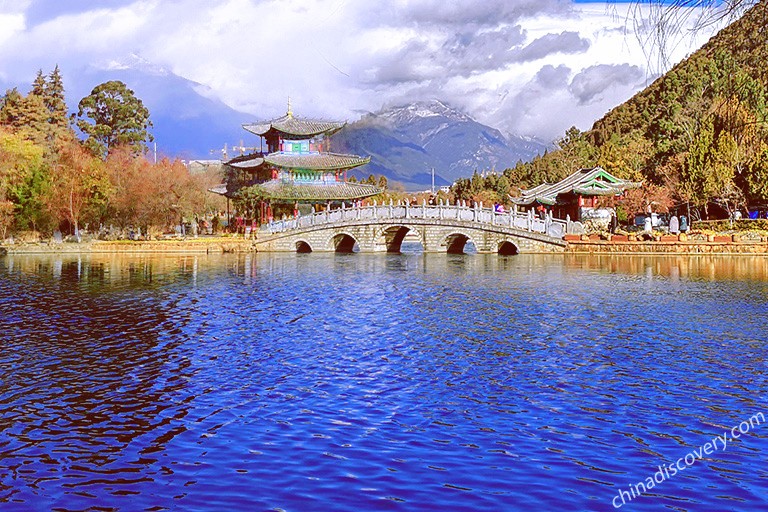
6 Days Best of Yunnan Tour (Lijiang, Shangri-La, Kunming)
Lijiang / Shangri-La / Kunming
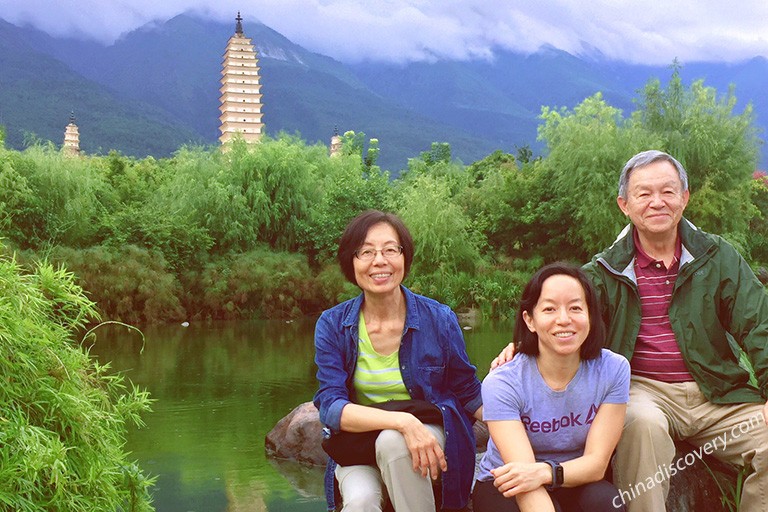
8 Days Classic Yunnan Tour
Kunming / Dali / Lijiang / Shangri-La
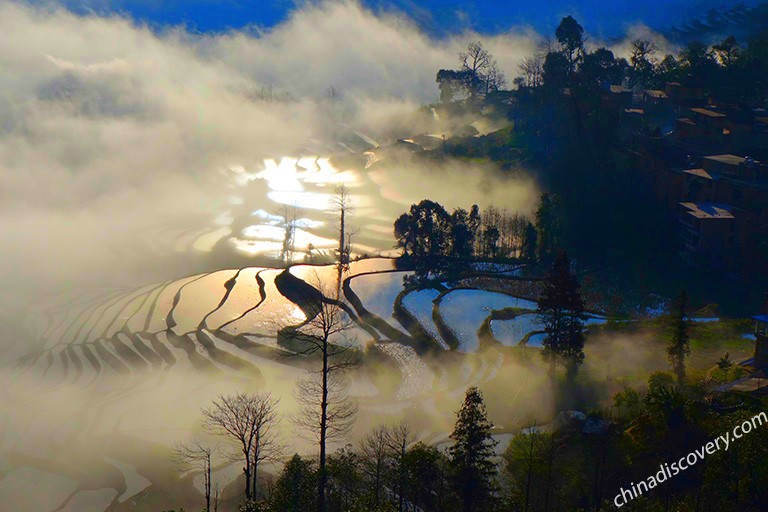
11 Days Amazing Yunnan Tour
Kunming / Stone Forest / Yuanyang / Jianshui / Kunming / Dali / Lijiang / Shangri-La
Start planning your tailor-made holiday to China by contacting one of our specialists. Once inquired, you’ll get a response within 0.5~23.5 hours.

Have a question? Get answers from our travel experts or guests
- Your Question:
- Your Email:
- Affordable and valuable price
- 100% tailor-made packages
- Highly rated customers reviews
- Efficient customer support
China Tours
- Top 10 China Tours
- Classic China Tours
- China Tours from Beijing
- China Tours from Shanghai
- China Tours from Hong Kong
- China Tours from Chengdu
- Short China Trips
- Customize China Tour
- China Panda Tours
- Family Tour with Kids
- High-Speed Train Tour
- Silk Road Travel
- Yangtze River Cruise
- Hiking & Trekking Tours
- Photography Tours
- China Minority Travel
- Beijing Shanghai Tours
- Shanghai Yangtze Tours
- Chengdu Jiuzhaigou Tours
- Chengdu Lhasa Tours
- Suzhou Hangzhou Tours
- Guilin & Yangshuo
- Zhangjiajie
“Very good experience”
“WONDERFUL 25 DAYS IN CHINA - PRIVATE TOUR”
“Awesome China tour from northeast to southwest”
Any questions, please email us at: [email protected] or call us at: 86-19138970032 (Monday-Friday 9 a.m. to 6 p.m. GMT+8)
- Terms & Condition
- Privacy Policy
- Customer Support
Copyright © 2011-2024. All rights reserved.
Cookie policy
We use cookies to give you the best experience on our website. Continue using our website means you agree with our cookie policy. For more info, please read here .
Yunnan Travel Guide
Yunnan facts:, cities in yunnan.
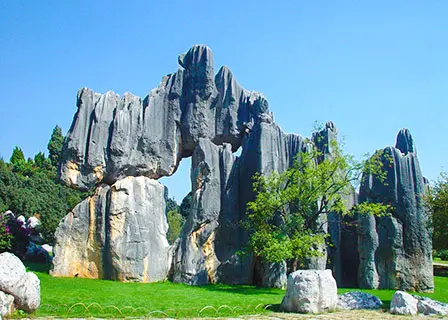
- Attractions
- Transportation
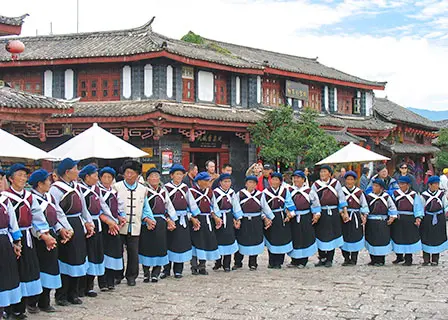
- Lijiang Tours
- Xishuangbanna
Famous Attractions
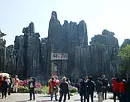
Yunnan Introduction

You May Like
Yunnan tours.
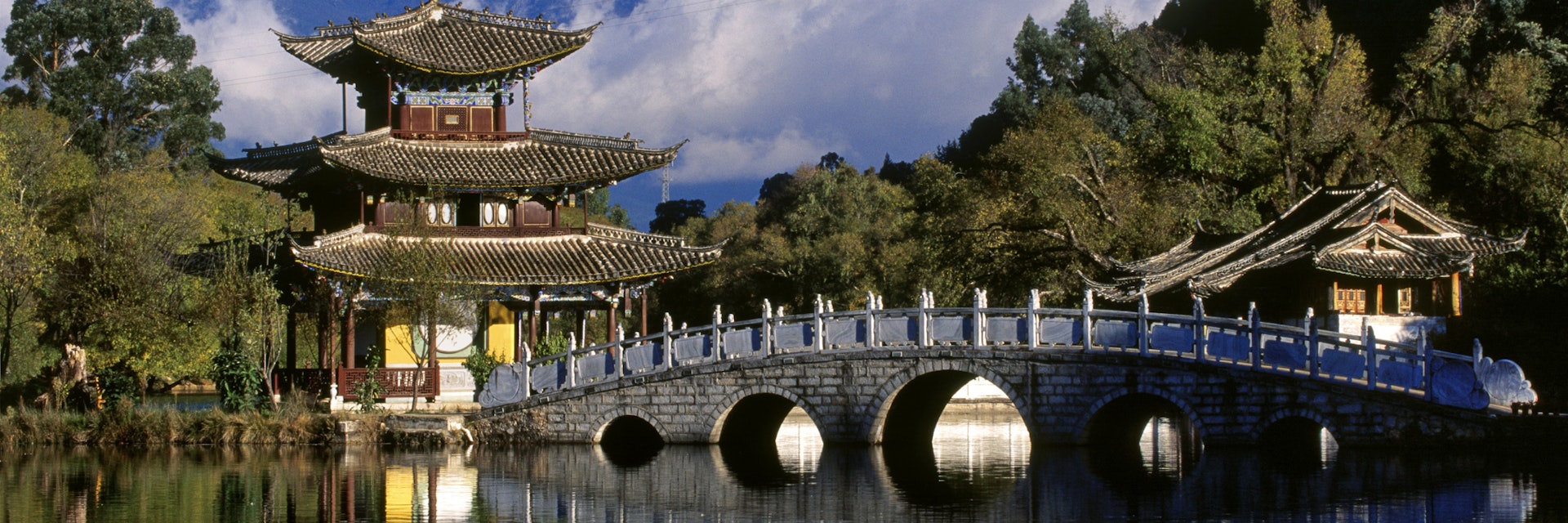
Getty Images/Hemis.fr RM
Yunnan (云南, Yúnnán) is the most diverse province in all China, both in its extraordinary mix of peoples and in the splendour of its landscapes. That combination of superlative sights and many different ethnic groups has made Yunnan the trendiest destination for China’s exploding domestic tourist industry.
Your next trip starts here
Go from dreaming to planning with trip planning options made to help you craft your ideal itinerary.
Attractions
Must-see attractions.

Bada Rice Terrace
Bada is one of the finest rice terraces at Yuanyang to catch the sunset at. If you only have time for one terrace, this is it.

Golden Temple
The Golden Temple Scenic Area is equal parts religious space, forest park, botanical garden and open-air sculpture museum; it covers 118 hectares on the…

Mingyong Glacier
Tumbling off the side of Kawa Karpo peak is the 12km-long Mingyong Glacier. At over 13 sq km, it is not only the lowest glacier in China (around 2200m)…
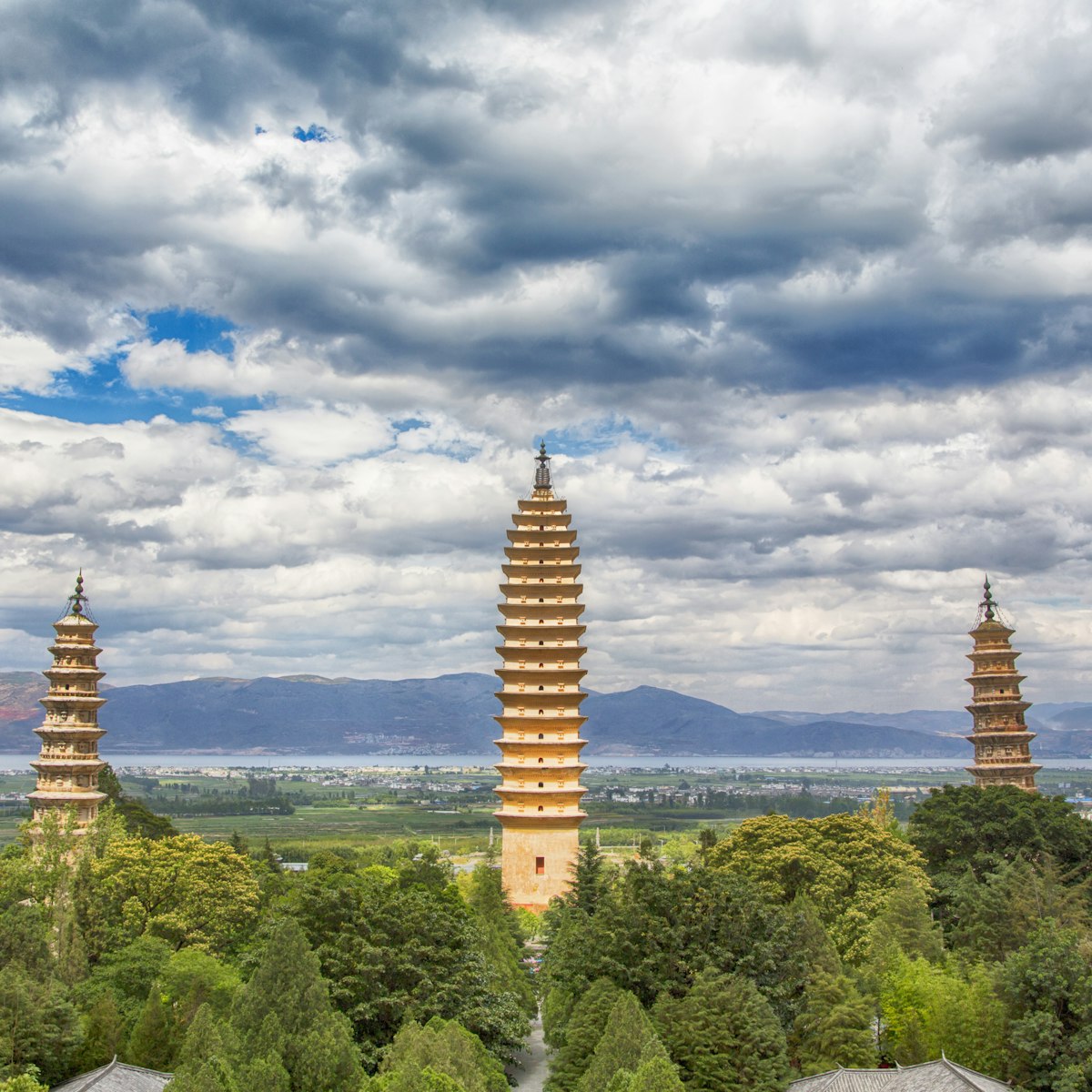
Three Pagodas
Absolutely the symbol of the town and region, these pagodas, a 2km walk north of the north gate, are among the oldest standing structures in southwestern…

Bamboo Temple
Tucked away atop a winding mountain road up the forested hills northwest of the city centre, this serene temple is definitely one to be visited by…

Gantong Temple
Originally constructed in the Tang dynasty, this was once the most important temple in the Dali area. Only one of the original 36 halls remains, but…

Duoyishu Rice Terrace
Located about 25km from Xinjie, this rice terrace has the most awesome sunrises. As it's walking distance from Pugaolao it's an easy choice for the…
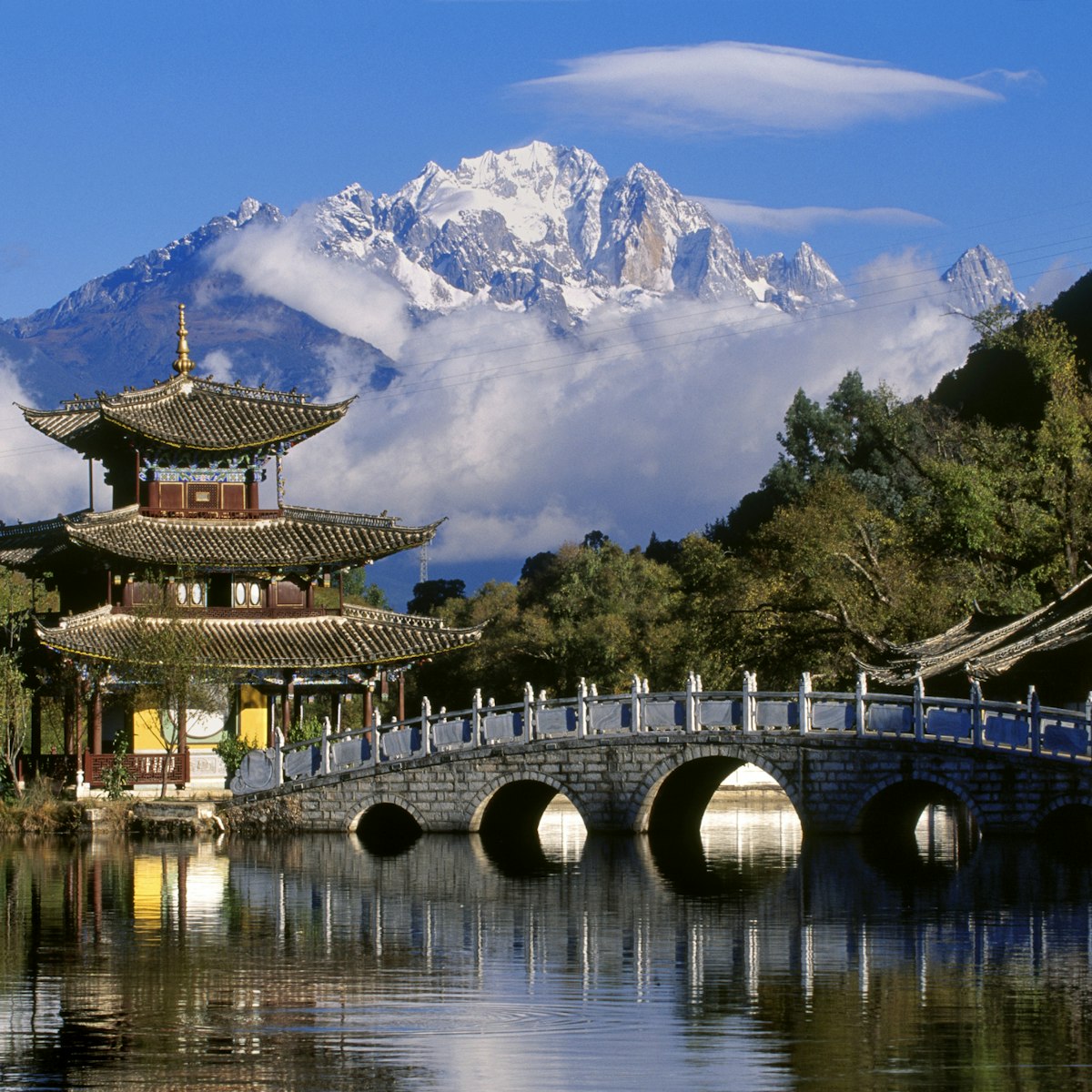
Black Dragon Pool Park
On the northern edge of town is Black Dragon Pool Park; the view from here of Jade Dragon Snow Mountain is an obligatory photo stop in southwestern China…
Latest stories from Yunnan
Filter by interest:
- All Interests
- Adventure Travel
- Art & Culture
- Beaches, Coasts & Islands
- Food & Drink
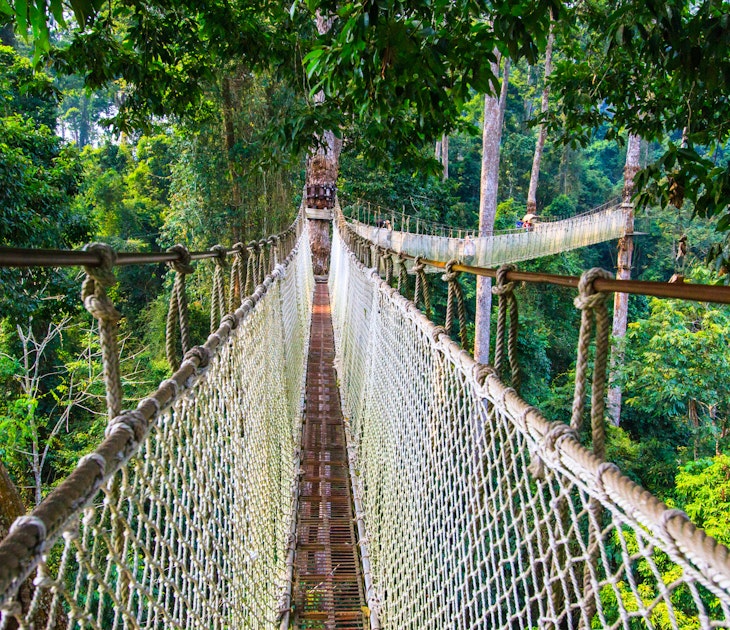
Jan 10, 2022 • 6 min read
Xishuangbanna in southwest China is more accessible than ever before. Head here for lush outdoor adventures, spotting wildlife and unique village stays.
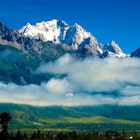
Aug 31, 2017 • 5 min read
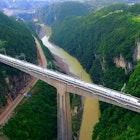
Aug 24, 2017 • 7 min read

May 25, 2017 • 5 min read

Apr 20, 2012 • 2 min read

Oct 26, 2011 • 3 min read
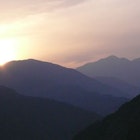
Nov 10, 2009 • 3 min read
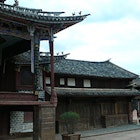
Nov 9, 2009 • 3 min read
Purchase our award-winning guidebooks
Get to the heart of Yunnan with one of our in-depth, award-winning guidebooks, covering maps, itineraries, and expert guidance.
Yunnan and beyond
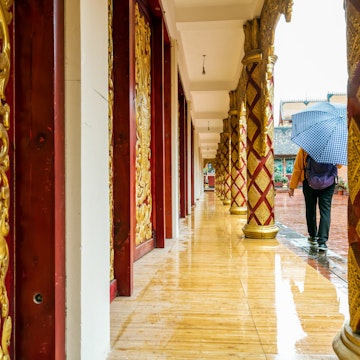
- ✉️
The complete Travel Guide to Yunnan (云南), the most diverse Chinese province
- April 2, 2024
Yunnan is one of the most beautiful and diverse provinces in China. In this travel guide, you can find the top things to do and see.
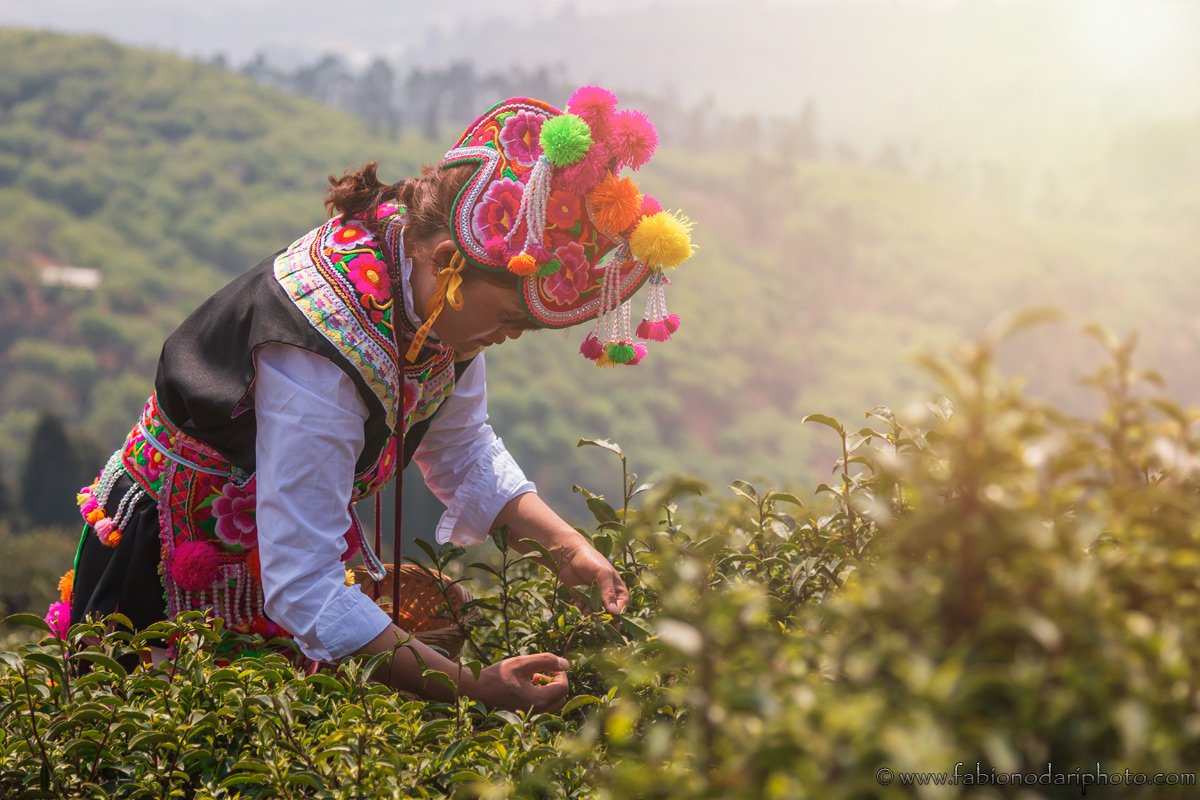
Yunnan Province in China is a beautiful, diverse, landlocked region known for its stunning natural beauty, rich cultural heritage, and delicious cuisine. With its vibrant cities, picturesque countryside, and unique ethnic minority groups , Yunnan offers travellers a unique and unforgettable experience.
One of the main reasons why Yunnan is such a unique province is its border position, far away from Beijing. There is a local saying: “Yunnan, where the Mountains are High, and the Emperor is Far, Far Away.” Even though this is an easily accessible province, historically, this wasn’t the case, making the local culture so different from the rest of the country.
Getting to Yunnan
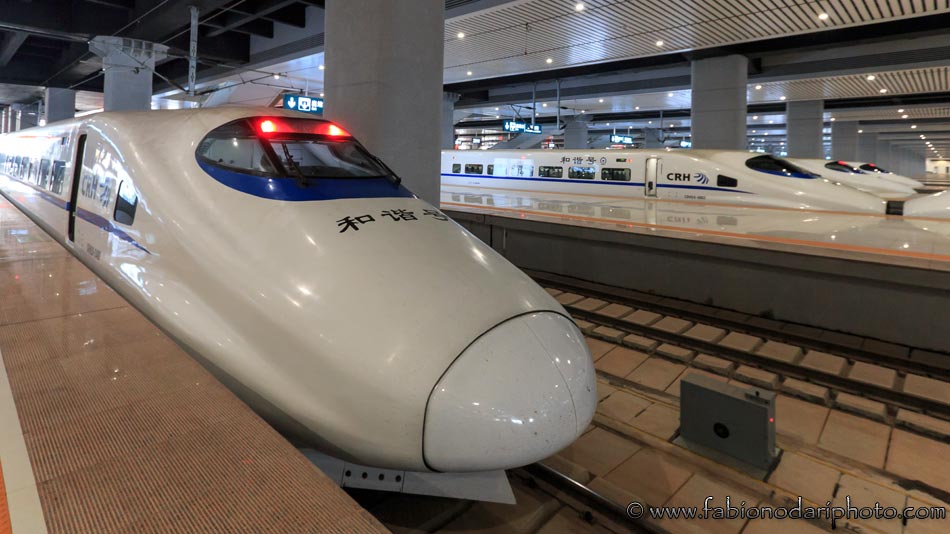
Yunnan is located in southwestern China and is easily accessible by air, train, or bus. The province’s capital city, Kunming , is a central transportation hub with several daily flights to and from all major Chinese cities. Alternatively, you can also get to Kunming by train. As always, when travelling in China, the best website in English to book trains, hotels, and flights is Trip.com. Other websites have fewer options and are generally more expensive .
In the past few years, the government has built new high-speed railways that connect most of the province. You can now get to Shangri-la in the north, Xishuangbanna in the south, and almost every city. In short, travel to and from Yunnan and all around the province has never been easier.
Things to do in Kunming, the spring city
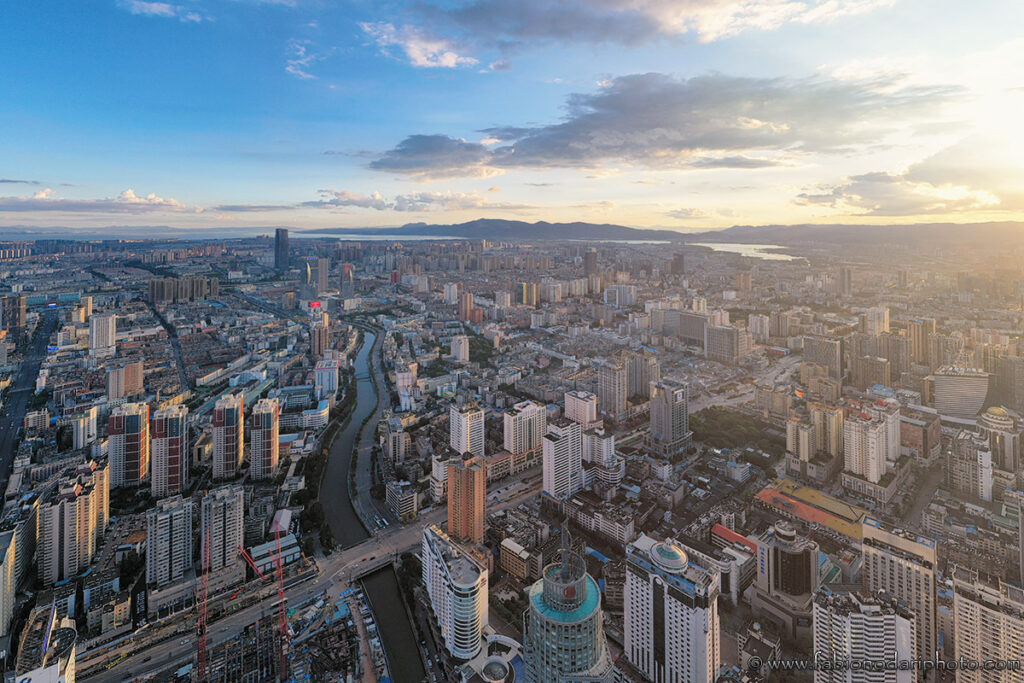
Kunming, the capital, is known for its mild climate. The city is also home to several cultural and historical attractions. Here are some of the top things to do and see in Kunming ( here you can find my complete Kunming Travel Guide ):
- Stone Forest 石林: The Stone Forest is a natural geological wonder made up of towering karst formations. It is a popular attraction in Kunming and is a must-see for anyone visiting the city.
- Kunming Old Town 古城: Kunming’s Old Town is a charming area full of narrow streets, ancient temples, and traditional shops and restaurants. It is a great place to wander and explore, and you can learn more about the city’s history and culture, although, like many other similar places, the town is not old: it has been recently renovated.
- Western Hills 西山: The Western Hills are a series of picturesque hills and forests on Kunming’s western edge. The area has many temples, cultural attractions, and beautiful city views.
- Golden Temple 金殿: The Golden Temple is a Buddhist temple on the top of Mingfeng Mountain. It is known for its beautiful architecture and intricate gold leaf decorations and is a popular destination for tourists and locals.
- Yunnan Provincial Museum 云南省博物馆: The Yunnan Provincial Museum is a great place to learn more about the history and culture of Yunnan province. It has an extensive collection of artifacts and exhibits that showcase the region’s diverse history and culture and is free of charge.
- Green Lake Park 翠湖: Located in the city’s center, Green Lake Park is a popular spot for locals and tourists. It is beautiful in early spring when all the trees bloom.
Interesting places around Kunming
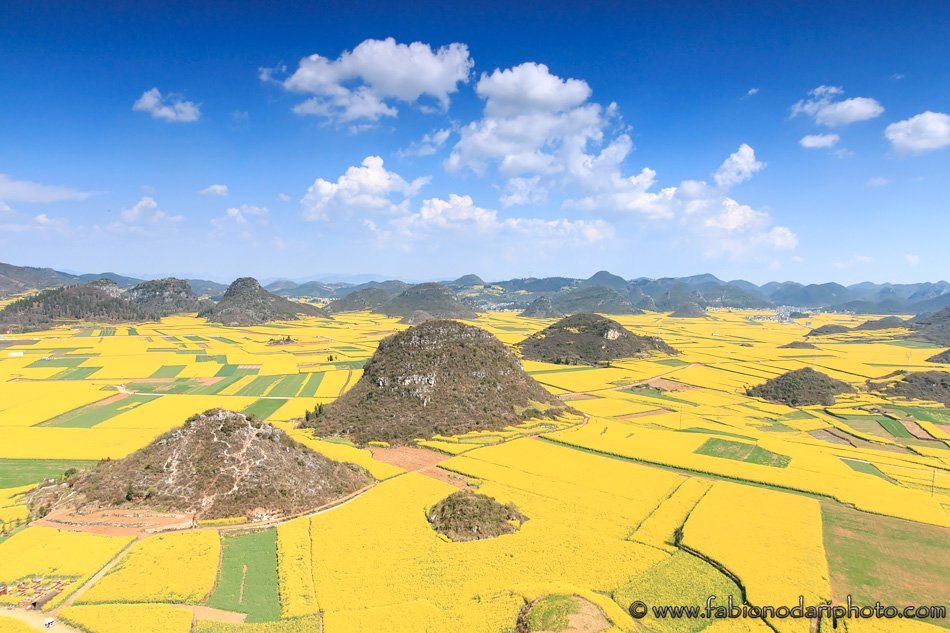
- Luoping 罗平: One of the most interesting places to visit is Luoping. Famous for its huge rapeseed flower fields, remember that it’s worth going there only between February and April. I wrote a detailed guide about it that you can find here.
- Yiliang 宜良: Yiliang is a small town located only 1 hour by bus from Kunming. It’s famous for its Roast Duck , the Colored Rice Fields and the beautiful Jiuxiang caves.
- Mile 弥勒 : another small town located only 30 minutes from Kunming, has become popular thanks to a new art park called Dongfengyun (东风韵). Here you can read my travel guide.
- Fuxian Lake 抚仙湖: Fuxian is the third largest lake in Yunnan and the third deepest in China. If you’re planning a trip without straying too far from Kunming, Fuxian is the right option. Here you can find my detailed travel guide.
- Puzhehei 普者黑: famous for the typical karst hills, the numerous rivers and ponds, and many caves. Summer is the best season to visit when the ponds are filled with lotus plants in full bloom, which makes the landscape even more beautiful. You can find my travel guide here.
Top things to see in Southern Yunnan

- Yuanyang Rice Terraces 元阳: these are my favorite rice terraces in China. Since 2013, they have been part of the UNESCO World Heritage sites. Keep in mind that the best season is during winter. Here you can find more info.
- Xishuangbanna 西双版纳: located on the border between Myanmar and Laos and crossed by the Mekong River, Xishuangbanna is often considered the Thailand of China. Due to its remote location in a province, Yunnan, which historically is also one of the remotest in China, not many people have heard about this place. Here you can find my travel guide.
- Pu’er 普洱: you might have heard about this place if you like drinking tea. In the past few years, it has become one of the most popular types of tea in China. The city, formerly known as Simao, doesn’t offer that much, but you can explore the surrounding tea and coffee plantations. Fun fact: 99% of the coffee produced in China comes from Yunnan, and Pu’er is an important production center.
Top things to see in Northern Yunnan
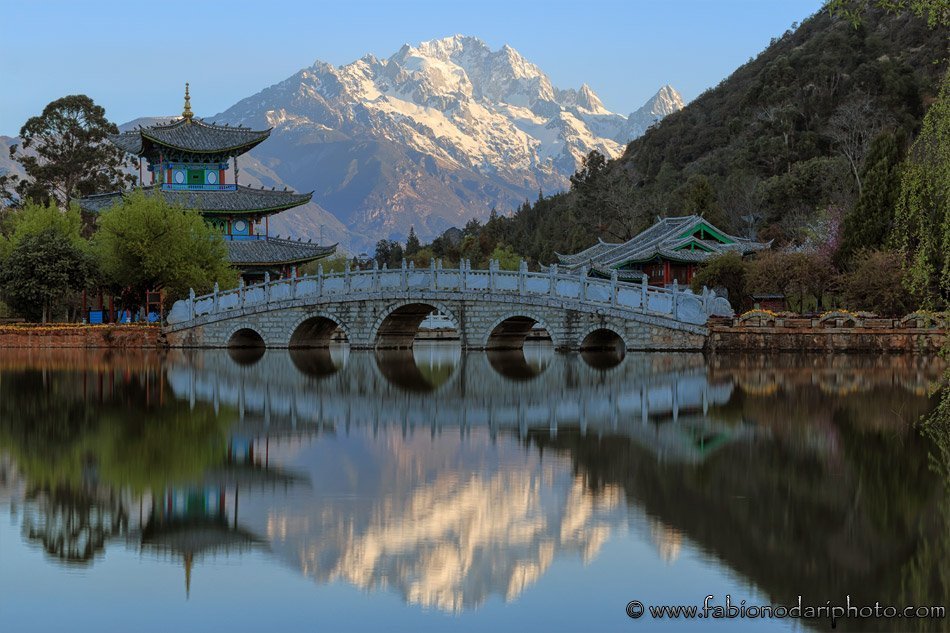
- Lijiang 丽江 : this is likely the most famous place in Yunnan. Some people think it’s too touristy, and they have a point. Nevertheless, a visit to Yunnan is incomplete until you visit the Old Town ( here is my guide ). The good thing about Lijiang is that it can be used as a starting point to explore other nearby places like Jade Dragon Snow Mountain 玉龙雪山.
- Tiger Leaping Gorge 虎跳峡 : at a maximum depth of approximately 3,790 meters (12,434 feet) from the river to the mountain peak, Tiger Leaping Gorge is one of the deepest and most spectacular river canyons in the world. It can be visited with a day trip (but 2 days are better) from Lijiang.
- Dali 大理: along with Lijiang, Dali is the other most famous place in Yunnan. The old town used to be the capital of the ancient Nanzhao Kingdom. It’s a touristy spot like Lijiang, but it’s worth visiting ( here is my guide ).
- Shangri-La 香格里拉: the principal city of the Tibetan area, Shangri-La lies at an elevation of over 3000 meters. You can visit the ancient town, destroyed in a fire a few years ago, that has since been rebuilt. It still attracts many tourists, especially during the summer when people try to escape from the scorching heat in the rest of China. Here is my Shangri-La travel guide . I recommend spending a few days there to explore more remote areas, such as Yubeng . You can find my guide to Shangri-La here.
- Shigu 石鼓: located along the ancient Tea Horse Road, Shigu is also famous for the 140-degree bend of the Yangtze River. You can hike a small hill to have a beautiful aerial view of the landscape. Here is my detailed guide.
- Baisha 白沙 and Shuhe 束河 old towns: these two old towns are located a few km from Lijiang, and you can visit both of them with a day trip. Recommended. Here is my guide to Baisha.
- Shaxi 沙溪: halfway between Lijiang and Dali, Shaxi is a small village almost forgotten by tourists. It’s a city of farmers, but since 2000, the local government has started a program of renovation of the most important buildings. In my opinion, it’s worth spending a night there. Here you can find my guide.
- Dashanbao 大山包: one of the less known places in Yunnan, this is the right place to visit if you are mainly interested in visiting remote places with a lot of nature. Here is my travel guide.
- Dongchuan 东川: also called Dongchuan red land, this area is quite interesting to visit around autumn when the crop is harvested, and you can see the red soil, rich in iron. Here is my travel guide.
- Dulongjiang 独龙江: This is one of the most remote areas in the province where you can find the last women of the Dulong minority with tattooed faces. I’ve talked about it here.
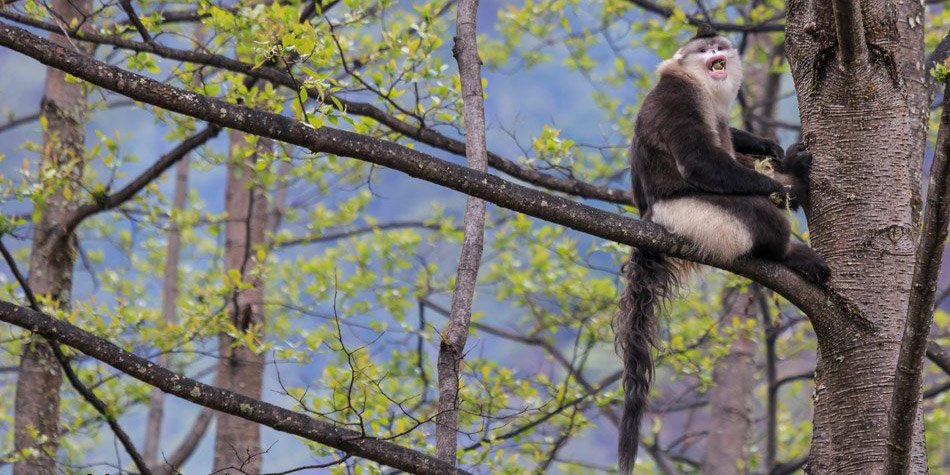
If you decide to visit Shangri-La and are interested in wildlife, don’t forget to check out Baima, where you can observe the rare Yunnan Snub-Nosed Monkey. I wrote an extensive article about the conservation efforts in the area. You can check it out here.
Safety and Health
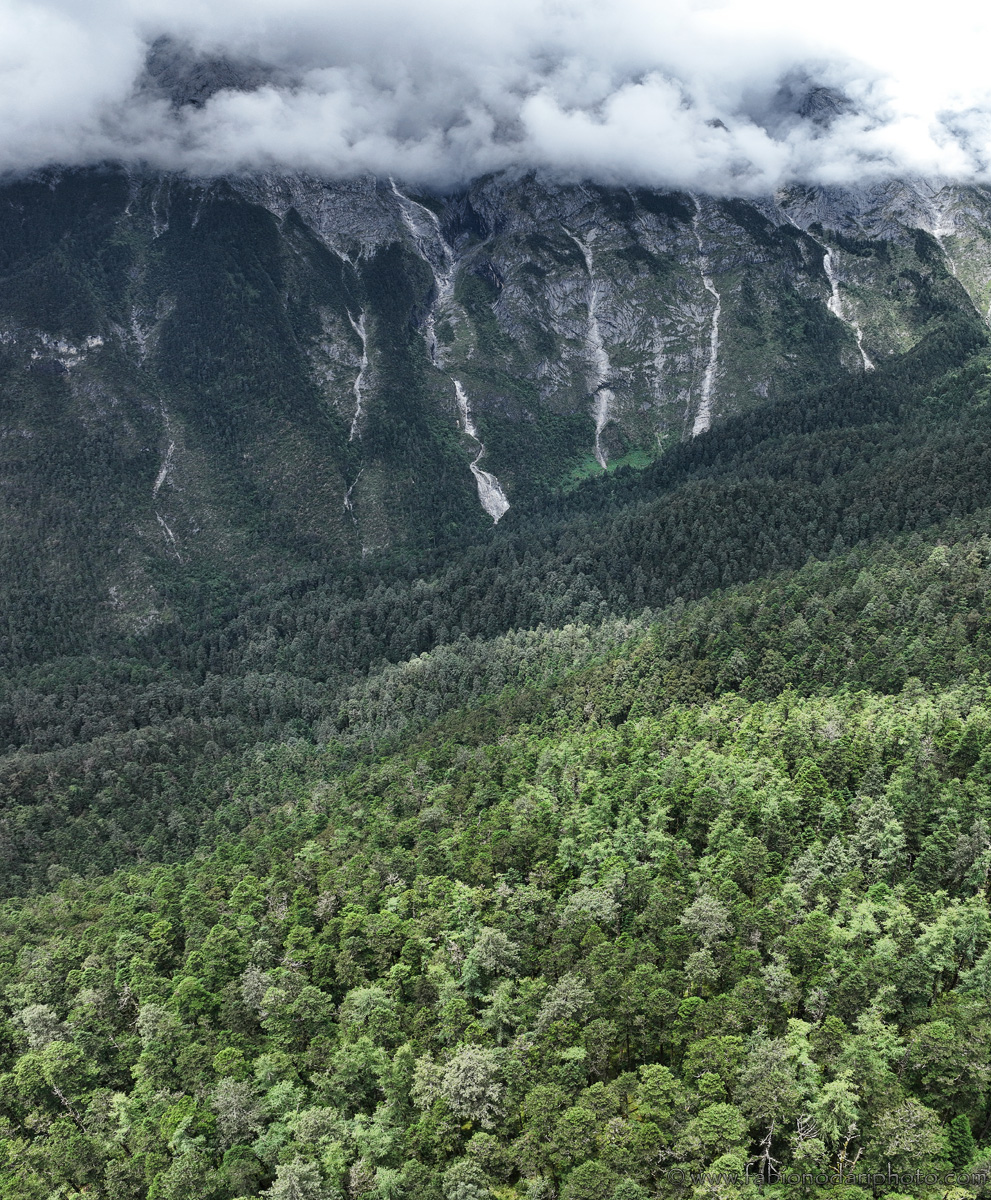
Yunnan is generally a safe place to travel. One thing to keep in mind is related to its geography. The province is mainly located at a high elevation , so you may experience altitude sickness if you are not used to it, especially if you fly from other places in China. Kunming, the capital, lies at an elevation of 1800 meters, and Shangri-La is well over 3000 meters.
In terms of personal safety, Yunnan is pretty safe. I lived there for several years, and I’ve never heard of anything particularly scammy (unlike bordering Vietnam ). This being said, always pay particular attention to your phone.
Yunnan is a beautiful and diverse region that offers travelers a unique and unforgettable experience. Whether you are interested in exploring the vibrant cities, experiencing the rich culture and traditions of the ethnic minorities, or taking in the stunning natural beauty of the province, Yunnan has something for everyone. If you must pick only ONE province to visit in China, I’d recommend Yunnan.
Here, you can find my complete travel guide to China.
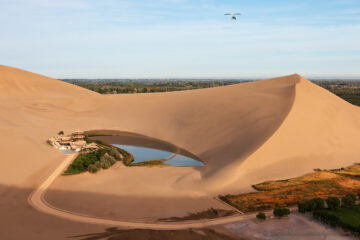
Travel Guide to Dunhuang and its surroundings
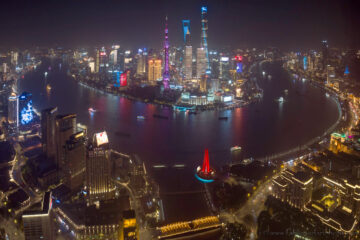
China Travel FAQ: Your Essential Guide for First-Timers

The 15 Cheapest and Most Expensive Countries to Live in 2024
Leave a reply cancel reply.
Your email address will not be published. Required fields are marked *
- Yunnan Tourism
- Yunnan Hotels
- Yunnan Bed and Breakfast
- Yunnan Vacation Rentals
- Flights to Yunnan
- Yunnan Restaurants
- Things to Do in Yunnan
- Yunnan Travel Forum
- Yunnan Photos
- All Yunnan Hotels
- Yunnan Hotel Deals
- Last Minute Hotels in Yunnan
- Things to Do
- Restaurants
- Vacation Rentals
- Travel Stories
- Rental Cars
- Add a Place
- Travel Forum
- Travelers' Choice
- Help Center
Any restrictions for foreigners - Yunnan Forum
- Asia
- China
- Yunnan
Any restrictions for foreigners
- United States Forums
- Europe Forums
- Canada Forums
- Asia Forums
- Central America Forums
- Africa Forums
- Caribbean Forums
- Mexico Forums
- South Pacific Forums
- South America Forums
- Middle East Forums
- Honeymoons and Romance
- Business Travel
- Train Travel
- Traveling With Disabilities
- Tripadvisor Support
- Solo Travel
- Bargain Travel
- Timeshares / Vacation Rentals
- China forums
- Yunnan forum

Honghe area - Yuanyang, Jianshui,
Dali, Lijiang and Shangrila.

No. No travel restrictions. Whether you are foreign or Chinese makes no difference in these places. All tourist dollars are welcome.
This topic has been closed to new posts due to inactivity.
- My good guide Ms Rachael-Naxi - Lijiang & Shangrila today
- Good guide and driver in Lijiang - Mr Zeng today
- Kunming-Dali-Lijiang November 2023 Apr 08, 2024
- Yuxi to Hekou Apr 06, 2024
- Day or overnight trip and driver Apr 05, 2024
- Transport options from Lijiang to Guilin (no flights) Apr 03, 2024
- Day trip to Rice Terraces from Jianshui Mar 29, 2024
- I highly recommend Steven Wen as a Lijiang-based driver Mar 27, 2024
- Kunming to Lijiang flight or train? Mar 27, 2024
- Any hotel within walking distance to Kunming Changshui Airp? Mar 25, 2024
- Kunming International Airport Taxi Mar 23, 2024
- Seattle/ Vancouver/ San Francisco to Kunming, via? Mar 16, 2024
- HSR to Dali from Kunming Main Station in the City. Mar 13, 2024
- Baoshan village Mar 04, 2024
- best way to travel from Hong Kong-Ljiang-Shangri-la 5 replies
- Shaxi? 9 replies
- Bus from Hekou to Yuanyang, then to Kunming? 4 replies
- From Shanghai: Dali > Lijiang > Shangri-la or ? 4 replies
- Flights from Beijing to Kunming 4 replies
- Weather in March, April and May 3 replies
- Visit to Yunnan in Mid September 21 replies
- What's the latest on buses from Kunming to XiShuangBanna? 7 replies
- Kunming/ shangri-la/lijiang in 6 days 7 replies
- Soft seats or soft sleepers Kunming to Dali/Lijiang? 11 replies
Yunnan Hotels and Places to Stay

Search Smartraveller

Latest update
Exercise a high degree of caution in China overall.
Other levels apply in some areas.
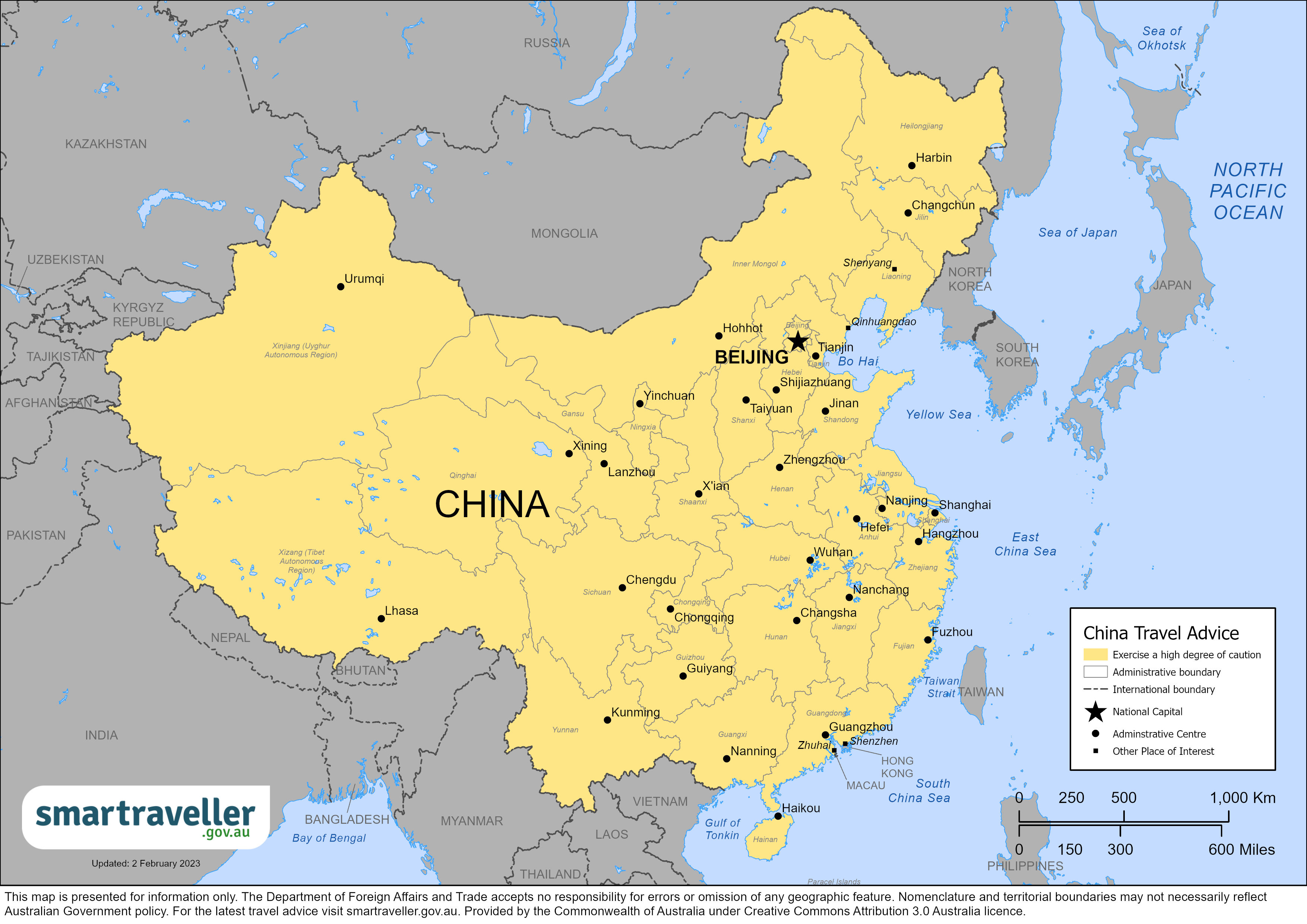
China (PDF 1.07 MB)
Asia (PDF 2.21 MB)
Local emergency contacts
Fire and rescue services, medical emergencies, advice levels.
Exercise a high degree of caution in China overall.
Exercise a high degree of caution in Tibet and Xinjiang.
Exercise a high degree of caution in Tibet and Xinjiang due to the security situation and associated measures.
- Petty crime occurs. Criminals target travellers in crowded areas, including on public transport. Resisting can lead to violence.
- Scams targeting travellers can lead to loss of money, violence and serious assault. Report scams to the nearest police station.
- Armed attacks are a risk in remote border regions. Be careful if travelling in these areas.
- The Chinese Government strictly controls demonstrations. Authorities may arrest protesters. Avoid protests and large gatherings. Don't photograph or video protests.
- Increased security measures are in place in Xinjiang. Be ready to show photo ID if asked.
- There's civil unrest and political tension in Tibet. Get permission from Chinese authorities before you go. You can only travel to Tibet as part of an organised tour.
Full travel advice: Safety
- Tap water in China may not be safe to drink. Drink only bottled water with intact seals.
- People have died from bird flu in China. Stay away from live poultry. When preparing food, handle poultry properly and ensure it's thoroughly cooked.
- HIV/AIDS is a significant risk in China. Take precautions if engaging in activities that expose you to the risk of infection. Ask for sterilised equipment when receiving medical treatment.
- Animal and human rabies and hand, foot and mouth disease are common. Be careful with both wild and domestic animals in China. Wash your hands carefully and regularly. Take other hygiene precautions.
- High pollution levels are a problem in major cities. Follow the advice from local authorities on days with harmful pollution.
Full travel advice: Health
- The Australian Government can't intervene in the Chinese justice process. We also can't help if you're a dual national and don't enter China on your Australian passport.
- Chinese law treats a person aged 12 years and older as an adult. China has strict laws and severe criminal punishments including the death penalty and life imprisonment.
- You must always carry identification and show it to the police if they ask.
- Chinese authorities undertake random drug testing on foreign nationals and can prosecute individuals who return a positive test result regardless of when or where the drugs were taken .
- Many business and employment issues may be considered criminal matters in China. Penalties are severe. Get professional legal advice before entering into any employment or commercial contract in China.
- If you're a former Chinese citizen, authorities may treat you as a citizen and refuse access to Australian consular services. Get legal advice if you're unsure of your citizenship status under Chinese law.
Full travel advice: Local laws
- Entry and exit conditions can change at short notice. You should contact the nearest embassy or consulate of China for the latest details.
- China is gradually reintroducing visas on arrival, including transit visas. You may be permitted to enter China if you’re a foreign national holding a valid residence permit for work, personal matters or reunion. Australians should also contact the nearest Chinese embassy or consulate to confirm visa validity and eligibility, and other travel requirements.
Flights between China and Australia have increased but are less frequent than pre-COVID-19.
- China has implemented random COVID-19 testing for inbound travellers arriving at airports. Authorities have advised that no follow-up action will be taken if travellers test positive on arrival, but they may be advised to seek medical treatment.
- You must register your place of residence with the local Public Security Bureau. This will be part of the standard check-in process if you stay at a hotel.
Full travel advice: Travel
Local contacts
- The Consular Services Charter tells you what the Australian Government can and can't do to help when you're overseas.
- For consular services in China, contact the Australian Embassy in Beijing or our Consulates-General in Shanghai , Guangzhou, Chengdu , and Shenyang .
- To stay up to date with local information, follow the Embassy's social media accounts.
Full travel advice: Local contacts
Full advice
Petty crime.
Petty crime occurs, including:
- pickpocketing
- bag-snatching
- theft of laptops, passports and mobile phones
If you resist, you can be injured if criminals turn violent.
Criminals target travellers in crowded areas, including on transport.
People have reported assaults and robberies , particularly in areas popular with expats. This includes bar and shopping precincts in major cities .
There are scams that target travellers.
Scammers invite travellers for a massage, teahouse service, or nearby cafes and bars. They offer various reasons and may say they wish 'to practise their English'.
Afterwards, they present travellers with an inflated bill. They won't let the traveller leave until they pay the bill by credit card.
Sometimes travellers are asked to carry concealed drugs out of China.
Never carry parcels or luggage for others.
Always pack your own bags.
ATM scams occur. Sometimes scammers set up fake ATMs that take the user's card.
Only use ATMs inside a secure place such as a bank or shopping centre. Do this during daylight hours.
If you're the victim of a crime or scam, report it to the nearest police station immediately.
Always obtain a police report when reporting a crime.
Fake money scams
Be careful of scams if paying a taxi fare with a RMB100 note. The taxi driver may swap the note for a fake note. They will then return the fake note and refuse to accept it as payment because it’s counterfeit.
Armed bandit attacks are a risk in remote areas bordering:
Be careful if travelling in these areas.
Cyber security
You may be at risk of cyber-based threats during overseas travel to any country. Digital identity theft is a growing concern. Your devices and personal data can be compromised, especially if you’re connecting to Wi-Fi, using or connecting to shared or public computers, or to Bluetooth.
Social media can also be risky in destinations where there are social or political tensions, or laws that may seem unreasonable by Australian standards. Travellers have been arrested for things they have said on social media. Don't comment on local or political events on your social media.
More information:
- Cyber security when travelling overseas
Civil unrest and political tension
Public protests and events that draw large groups of people can turn violent.
The Chinese Government prohibits demonstrations they haven't approved. Authorities may arrest protesters.
Avoid protests, demonstrations and large gatherings.
Don't photograph, film or participate in protests or other acts that authorities may consider provocative.
- Demonstrations and civil unrest
Xinjiang Uyghur Autonomous Region (Xinjiang)
Increased security measures are in place in Xinjiang.
People of Uyghur descent are particularly affected.
Security checks in major cities in Xinjiang are common. Be ready to show photo ID if asked.
Violent incidents causing deaths and injuries have occurred across Xinjiang.
The government may restrict movement and communications in Xinjiang with little warning.
Tibet Autonomous Region (Tibet)
In the past, protests have turned violent and people have been killed or injured.
If you're travelling to Tibet, get permission from Chinese authorities first.
You must also apply for a Tibet Entry Permit from the Tibet Tourism Bureau.
You can only lodge applications for Tibet Entry Permits through specialised travel agents in China.
You can only travel as part of an organised tour.
See Travel
Terrorism is a threat worldwide.
Attacks could be targeted or random. They may include places travellers and expats visit.
In recent years, terrorist and other violent attacks have caused injuries and deaths in public places. Targets include railway stations and markets.
You could become the victim of violence directed at others.
Climate and natural disasters
China experiences natural disasters and severe weather , including:
- earthquakes
Typhoons can happen along the southern and eastern coasts between May and November.
The direction and strength of typhoons can change with little warning.
If there's a typhoon:
- you may get stuck in the area
- flights and other transport could be delayed or suspended
- access to seaports may be affected
- adequate shelter may not be available
- available transport may fill quickly
If a typhoon is approaching:
- know the evacuation plan for your accommodation or cruise ship
- identify your local shelter
- secure your passport in a safe, waterproof location
- closely monitor alerts and advice from authorities such as the Global Disaster Alert and Coordination System
- keep in contact with your friends and family
If you plan to travel, contact your airline for the latest flight information.
- World Meteorological Organisation Severe Weather Information Centre
- China Meteorological Administration
Earthquakes and tsunamis
China can experience earthquakes and large, destructive tsunamis.
If there's an earthquake or tsunami:
- follow the advice of local authorities
- monitor the media for updates
Check with the Tsunami Warning Centre for updates on seismic activity and tsunamis.
If you're near the coast, move to high ground straight away if advised, or if you:
- feel a strong earthquake that makes it hard to stand up
- feel a weak, rolling earthquake that lasts a minute or more
- see a sudden rise or fall in sea level
- hear loud and unusual noises from the sea
Don't wait for official warnings such as alarms or sirens. Once on high ground, monitor local media.
Travel insurance
Get comprehensive travel insurance before you travel.
Your policy needs to cover all overseas medical costs, including medical evacuation. The Australian Government won't pay for these costs.
If you can't afford travel insurance, you can't afford to travel. This applies to everyone, no matter how healthy and fit you are.
If you're not insured, you may have to pay many thousands of dollars up-front for medical care.
- what activities and care your policy covers
- that your insurance covers you for the whole time you'll be away
Physical and mental health
Consider your physical and mental health before you travel, especially if you have an existing medical condition.
See your doctor or travel clinic to:
- have a basic health check-up
- ask if your travel plans may affect your health
- plan any vaccinations you need
Do this at least 8 weeks before you leave.
If you have immediate concerns for your welfare or the welfare of another Australian, call the 24-hour Consular Emergency Centre on +61 2 6261 3305 or contact your nearest Australian Embassy, High Commission or Consulate to discuss counselling hotlines and services available in your location.
- General health advice
- Healthy holiday tips (Healthdirect Australia)
Medications
Not all medication available over the counter or by prescription in Australia is available in other countries. Some may even be considered illegal or a controlled substance, even if prescribed by an Australian doctor.
If you plan to bring medication, check if it's legal in China. Take enough legal medicine for your trip.
Carry a copy of your prescription or a letter from your doctor stating:
- what the medication is
- your required dosage
- that it's for personal use
Health risks
Depending on your location, tap water in China may be unsafe to drink.
Drink only bottled water with sealed lids.
Bird flu (avian influenza)
People have died from avian influenza in China. Avian influenza virus strains continue to circulate in poultry in China.
The primary source of infection seems to be poultry handled in poultry markets.
To protect yourself from avian influenza:
- stay away from live poultry
- don't visit live bird and animal markets, including 'wet' markets and poultry farms
- practise good personal hygiene
When preparing food, handle poultry properly. Thoroughly cook all parts of the poultry.
- Avian influenza (WHO)
- Infectious diseases
HIV/AIDS is a significant risk in China.
Take precautions if you engage in activities that expose you to the risk of infection.
If you need medical treatment, you could be exposed to unsafe blood and blood products. This is a particular risk in regional China.
Ask for sterilised equipment. You may need to pay for new syringes in hospitals or clinics.
Insect-borne illnesses
Japanese encephalitis is widespread in rural southern China from June to August. The disease is also known as encephalitis B. A vaccine is available.
The risk of malaria increases during warm weather and is more significant in rural areas, particularly in the provinces of:
- Tibet (Zanbo Valley areas only)
Dengue cases have risen sharply, especially in Guangdong and Guangzhou. Risks increase during the wet season.
To protect yourself from disease:
- make sure your accommodation is insect-proof
- use insect repellent
- wear long, loose, light-coloured clothing
- consider taking medicine to prevent malaria
- get vaccinated against Japanese encephalitis
Animal and human rabies are common. Health authorities report many cases each year.
Be careful with both wild and domestic animals in China.
If you're bitten or scratched by an animal, get medical help immediately.
Hand, foot and mouth disease
Hand, foot and mouth disease (HFMD) is common. Sometimes serious outbreaks happen.
Outbreaks usually start in March or April and peak in May. However, outbreaks can continue until October each year.
The disease mainly affects children under the age of 10 years. Adult cases, particularly in young adults, are not unusual.
People with HFMD experience fever, blisters and rashes on the hands, feet and buttocks.
The disease is spread by direct contact with nose and throat discharges and faeces of infected people.
To protect yourself from illness:
- wash your hands carefully and regularly
- take other hygiene precautions
High pollution levels are a problem.
Children, the elderly and those with pre-existing heart and lung conditions may be especially affected by pollution.
Authorities issue red alerts when pollution is expected to be especially bad.
When a red alert is in place, authorities:
- close schools
- limit car use
- suspend construction activity
Flights are regularly delayed in China because of smog.
Dust storms occur across the north of China. They can:
- cause eye, nose, mouth and throat irritations
- make heart and lung problems worse
Get medical advice if you're worried about air pollution.
Follow the advice from local authorities about days with bad pollution and how to reduce your exposure.
- Air Quality Index
- US Embassy, Beijing
- Air pollution
Altitude sickness
Parts of China are at altitudes of over 3,000m, including:
- parts of Xinjiang
- Western Sichuan
If you travel to those areas, you may get altitude sickness .
People with lung, heart or chest problems should take extra care. Even if you're healthy, you can still be affected.
Symptoms of altitude sickness include:
- coordination problems
In severe cases, fluid can build up in your lungs, brain or both, which can be fatal.
To protect yourself from altitude sickness:
- ascend slowly, especially above an altitude of 2500m
- rest when needed and don't push your body
- avoid alcohol and cigarettes
If you're affected by severe altitude sickness, get to lower ground as soon as possible.
Medical care
Medical facilities.
International standard medical services in China are expensive.
If you plan on staying in China for a while:
- find out about local health insurance
- ask your employer if they provide health cover
Some hospitals in major cities have special departments for treating foreigners.
However, the standard of medical care and the range of medications is often limited, especially outside major cities.
Medical staff in rural areas may not be adequately trained.
Hospitals and doctors may ask for an up-front cash payment before treating you. This includes emergency care.
Medical evacuation from China can be very expensive.
Medical tourism
Travel to China for medical treatment is increasing.
Research and choose your medical service providers carefully. Ask health professionals and former patients about the quality.
Avoid uncertified medical service providers. Their standards may be poor, and they may be unable to provide the advertised medical care.
You're subject to all local laws and penalties, including those that may appear harsh by Australian standards. Research local laws before travelling.
If you're arrested or jailed, the Australian Government will do what it can to help you under our Consular Services Charter . But we can't get you out of trouble or out of jail.
The Australian Government can't intervene in the Chinese justice process.
In China, authorities treat a person aged 12 years and above as an adult under the law.
If detained, a person of this age will be:
- held with adults
- subject to the same conditions and legal processes as adults
The Australian Government can't help you if you're a dual national and you travel on your:
- Chinese passport
- Hong Kong or Macau Mainland Travel Permit
- identity card issued by Taiwan
- any non-Australian foreign passport
- Death penalty
China has the death penalty for drug offences, and other serious crimes.
If you're sentenced to death, it's unlikely that Chinese authorities will grant you leniency.
Penalties for all types of drug offences including use, possession, manufacturing, selling or trafficking are severe and include life in prison or the death penalty.
Authorities strictly enforce these laws, even for small quantities of 'soft' drugs, such as marijuana. Laws apply to people aged 12 years and older.
Authorities conduct random drug tests. Police raids on nightclubs and bars frequented by foreigners have increased, with patrons subjected to urine and / or hair tests. A positive drug test can result in fines, detention and deportation, regardless of when or where the drugs were used.
Authorities have executed foreigners for drug offences.
- Carrying or using drugs
Legal proceedings and investigations
Authorities may not allow you to leave China if you're involved in a:
- criminal matter or investigation
- civil or commercial dispute
Sometimes people are only aware of an exit ban on them once they try to leave China.
Exit bans can affect you even if you're not directly involved in the legal proceedings. Authorities have stopped some Australians from leaving China because of a dispute involving family members. Sometimes it is years before authorities allow people to leave China.
If you're involved in local legal matters:
- get professional advice
- be aware of your rights and responsibilities
China has strict laws on national security, which it updates from time to time. These laws can be interpreted broadly and applied expansively and harshly. Chinese authorities may define certain behaviours and activities as endangering national security that would not be considered as such in Australia. This could include activities that occurred outside of China.
Authorities have detained foreigners on allegations of 'endangering national security'. Australians may be at risk of arbitrary detention or harsh enforcement of local laws, including broadly defined National Security Laws.
In China, it's illegal to:
- test positive for drugs (even if you used drugs before you arrived in China)
- demonstrate without prior approval from the government
- preach, distribute religious literature and associate with unapproved religious groups
- take part in any Falun Gong activities
- gamble or promote gambling activities
- engage in prostitution
- take photos of military or government buildings without official approval.
If you break these laws, you could be:
Registration and identification
Under Chinese law, you must register your place of residence with the local Public Security Bureau. You must do this within 24 hours of arriving and each time you change your residential location.
Staff do this as part of the standard check-in process if you stay at a hotel.
If you're staying elsewhere, such as with family or friends, visit the nearest police station. Present your passport and a valid Chinese visa.
You must always carry identification and show it to the police if they ask for it.
Authorities will accept your passport or a Chinese residence card as forms of identity.
If you don't register your place of residence or carry identification, authorities can fine or detain you.
Homosexuality is not illegal in China but be aware of local sensitivities.
- Advice for LGBTI travellers
Australian laws
Some Australian criminal laws still apply when you're overseas. If you break these laws, you may face prosecution in Australia.
- Staying within the law
- Doing business in China
China has experienced higher numbers of commercial disputes involving Australians in recent years.
Before starting business relationships:
- investigate the market
- conduct appropriate due diligence
Get professional legal advice before entering into any contract in China. This includes residential leases and business contracts.

Business versus criminal matters
Many business issues Australians consider civil or commercial are classified as criminal matters in China. This is especially the case if state enterprises or state assets are involved.
Penalties for commercial and economic crimes are often severe.
Cases of Australians and other foreigners being held against their will at their workplace have increased. These incidents involved other companies or employees trying to resolve business and employment disputes. They do this through protests, and often with threats of violence.
- Doing business
- Living or working overseas
Employment in China
Disputes over working and living conditions for Australians working in China are common. This is particularly the case for those teaching English.
If you’re considering travel to China for work:
- verify the true nature of the work on offer
- make sure you have the correct visa before you arrive
Authorities can fine or detain you if you don't maintain a valid visa.
Get professional legal advice before signing any contract in Australia or China.
Carefully check local laws about business or other activities you wish to undertake in China.
Employment contracts may contain conditions that disadvantage you. For example, if your contract is terminated early, conditions may state that:
- you give up your right to a return air ticket
- your employer may withhold your pay
Don't surrender your passport to your employer for 'safe-keeping.' Businesses with a good reputation won't ask you to do this.
Dual citizenship
The Chinese Government doesn't recognise dual nationality. It won't let us provide consular help to Chinese-Australian dual nationals who travel on their:
If you're a Chinese-Australian dual national:
- travel on your Australian passport
- get a visa to China
- always present yourself as an Australian citizen
If you're a former Chinese citizen, Chinese authorities may:
- treat you as a Chinese citizen
- refuse you access to Australian consular services
This can happen even if you entered China on an Australian or other foreign passport and you:
- haven't renounced your citizenship according to Chinese law
- haven't formally advised the Chinese authorities of your Australian citizenship
- continue to maintain a Chinese passport or household registration
Authorities may not allow certain categories of Chinese citizens, such as state officials, to renounce their Chinese nationality under Chinese law.
Get professional legal advice if you're unsure of your citizenship status under Chinese law.
If your child is born in China and you plan to get Australian citizenship by descent, contact the Australian Department of Home Affairs for advice.
If one parent is from mainland China, authorities will consider a child born in China to be a Chinese national.
Local authorities may not recognise the child's Australian citizenship and passport.
Contact the local Entry and Exit Administration Bureau for details.
- Dual nationals
Visas and border measures
Every country or territory decides who can enter or leave through its borders. For specific information about the evidence you'll need to enter a foreign destination, check with the nearest embassy, consulate or immigration department of the destination you're entering.
Australians intending to travel to China should contact the nearest Chinese embassy/consulate to confirm visa eligibility and other travel requirements.
China is gradually reintroducing visas on arrival, including transit visas. You may need a full visa to travel to China, even as a tourist.
If you need a full visa, you must get this before you travel.
See the Embassy of the People's Republic of China for eligibility requirements and visa types.
Foreigners holding valid Chinese residence permits for work, personal matters and reunion may be able to enter China without applying for new visas. Contact your nearest Chinese embassy/consulate to confirm your visa remains valid or to apply for a new visa.
If you're already travelling or living in China, contact the Foreigner's Entry and Exit Administration Section of the local Public Security Bureau (PSB) for visa information.
Authorities will scan your fingerprints when you arrive if you're aged between 14 and 70 years.
Authorities have strict penalties for visa violations. Penalties include:
- fines imposed for each day overstayed, including if you’re in detention
- detention from 5 to 30 days
Make sure you leave China before your visa expires.
Entry and exit conditions can change at short notice. Contact the nearest embassy or consulate of China for details about visas, currency, customs and quarantine rules.
Border measures
You no longer require a negative COVID-19 test to enter China.
China has implemented random COVID-19 testing for inbound travellers arriving at airports. Authorities have advised that no follow-up action would be taken if travellers test positive on arrival, but they may be advised to seek medical treatment.
Travel to Hong Kong and Macau
Hong Kong and Macau are Special Administrative Regions (SAR). They have separate visa and entry rules to mainland China.
If you plan to leave mainland China to visit Hong Kong or Macau, you may need a new Chinese visa to re-enter mainland China. Get the correct visa before you leave Australia.
You may be asked to present your previous passport and Chinese visa if you:
- intend to apply for a visa at the border of Shenzhen and Hong Kong, or Zhuhai and Macau, and
- you held a Chinese visa in a recently replaced passport
If you've visited China before, authorities may deny you a visa-on-arrival if you can't show your previous China visa.
Some visas issued in Hong Kong or at Hong Kong-Macau-Chinese mainland border crossings are valid for limited travel to designated areas only, such as:
- other areas in Guangdong Province
Using these permits to travel to other parts of China is illegal. Carefully check your visa limitations.
- Hong Kong travel advice
- Macau travel advice
Other formalities
If you’re a parent of a newborn baby born in China, you must register the child with the local Public Security Bureau. You must do this within 30 days of the child's birth and will require the child’s birth certificate for registration .
Apply for a Chinese visa in the child's passport. The child will need a valid visa to leave China.
For the registration process you need:
- the child's birth certificate
- parents' passports
- child's passport
For citizenship issues, see the 'Dual citizenship' section under Laws .
Some countries will only let you enter if your passport is valid for 6 months after you plan to leave that country. This can apply even if you're transiting or stopping over.
Some foreign governments and airlines apply the rule inconsistently. Travellers can receive conflicting advice from different sources.
You can end up stranded if your passport is not valid for more than 6 months.
The Australian Government does not set these rules. Check your passport's expiry date before you travel. If you're not sure it'll be valid long enough, consider getting a new passport .
Lost or stolen passports
Your passport is a valuable document. It's attractive to people who may try to use your identity to commit crimes.
Some people may try to trick you into giving them your passport. Always keep it in a safe place.
If your passport is lost or stolen, tell the Australian Government as soon as possible:
- In Australia, contact the Australian Passport Information Service .
- If you're overseas, contact the nearest Australian embassy, high commission or consulate .
If you get a new passport while in China, you must get a new Chinese visa. Otherwise, you won't be able to leave China.
Chinese authorities can take up to 10 working days to issue a visa. It can take longer during Chinese holiday periods.
Authorities won't speed up the process to meet your travel or flight schedule.
To replace your passport and visa:
- get an official report from the local police
- get a replacement passport from the nearest Australian embassy, high commission or consulate
- apply at the Foreigners Entry and Exit Administration Section of the local Public Security Bureau for a replacement Chinese visa in your new passport
You can use the police report when checking in to a hotel.
Passport with ‘X’ gender identifier
Although Australian passports comply with international standards for sex and gender, we can’t guarantee that a passport showing 'X' in the sex field will be accepted for entry or transit by another country. Contact the nearest embassy or consulate of your destination before you arrive at the border to confirm if authorities will accept passports with 'X' gender markers.
- LGBTI travellers
The currency in China is the Renminbi (RMB).
Chinese law limits the amount of foreign currency you can carry in and out of China.
If you're carrying more than $US5,000 cash or the same amount in another currency, you must declare it when you arrive in China.
Keep the declaration. You need to show it to customs officials when you leave.
If you plan to leave China carrying more than $US5,000 or the same amount in another currency, you need permission from a Chinese bank.
You can't leave China with more than $US10,000 or the same amount in foreign currency.
ATMs are widely available in major Chinese cities. They accept all major credit cards.
Credit cards are widely accepted in major cities, especially in international hotels and restaurants.
In smaller cities, you may find it harder to use international cards.
Local travel
Authorities restrict travel by foreigners in China.
If you plan to travel outside major tourist areas, check that the area is 'open to foreigners'. For example, restrictions apply near military installations and some border areas.
Travel and living conditions vary greatly between cities and less developed rural areas.
In rural areas, you may have trouble accessing these services:
- landline phone
- mobile phone
Driving permit
All drivers must hold a valid Chinese driver's licence.
Foreign driver's licences and International Driving Permits (IDP) aren't valid in mainland China.
Long-term residents can apply for a Chinese driver's licence at their local Vehicle Management Office.
If you're going to China on a visa with less than 90 days validity, you may be able to get a provisional driver's licence. This will be valid for the length of your visa.
If you're hiring a car in China, check driving licence requirements with your car hire company.
Age and health restrictions apply and vary depending on the class of driver's licence.
Road travel
Travel by road is dangerous because of the following:
- poorly maintained roads
- aggressive driving
You're more likely to be killed in a car accident in China than in Australia.
- Driving or riding
Motorcycles
To ride a motorcycle, you must hold a valid Chinese motorcycle licence.
Australian motorcycle licences and International Driving Permits (IDP) issued for motorcycles aren't valid in mainland China.
Rules for applying for a motorbike licence, including a provisional motorcycle licence, are similar to those for cars. Contact your local Vehicle Management Office.
You don't need a licence to ride an electric bike.
Check your insurance covers you for riding all types of motorised bikes.
Always wear a helmet.
Use only licensed taxis or limousine services with a good reputation, preferably those arranged through your hotel.
Always insist that the meter is used.
Most taxis in China don't have seatbelts.
Taxi drivers may swap legitimate RMB100 notes for fake notes. They will then return the fake note and refuse to accept it as payment because it’s counterfeit.
Ridesharing apps are widely used in major Chinese cities.
Public transport
Tour operators, public buses and ferries might not meet safety standards, especially in rural areas.
Transport operators may not:
- provide adequate safety equipment
- maintain vehicles and equipment
- have safety precautions in place
Always use available safety equipment, such as lifejackets or seatbelts.
If appropriate safety equipment isn't available, use another provider.
- Transport and getting around safely
- Travelling by boat
Many airlines have temporarily reduced or stopped flights to China. Further travel restrictions can come into effect at short notice.
DFAT doesn't provide information on the safety of individual commercial airlines or flight paths.
Check China's air safety profile with the Aviation Safety Network.
Contact your airline or travel agent for up-to-date information on domestic and international flights and transport options.
Emergencies
Depending on what you need, contact your:
- family and friends
- travel agent
- insurance provider
Always get a police report when you report a crime.
Your insurer should have a 24-hour emergency number.
Consular contacts
Read the Consular Services Charter for what the Australian Government can and can't do to help you overseas.
For consular services in China, contact the Australian Embassy in Beijing or our Consulates-General in Shanghai, Guangzhou, Chengdu and Shenyang.
Check the relevant website for details about opening hours and any temporary closures.
Australian Embassy, Beijing
21 Dongzhimenwai Dajie Sanlitun, Chaoyang District, Beijing 100600 Phone: (+86 10) 5140 4111 Fax: (+86 10) 5140 4292 Website: china.embassy.gov.au Social media: WeChat , Twitter
Australian Consulate General, Chengdu
27th Floor, Square One 18 Dongyu Street, Jinjiang District Chengdu 610016 Phone: (+86 28) 6268 5200 Fax: (+86 28) 6268 5222 Email: [email protected] Website: chengdu.china.embassy.gov.au
Australian Consulate General, Guangzhou
12th Floor, Development Centre No. 3 Linjiang Road, Zhujiang New City Guangzhou 510623 Phone: (+86 20) 3814 0111 Fax: (+86 20) 3814 0112 Website: guangzhou.china.embassy.gov.au
Australian Consulate General, Shanghai
Level 22, CITIC Square 1168 Nanjing Xi Lu Shanghai 200041 Phone: (+86 21) 2215 5200 Fax: (+86 21) 2215 5252 Website: shanghai.china.embassy.gov.au
Australian Consulate-General, Shenyang
Level 19, China Resources Building, Tower A 286 Qingnian Avenue, Heping District, Shenyang, 110004 Phone: (+86 24) 8610 6100 Fax: (+86 24) 8163 0288 Email: [email protected] Website: shenyang.consulate.gov.au
24-hour Consular Emergency Centre
In a consular emergency, if you can't contact an embassy, call the 24-hour Consular Emergency Centre on:
- +61 2 6261 3305 from overseas
- 1300 555 135 in Australia

Travelling to China?
Sign up to get the latest travel advice updates..
Be the first to know official government advice when travelling.
An official website of the United States government
The .gov means it’s official. Federal government websites often end in .gov or .mil. Before sharing sensitive information, make sure you’re on a federal government site.
The site is secure. The https:// ensures that you are connecting to the official website and that any information you provide is encrypted and transmitted securely.
- Publications
- Account settings
Preview improvements coming to the PMC website in October 2024. Learn More or Try it out now .
- Advanced Search
- Journal List
- Lancet Reg Health West Pac
- v.14; 2021 Sep
Assessing the impact of COVID-19 border restrictions on dengue transmission in Yunnan Province, China: an observational epidemiological and phylogenetic analysis
1 State Key Laboratory of Remote Sensing Science, Center for Global Change and Public Health, College of Global Change and Earth System Science, Beijing Normal University, Beijing, China
2 College of Life Sciences, Beijing Normal University, Beijing, China
3 Yunnan Institute of Endemic Diseases Control and Prevention, Yunnan Provincial Key Laboratory for Zoonosis Control and Prevention, Dali, China
Bram Vrancken
4 Department of Microbiology and Immunology, Rega Institute, Laboratory of Evolutionary and Computational Virology, KU Leuven, Leuven, Belgium
Yuyang Chen
5 Department of Ecology and Evolutionary Biology, Princeton University, Princeton, NJ, USA
Moritz U.G. Kraemer
6 Department of Zoology, University of Oxford, Oxford, UK
7 Harvard Medical School, Harvard University, Boston, MA, USA
8 Boston Children's Hospital, Boston, MA, USA
Oliver G. Pybus
9 Department of Pathobiology and Population Science, The Royal Veterinary College, London, UK
Hailin Zhang
Oliver j. brady.
10 Centre for the Mathematical Modelling of Infectious Diseases, London School of Hygiene & Tropical Medicine, London, UK
11 Department of Infectious Disease Epidemiology, Faculty of Epidemiology and Population Health, London School of Hygiene & Tropical Medicine, London, UK
Huaiyu Tian
Associated data.
Background: In response to the COVID-19 pandemic, China implemented strict restrictions on cross-border travel to prevent disease importation. Yunnan, a Chinese province that borders dengue-endemic countries in Southeast Asia, experienced unprecedented reduction in dengue, from 6840 recorded cases in 2019 to 260 in 2020.
Methods: Using a combination of epidemiological and virus genomic data, collected from 2013 to 2020 in Yunnan and neighbouring countries, we conduct a series of analyses to characterise the role of virus importation in driving dengue dynamics in Yunnan and assess the association between recent international travel restrictions and the decline in dengue reported in Yunnan in 2020.
Findings: We find strong evidence that dengue incidence between 2013-2019 in Yunnan was closely linked with international importation of cases. A 0-2 month lag in incidence not explained by seasonal differences, absence of local transmission in the winter, effective reproductive numbers < 1 (as estimated independently using genetic data) and diverse cosmopolitan dengue virus phylogenies all suggest dengue is non-endemic in Yunnan. Using a multivariate statistical model we show that the substantial decline in dengue incidence observed in Yunnan in 2020 but not in neighbouring countries is closely associated with the timing of international travel restrictions, even after accounting for other environmental drivers of dengue incidence.
Interpretation: We conclude that Yunnan is a regional sink for DENV lineage movement and that border restrictions may have substantially reduced dengue burden in 2020, potentially averting thousands of cases. Targeted testing and surveillance of travelers returning from high-risk areas could help to inform public health strategies to minimise or even eliminate dengue outbreaks in non-endemic settings like southern China.
Funding: Funding for this study was provided by National Key Research and Development Program of China, Beijing Science and Technology Planning Project (Z201100005420010); Beijing Natural Science Foundation (JQ18025); Beijing Advanced Innovation Program for Land Surface Science; National Natural Science Foundation of China (82073616); Young Elite Scientist Sponsorship Program by CAST (YESS) (2018QNRC001); H.T., O.P.G. and M.U.G.K. acknowledge support from the Oxford Martin School. O.J.B was supported by a Wellcome Trust Sir Henry Wellcome Fellowship (206471/Z/17/Z).
Chinese translation of the abstract (Appendix 2)
Research in context
Evidence before this study.
We searched PubMed from up to Feb 16, 2021, without date limits or language restrictions, using the search terms “(COVID-19 OR coronavirus OR sars-cov-2) AND (lockdown OR interventions OR restriction) AND (dengue* OR DENV*)”. In addition, we searched Health Information Platform for the Americas for data cases reported in Pan American countries. We found that the impact of COVID-19 lockdowns on dengue transmission was unclear. Pakistan, Peru, Singapore, Thailand, Ecuador, Paraguay and Bolivia reported larger outbreaks in 2020. However, Bhutan, Sri Lanka and parts of Brazil and Colombia have reported lower than average dengue case counts. The studies mainly focused on dengue endemic countries and not on areas where dengue transmission is likely initiated by importation.
Added value of this study
We investigated the transmission history of DENV in Yunnan, an area that neighbours dengue-endemic countries, using detailed genomic and epidemiological data. Our results identified Yunnan as a net importer of dengue lineages and found evidence that COVID-19 border restrictions might have substantially reduced dengue incidence in non-endemic areas. This provides the first evidence to suggest that COVID-19 related restrictions can reduce dengue transmission in non-endemic areas.
Implications of all the available evidence
The impacts of travel restrictions, due to the COVID-19 pandemic, on dengue need to be characterised to inform short- and long-term plans for dengue control. Our findings show that border restrictions can mitigate dengue transmission in non-endemic areas and identify the importance of international human mobility for dengue spread.
Alt-text: Unlabelled box
Introduction
Dengue is responsible for 10,000 deaths annually 1 and is responsible for the largest burden of all the arboviral diseases, with an estimated 100 million symptomatic infections per year globally. 2 The number of dengue cases reported to WHO has increased over 8 fold over the last two decades, from 0.5 million in 2000, to > 2.4 million in 2010, and to 4.2 million in 2019 3 and it has been estimated that over 6.1 billion people might be at risk of dengue by 2080. 4 Dengue virus (DENV) is a mosquito-borne virus and a member of the Flaviviridae family. 5 , 6 Vector control and community engagement remain the main strategies to reduce dengue burden. Although the first vaccine against dengue has been licensed, its use is limited because pre-screening for serostatus is required and only those identified as seropositive individuals can receive the vaccine. 7 Furthermore, increasing international movement, and thus introduction of DENV via viremic humans, has facilitated geographic expansion. Even small numbers of imported dengue cases, i.e. DENV introductions, can trigger locally acquired infections and even local outbreaks. 8
In response to the COVID-19 pandemic, a series of nonpharmaceutical interventions (NPIs) have been used to control the disease spread globally. 9 To avoid imported cases, China implemented strict lockdowns and immigration controls on the border ports since early 2020. Lockdowns and travel restrictions have led to substantial reductions in the burden of infections that are transmitted from human to human, such as influenza 10 and measles, 11 however the impact of COVID-19 lockdowns on dengue transmission remains unknown. 12 Worse than average dengue incidence has so far been reported from various countries. [13] , [14] , [15] In contrast, China reported a substantial reduction of dengue cases in 2020 (a total of 810 cases), compared to previous years (22201 in 2019, 5117 in 2018 and 5897 in 2017). 16 Yunnan Province, located at the fringe of the global distribution of dengue, across Tropic of Cancer and inside the 10°C winter isotherm, 17 borders Myanmar and Laos, dengue-endemic counties in Southeast Asia, and has recently experienced its largest-recorded dengue outbreak in decades in 2019. While lockdowns in Yunnan ended in early March, international travel restrictions remained throughout 2020, presenting a unique opportunity to quantify the role of trans-border human movement in shaping dengue dynamics in southern China.
Despite international movement restrictions in 2020, some countries have reported worse than average dengue incidence. It has been hypothesised that such increases could be due to lockdowns disrupting routine vector control programs. 12 More time spent at home may also increase the transmission of vector-borne diseases in settings where household-transmission predominates. 18 At a city or national scale, human movement plays an important role in the spread of dengue. 19 NPIs can cut down the transmission links between different areas. These protective impacts of movement restrictions will be most pronounced in non-endemic areas, such as Yunnan and studying the impact of border restrictions in such areas can give new insights into the role of international movement in the spread of dengue. In particular they can help distinguish areas that are sources (net exporters) or sinks (net importers) of DENV transmission. Targeting surveillance and quarantine measures in DENV sinks and, in particular towards travelers arriving from DENV sources could result in a large reduction in transmission.
In this study, we combine detailed genomic and epidemiological data from both imported and locally acquired dengue cases during 2013–2020 to assess the effect of border-restrictions on dengue spread. We reconstruct the dispersal history and transmission pattern of DENV in this area using phylogeographic inference. Specifically, we aim to investigate how dependent dengue dynamics in Yunnan are on international importation of DENV via infected travelers from dengue-endemic tropical countries. Our findings aim to provide new insights for dengue prevention and control.
Source of case data
Notified dengue cases in Yunnan Province between January 2013 and December 2020 were obtained from the Yunnan Center for Disease Control and Prevention (CDC). In China, dengue is a class B notifiable infectious disease and all human cases must be reported to the Chinese CDC by law. Dengue cases were confirmed according to clinical diagnosis and laboratory confirmation according to diagnostic criteria (WS 216-2008, WS216-2018) from the Ministry of Health of the People's Republic of China. An imported case of dengue fever is defined as a patient who had traveled to another country, in which dengue fever is endemic, with a bite history within 15 days prior to the onset of illness. All cases were distinguished as imported or locally acquired dengue cases. Monthly reported cases in Ruili and Jinghong, two border cities of Yunnan, were also collected from Yunnan CDC and confirmed according to the same criteria. The reported cases in Viet Nam, Laos, Thailand, and Myanmar were obtained from the WHO Regional Office for the Western Pacific's Institutional Repository for Information Sharing (WPRO IRIS, http://apps.who.int/iris/ ), Ministry of Public Health in Thailand (MoPH, http://www.boe.moph.go.th/boedb/surdata/index.php ) and European Centre for Disease Prevention and Control (ECDC, https://www.ecdc.europa.eu/en/dengue-monthly ). If a week spanned across months, we apportioned cases based on the proportion of days of the overlapping week in each month. The demographic data were collected from United Nations Demographic and Social Statistics ( https://unstats.un.org/unsd/demographic-social/ ) and Yunnan Bureau of Statistics ( http://stats.yn.gov.cn/ ).
Source of sequence data
A total of 243 DENV E gene sequences were obtained using serotype identification primers from patients with dengue fever in Yunnan during 2013-2017, as previously published elsewhere. [20] , [21] , [22] DENV (DENV-1 to DENV-4) envelope (E) gene sequences with known collection dates and locations of sampling in Asia were also collected from GenBank. The sequences dataset comprised published and available sequences, as of November 2020. The remaining strains comprised a total of 15,368 sequences sampled between 1956 and 2020, from 20 distinct countries or geographic regions. The recombinant and high similarity (>99%) strains were removed and in order to control for possible bias from uneven sampling, we randomly subsampled the complete sequence datasets by location and sampling time. At most 10 sequences were sampled per country and per year in order to create a more equitable spatio-temporal sampling distribution. We reconstructed ML trees using Fasttree 23 and the clusters containing Yunnan strains were kept. The final datasets for each serotype were prepared separately and the final dataset contained 970 DENV-1 sequences, 725 DENV-2 sequences, 704 DENV-3 sequences, and 591 DENV-4 sequences. We defined 28 regions to which the taxa were allocated, including 15 countries and 13 provinces in China. Sequences were grouped by serotype and aligned separately using MAFFT. 24 Recombination was inspected using the methods implemented in RDP4 25 and SimPlot. 26
Climatic data and Vector Suitability Scores Climatic suitability scores were estimated by collating data on Aedes mosquitoes, temperature, relative humidity and precipitation. We used mean values of Ruili and Jinghong to represent Yunnan. The data from capital cities were collected to represent each country. We used monthly Aedes aegypti suitability maps at a 5km×5km spatial resolution, and then aggregated these high-resolution maps at city level in Yunnan. 27 , 28 Meteorological data were obtained from the World Weather Online ( https://www.worldweatheronline.com/ ).
Statistical analysis
A generalised liner model (GLM) with quasi-Poisson distribution was established to quantify the relationship between border restrictions (exposure) and dengue cases in Yunnan (outcome). Climate factors (average temperature, relative humidity, and total precipitation) with 0-3 month lags were included as potential alternative variables and a binary variable to represent border restrictions (the exposure) was included in the model. Two fixed effect variables, year and month , were also included to control long-term trend and seasonality (additional unobserved confounding). Annual ppopulation (on the log scale) was included as an offset in the model to account for changing population sizes. The variables were selected using a forward stepwise regression method and the best model was chose based on the Quasi Akaike Information Criterion (QAIC). The selected regression model was as follows:
dengue case t represents number of reported cases in month t . The α is the intercept. The β j ’s are the regression coefficients. Tem t-1 represents the average temperature in Yunnan in month t-1. Hum t-1 is the relative humidity in Yunnan in month t-1. BR t is used to identify whether the border restriction is conducted in month t. BR was set to 1 between March and the end of the time series. 29 We do not consider the effects of other NPIs such as stay at home orders or social distancing because human mobility data (Baidu migration flows database, http://qianxi.baidu.com/ ) suggest that human movement had already rebounded to pre-pandemic levels by mid-March, long before the usual June-November dengue season in Yunnan (Figure S10). The regression was performed using the R version 4.1.0.
In addition to the regression analysis we also assessed the regional correlation in dengue incidence between Yunnan and its neighbouring countries (each country tested independently) using Pearson's correlation coefficient on incidence values at 0-3 month lags. This was assessed separately for data 2013-2019 and for 2020 to assess the impact of border restrictions on regional synchrony in dengue incidence. This lagged correlation analysis was also repeated for climate variables.
Birth-death skyline analyses
To analyse the transmission dynamics of DENV in Yunnan, the birth-death skyline model implemented within BEAST2 was used. 30 We used sequences from Yunnan and the total number of sequences analysed here was 138 for DENV-1, 107 for DENV-2, 125 for DENV-3, and 30 for DENV-4. A log-normal prior with a mean value (M) of 0.0 and a variance (S) of 1 was specified for the effective reproductive number (R). For the recovery rate, a log-normal prior with M = 3 and S = 0.5 (95% confidence interval 8.82-45.7, corresponding to an infectious period of between 8.0 and 41.3 days) was used. The sampling probability was estimated using a uniform (beta (1.0, 1.0)) prior. The origin of the epidemic was estimated by means of a log-normal prior with M = 3 and S = 0.5. The MCMC analyses were run for 50 million generations, sampling every 5,000 steps. Convergence was assessed based on ESS values (ESS >200). Uncertainty in the estimates was indicated by 95% highest posterior density (95% HPD) intervals.
Molecular clock and phylogeographic analyses
For each serotype subsampled data set, we first evaluated the strength of the temporal signal using TempEst. 31 This revealed a strong and positive correlation between genetic divergence and sampling time for each data set ( r = 0.75 for DENV-1; r = 0.84 for DENV-2; r = 0.87 for DENV-3; r = 0.76 for DENV-4). Time-stamped phylogenies were estimated using the Bayesian MCMC approach implemented in BEAST v1.10.4. 32 For each serotype, three independent Markov chain Monte Carlo (MCMC) chains were computed for 500 million steps, sampling every 50,000 steps after the removal of 10% burn-in. An uncorrelated lognormal relaxed molecular clock model 33 and a coalescent-based tree topology prior with Gaussian Markov random field (GMRF) based time-aware smoothing were used. 34 The tree prior describes how the population size is expected to change over time. Using a skyride model, we assumed a smooth process on population size changes. The substitution process describes changes in the rate of molecular evolution and was modelled as a GTR+I+Γ process. A non-informative continuous-time Markov chain (CTMC) reference prior 35 was specified on the mean clock rate. The BEAGLE library was used to accelerate computation. 36 Analyses were combined after discarding the first 10% of the chain as burn-in, and convergence and mixing properties were evaluated with Tracer v1.7. 37 A total of 10,000 trees was generated from the MCMC chain and used as an empirical tree distribution for the subsequent phylogeographic reconstructions.
To reconstruct the spatial dynamics of DENV-1–4, we conducted phylogeographic analyses to infer ancestral branch locations using the Bayesian asymmetric discrete trait evolution model, 38 as implemented in BEAST v1.10.4. 32 For each serotype, support for non-zero rates of exchange between all pairs of locations was evaluated using Bayesian stochastic search variable selection (BSSVS). Maximum clade credibility (MCC) trees were summarised using TreeAnnotator and visualised using SPREAD3 from the posterior distribution of trees. 39 Estimates of the posterior expected number of migration events between all pairs of locations (Markov jumps) were computed through stochastic mapping techniques. 34 , 40
Role of the funding source
The funders had no role in study design, data collection and analysis, the decision to publish, or in preparation of the manuscript.
Declining dengue incidence in Yunnan in 2020 is associated with border restrictions
During 2013–2019, more than 15000 dengue cases were reported in Yunnan with a peak in 2019 ( Fig. 1 A). The year 2020 has seen a substantial reduction relative to this historical trend with a decline from 6840 reported dengue cases in 2019 to 260 in 2020, whereas there was no obvious reduction relative to the historical average in the bordering countries ( Fig. 1 B). Compared with the average annual incidence during 2013-2019, dengue incidence in 2020 reduced by 88.4% in Yunnan, 54.8% in Laos, 27.2% in Thailand and 11.6% in Viet Nam. The number of reported cases in bordered countries were notably higher than Yunnan in 2020 ( Fig. 1 C). Compared to 2016, the last year with a dengue outbreak in neighbouring countries of comparable size to 2020(Table S3), the number of cases in Yunnan had reduced by 50.5% (260 vs. 525).

Border restriction and dengue transmission dynamics in areas in China-Myanmar-Laos border, 2013-2020. (A) Annual number of total reported cases and imported cases in Yunnan, China. The vertical line is the start of Yunnan border restriction. Black line, total reported cases; orange line, imported cases. (B) Monthly dengue incidence in Yunnan and near by countries. (C) China-Myanmar-Laos border. Point size represents the number of dengue cases in 2020. Dotted line is the Tropic of Cancer, 23.5 degrees north of the equator, and 10°C January isotherm, respectively. (D) Proportion of seasonal imported (blue), locally acquired (orange) and monthly average of dengue cases (black line) in Yunnan, 2013–2020.
Noted: Epidemiological data of Myanmar used in panel C was collected as of July, 2020. Data used in panel D was collected from Ruili and Jinghong.
To assess whether the 2020 reduction in Yunnan could be explained by dengue inter or intra-annual trends or abnormal weather conditions, we fit a generalised linear model that includes temperature, rainfall and relative humidity and temporal effects in addition to border restrictions. The “border restriction” variable was retained in model selection procedures and a significant negative association with dengue incidence in Yunnan was found (coefficient = -2.96, P < 0.01, Table S6). The model predicted 4774 reported cases if border restrictions were not conducted compared to 249 in the presence of border restrictions (risk ratio of 19.2, observed cases: 260).
To further investigate the usual dengue season synchrony between Yunnan and neighbouring countries we examine data in two border cities of Yunnan, Ruili and Jinghong where monthly dengue case data were available. Considering Ruili and Jinghong were the most affected cities and reported 86% of locally acquired cases and 73% of total dengue cases during 2013-2020 in Yunnan, we assumed the data were representative of wider dengue dynamics in Yunnan. We found that between 2013 and 2019 monthly dengue incidence in Yunnan is correlated with dengue incidence in border countries with a 0-2 month lag (Pearson r = 0.59, P < 0.01, 2-month lag with Laos; Pearson r = 0.57, P < 0.01, 2-month lag with Thailand; Pearson r = 0.54, P < 0.01, 0-month lag with Viet Nam). To see if this lag was solely due to lagged environmental drivers of DENV transmission, we analysed the correlation of the climate factors between Yunnan and border countries. We found 1-month lagged peak correlation in humidity but no lagged correlation in temperature and precipitation (Fig S3, Table S7). This means that the 0-2 month lag between elevated dengue incidence in Yunnan and its neighbouring countries is unlikely to be explained by lags in climate alone and more likely involves delayed introduction then spread of the epidemic within Yunnan. In the year 2020 this regional synchrony was not present with no evidence of significant correlation with dengue dynamics in Thailand or Laos and only moderate correlation with Viet Nam (Pearson r = 0.58, P < 0.05). We were unable to assess the correlation between dengue cases in Yunnan with those in Myanmar in 2020 as data was not available form this country at the time of analysis.
Combined, these analyses show that Yunnan has seen a much bigger decline and disruption of dengue dynamics in 2020 than its regional neighbours and that this decline is significantly associated with the timing of border restrictions.
Characterizing the role of dengue importation in shaping dengue dynamics in Yunnan 2013-2019
To further understand why border restrictions had such a large impact on dengue dynamics in Yunnan we also analyse epidemiological and genomic data from the years 2013-2019 to show how case importation and seasonality play a critical role in dengue dynamics in Yunnan.
Historically, there has been a close correlation between the annual number of imported cases and the total number of cases in Yunnan ( Fig. 1 A, Pearson r = 0.88, P < 0.01). Overall, the number of locally acquired cases was far higher than imported cases, with a proportion of 69.2%. Imported cases were reported all year round but outbreaks of local transmission were restricted to summer periods (June-December, Fig. 1 D). Combined these epidemiological data sources suggest that transmission does not persist through the winter, but is re-introduced seasonally and that the size of that re-introduction, along with environmental factors that affect Aedes mosquito population dynamics, likely determine the size of the epidemic.
We used Bayesian birth-death skyline analysis (BDSKY) 41 to estimate the effective reproductive number (R e ) from the DENV sequences in Yunnan. R e is defined as the average number of secondary infections caused by a single infectious person over the course of their infection (R e > 1 and R e < 1 represents epidemic growth and decline, respectively). Although DENV introduction events occurred year-round ( Fig. 2 A), we observed a clear seasonal pattern of epidemic growth ( Fig. 2 B), R e > 1 between June and November, which coincided with the timing of local transmission in the epidemiological data ( Fig. 1 D). While at least one serotype had estimates of R e > 1 within this summer transmission window each year, not every serotype was capable of epidemic growth every year (e.g. only DENV 1 in 2016 and 2018). This may suggest that despite relatively low transmission levels relative to bordering countries, DENV selection due to population immunity may still be occurring in Yunnan. Estimated R e values for Yunnan also showed close correlation with temperature, humidity, precipitation ( Fig. 2 C, C,2D) 2 D) and mosquito suitability (Fig S4, Table S8). These correlations were robust to uncertainty in effective reproduction number estimation findings (Fig. S5, Table S9). This provides further evidence that dengue transmission is unsustainable over the winter months in Yunnan and that these unsuitable periods are due to unfavorable weather conditions which is consistent with our theoretical and observational understanding of how climate affects global dengue dynamics 27 , [42] , [43] , [44]

Genomic epidemiology of DENV and climatic variables in Yunnan. (A) The inferred time of the most recent common ancestor (TMRCA) of DENV-1 (green), DENV-2 (orange), DENV-3 (purple) and DENV-4 (black) introduction to Yunnan. The points represent the mean date and the dotted lines show the 95% highest posterior density. (B) Time-varying effective reproductive numbers (Re), estimated using a birth–death skyline approach. Solid line represents the median posterior estimate of Re for each DENV type. Insufficient DENV-4 sequences were available to include in this analysis. (C) Mean temperature of Ruili and Jinghong. (D) Mean relative humidity and precipitation of Ruili and Jinghong.
We used a Bayesian phylogeographic approach to reconstruct the origins and spread of DENV in Yunnan and bordering countries prior to 2020 to understand what role Yunnan normally plays in regional dengue dynamics. We find that the viruses in Yunnan were widely distributed across the phylogenetic tree and most of them clustered with viruses isolated from nearby areas ( Fig. 3 , Fig. S6-8). Rare continuous evolution of DENV in Yunnan over time indicated that Yunnan remained a non-endemic area and that local infections are more likely to result from imported cases.

Sources of dengue virus introduction at China-Myanmar-Laos border. The upper panel shows the maximum clade credibility trees of the E gene of DENV-1 (n=970). Branches and tips are colored according to Yunnan (orange), the border areas of Yunnan (green) and other areas (purple). The inset shows a root-to-tip regression of genetic divergence against dates of sample collection. The lower panel shows the estimated flows (number of expected transitions summed by DENV serotype) into (left to central) and from (central to right) Yunnan.
Our results further indicate a high frequency of virus lineage migration among Yunnan and border countries ( Fig. 3 ). Laos and Myanmar were major foreign sources of DENV in Yunnan. For DENV-1 and DENV-2, the virus is estimated to be mainly imported from Myanmar and other areas of China. Despite having lower incidence than bordering countries and lagged epidemics, Yunnan was still a significant exporter of DENV lineages. Significant links from Yunnan to Myanmar, Thailand and other areas of China were found. Notably, DENV-2 showed more exportation than importation events, which was unique among the 4 serotypes Fig. S9). No evidence of DENV-3 migration was found between Myanmar and Yunnan, but neighbouring Laos was identified as an important foreign source of DENV-3 for Yunnan. For DENV-4, on the other hand, Myanmar was the almost exclusive source. However, due to data availability and undersampling of DENV genomes, we cannot rule out other source areas. These results suggest that international spread plays an important role in regional dengue dynamics and that even non-endemic areas repeatedly export DENVs that initiate transmission in other endemic and non-endemic areas.
Using a combination of epidemiological and phylogenetic data we show that DENV transmission in Yunnan is only made possible by frequent re-introduction. By showing that (i) there are no locally-acquired cases during the winter, (ii) local epidemics consistently are preceded by those in neighbouring areas despite similar climates, (iii) that the size of local epidemic correlates with the number of imported cases, (iv) R e (as estimated by independent genomic data) is consistently below 1 throughout the winter and (v) intermixing of locally acquired DENV sequences among those from neighbouring countries in the phylogenies, we provide the most comprehensive collection of evidence to date that Yunnan is a sink of DENV transmission. These findings combined with the close correlation between border restrictions and the unexpectedly low levels of dengue in Yunnan in 2020 lead us to conclude that international travel restrictions reduce dengue risk in non-endemic areas such as Yunnan.
Despite Yunnan experiencing only lower-incidence, seasonal transmission driven by imported cases, it is still able to export a significant number of DENV lineages, both domestically and internationally (Table S10). Furthermore, variations in serotype-specific R e may suggest that immune-driven selection of DENVs may still be occurring even in this low transmission intensity environment. This suggests that non-endemic dengue sinks may still play an important role in international DENV spread dynamics.
The current international travel restrictions present a unique opportunity to measure the contribution of international travel to dengue source and sink dynamics and understanding the global expansion of dengue. Our results illustrate that border restrictions were strongly associated with dengue mitigation in non-endemic areas and likely caused the reduction of dengue incidence in Yunnan. Due to the environmental continuity and close cultural, historical and linguistic ties, cross-border movement and trade between Yunnan and neighbouring countries is common. 45 Previous studies have hypothesised that dengue expansion is driven by human movement [46] , [47] , [48] and that cross-border population movement creates great challenges for preventing the international spread of infectious diseases. [49] , [50] , [51] , [52] While travel restrictions impose significant economic and societal impacts and are unlikely to be a proportionate tool to prevent the spread of dengue, these results do suggest a potential greater role for dengue surveillance and quarantine policies for travelers arriving from endemic countries during large outbreaks or high risk dengue seasons. Further work is needed to understand the broader implications of such policies on long-term DENV dynamics as well as other diseases whilewhi simultaneously considering their adverse societal impacts.
It has been suggested that climate plays a strong role in limiting the global distribution of dengue and that climate change may facilitate future dengue expansion. 4 Located within 10°C January isotherm and neighbouring the Tropic of Cancer, Yunnan is at risk of transitioning to an endemic region as aresult of itioning global warming. But our analysis shows that Yunnan still remains a non-endemic dengue setting at the edge of the distribution of dengue in Asia. The R e and epidemiological surveillance show that local transmission in Yunnan consistently occurs year-to-year, but only in warmer months and that dengue expansion in Yunnan is more closely associated with movement of infected humans. This suggests that future projections of the global distribution of dengue need to take into account human movement, particularly in environments that are only suitable seasonally.
Our study has several limitations. First, ideally more information on international human movement among the population and among dengue cases would be available. Even aggregate data on human transboundary movements, or the number of passengers arriving from specific destinations over time, would help disentangle the relative role of different countries in DENV spread.
Second, while we attempted to adjust for alternative variables when statistically testing the association between border restrictions and dengue incidence, immunity and underreporting could potentially introduce unmeasured confounding. Like in many other countries worldwide, the year 2019 saw exceptionally high dengue incidence in Yunnan ( Fig. 1 B) and immunity may have contributed to the observed decline in 2020 and hence led us to overestimate the effects of border closures. However, many countries in South East Asia also observed large dengue outbreaks in 2019 yet did not see declines in 2020 dengue incidence to the extent of that observed in Yunnan. There may also be concerns that COVID-19 related disruption may have led to underreporting of dengue cases which was not included in our analysis. While this remains to be seen, it would only affect our findings of an association if underreporting was substantially worse in Yunnan compared to neighbouring countries. Given COVID-19 lockdown restrictions in China were among the briefest in the region and only occurred outside the usual dengue season, it would be surprising if impacts on dengue surveillance in Yunnan in 2020 were greater than in neighbouring countries.
Third, because virus samples can only be extracted from a small handful of DENV infections, the extent of viral migration is an underestimation of the true frequency. This is likely more pronounced for more recent time periods due to the low case number in 2020 and data reporting lags. While underestimation of the importation frequency can be countered by prioritizing the sequencing of cases that are likely imported based on travel history, this strategy can not compensate for undersampling the virus diversity in the source regions. 53 As transmission chains are inferred based on sequence data, undersampling also makes it difficult to conclusively distinguish between local and repeatedly introduced transmission chains. Continued monitoring of dengue infection trends in Yunnan in the period following the end of (cross-border) mobility restrictions will be important to monitor as absence of transmission in 2020 will lead to lower levels of immunity and possibly higher outbreak risk once international travel resumes.
Declaration of Competing Interest
The authors declare no competing interests.
Author contributions
H.T. designed the study. Y.F., Y.C., L.D., Q.Y., and H.Z., collected the statistical data. N. L. and H. T. draw the figures. N.L., B.V. conducted the analyses. B.V., M.U.G.K., O.G.P., O.J.B., H.T. edited the manuscript. N.L., H.T wrote the manuscript. All authors read and approved the manuscript.
Acknowledgements
Funding for this study was provided by National Key Research and Development Program of China, Beijing Science and Technology Planning Project (Z201100005420010); Beijing Natural Science Foundation (JQ18025); Beijing Advanced Innovation Program for Land Surface Science; National Natural Science Foundation of China (82073616); Young Elite Scientist Sponsorship Program by CAST (YESS) (2018QNRC001); H.T., O.G.P., and M.U.G.K. acknowledge support from the Oxford Martin School. The funders had no role in study design, data collection and analysis, the decision to publish, or in preparation of the manuscript.
Data sharing statement
We analysed the DENV genomic data from GenBank. Standard R-packages were used to produce results for this analysis. No custom code was developed. R code and XML files used for this study are available on GitHub ( https://github.com/lnzh330/Yunnan-Dengue-BR ).
Editor note: The Lancet Group takes a neutral position with respect to territorial claims in published maps and institutional affiliations.
Supplementary material associated with this article can be found, in the online version, at doi: 10.1016/j.lanwpc.2021.100259 .
Appendix. Supplementary materials
Sin Destino Aparente
Organized trip to yunnan: 14 days in china with driver and guide, organized trip to yunnan: discover the most authentic and diverse province in china.
If you are looking for an organized trip to Yunnan, you are in the right place. Traveling in China can be complicated by the language barrier so the route includes an experienced guide who has lived in Yunnan for years and will make your trip much easier.
Also, getting around China, looking for stations, buying tickets, taking taxis, etc. can sometimes be a real hassle. That’s why the route is planned to be done with a private driver to take you everywhere . Without a doubt, it is a lifesaver for any trip in China and, above all, for Yunnan, a province that is not yet used to tourism.
As the Lonely Planet says in his book “Vietnam, Cambodia, Laos & the Greater Mekong”: “ If you want to go to China, but only have time to see one province, that should definitely be Yunnan.
What goals did we set for ourselves during our 14-day tour of Yunnan?
During these 14 day trip to Yunnan the objectives we set ourselves will be:
- Get to know the different ethnic minorities in Yunnan, their customs and way of life.
- Visit mountain villages that have remained the same for over a hundred years.
- Visit villages that have managed to preserve ancient Chinese architecture.
- Walk among millenary rice terraces and enjoy the peace that surrounds them.
- Discover the highest river canyons in the world.
- Enjoy the beautiful temples and the varied parks of Yunnan.
- Taste the local cuisine, so different in each village we visit.
- Broaden our knowledge of Chinese culture and history.
- Experience an unforgettable trip full of unique moments.
Organized trip to Yunnan – Itinerary through Yunnan:
The following is a step-by-step account of the 14-day route through Yunnan:
- Day 1: Arrival Kunming – Shilin
- Day 2 and 3: Shilin – Yuanyang
- Day 4: Yuanyang – Jianshui
- Day 5: Jianshui – Shibing – Kunming
- Day 6: Kunming – Weishan
- Day 7 & 8: Weishan – Dali
Day 9: Dali – Shibaoshan Mountain – Shaxi
Day 10: shaxi – tiger leaping gorge – tibetan shangrila.
- Day 11 & 12: Shangrila – Lijiang
- Day 13 &14: Lijiang – Kunming
Yunnan travel itinerary: our day-to-day life
Day 1: arrival kunming – shilin limestone forest.
Arrival in Kunming, the capital of Yunnan. Transfer directly to Shilin Limestone Forest . The Shilin Limestone Forest, located 86 km from Kunming, is a park noted for its tall boulders emerging from the ground, forming an impressive stone forest.
This place was recognised as a UNESCO World Heritage Site in 2007 and offers a unique and unforgettable experience among extraordinary geological formations. Accommodation in Shilin.
Day 2 & 3: From Shilin to Yuanyang Rice Terraces
Drive to the Yuanyang Rice Terraces , 250km from Shilin, making several stops along the way to visit villages with lots of charm and history. In Yuanyang, we will explore the most famous rice terraces in the area, such as Bada, Duoyishu and the famous Laohuzui viewpoint . Two days accommodation in Yuanyang.
Day 4: Yuanyang to Jianshui and its famous Double Dragon Bridge
From Yuanyang Terraces we will drive to Jianshui. On the way, we will stop to see the Double Dragon Bridge (Shuang Long Qiao) built during the Qing Dynasty in the 19th century and visit TuanShan , a well-preserved ancient village 13km from Jianshui.
We will also enjoy the old part of Jianshui and the main wall similar to what one can find in the Forbidden City in Beijing. Jianshui its 110Km from Yuanyang. We will stay in Jianshui.
Day 5: From Jianshui to Kunming, the city of Spring
From Jianshui we will go to Kunming, stopping in Shibing. Kunming , the capital of Yunnan is known as “The City of Spring” because of its good climate. It is 1800m above sea level.
We will visit the sights of the city center and the Green Lake , a beautiful lake where locals gather to perform traditional Yunnan dances. Overnight in Kunming.
Day 6: Kunming – Weishan, old town
From Kunming we will go to Weishan, located in Dali County. Weishan is a beautiful city that has managed to preserve its old town built in the Ming dynasty, 600 years ago.
Another point of interest to visit in the area, just 15 km away, is Weibaoshan; one of the 14 Taoist mountains in China.
Day 7 and 8: Weishan – Dali, the walled old town and Erhai Lake
One of the most famous cities in Yunnan for its old town. On the first day we will visit the old part of Dali , which is surrounded by walls and has managed to preserve the traditional architecture of the Bai ethnic minority.
On the second day, we will tour Erhai Lake, one of the largest lakes in China. We will stop at various fishing villages and visit the Three Pagodas of Dali. Both days we will stay in the old part of Dali.
Shaxi: Two hours from Dali is this quiet village historically known as a tea and horse trading center. We will visit Shibao Mountain , home to some of the most important stone carvings in China.
Shaxi, still away from tourism, is perfect for immersing yourself in the China of dynasties and emperors. It is 150km from Dali. Accommodation in the old town of Shaxi.
Visit to Tiger Leaping Gorge , the highest river canyons in the world, passing where we can enjoy the spectacular views of the Yangse River .
Then, we will continue to Shangrila . At an altitude of 3300m, Shangrila is the capital of the Diqing Tibetan Autonomous Prefecture. The majority of the inhabitants are ethnic Tibetans and both the architecture of the houses and the temples are Tibetan style .
In Shangrila, we will know the ancient part and its surroundings, full of Tibetan temples and abundant nature. 220km from Shaxi. Accommodation in the ancient part of Shangrila.
Day 11 & 12: Shangrila – Old Town Lijiang
Lijiang is possibly the most charming village in Yunnan, but also the most touristic. Stone bridges, streams, cobbled streets and houses of traditional Chinese architecture make it worth a visiting.
We will get to know the Naxi culture, the ethnic minority from Tibet and currently the largest in the area. The old part of Lijiang was declared a World Heritage Site by UNESCO in 1997. 180Km from Shangrila. Lodging in the old part of Lijiang.
Day 13-14: Return to Kunming and Farewell to China
Return to Kunming where we will enjoy a little more of the capital of Yunnan and all it has to offer. Farewell dinner in Kunming. The next day, on the 14th, our driver will take us to the airport .
Services included in the trip to Yunnan
To make your trip around Yunnan easier, the price of the route we offer is almost all included:
- 13 days of hotel.
- Breakfast at the hotels.
- Private Spanish-speaking guide for the entire trip.
- Car with private driver for the whole trip.
- Tickets to temples and parks.
- Travel insurance. (If you prefer, you can pick it up separately here: 5% discount on your Mondo travel insurance )
- Visa processing for China – News! No visa fee is required to 15-day stay! For citizens of France, Germany, Italy, the Netherlands, Spain and Malaysia, from December 2023 to November 30, 2024, ordinary passport holders of these countries will be able to do business or travel to China without a visa for up to 15 days.
Services not included in the trip to Yunnan
- Lunches and dinners (We have not included it to give more flexibility to the travelers to choose want they want day by day. It’s difficult to spend more than 10-20 euros a day per person. If you want, we can include the food in the total price.)
- Plane ticket. We can advise you on dates, combinations and flights, but it is recommended that you pay for your flight ticket individually and personally.
Organized Trip to Yunnan: Travel as a couple, with friends or in a group
You can choose to travel to Yunnan as a couple, with friends or in an organized group. If you prefer to travel as a couple or with friends in private, we can organize a trip to Yunnan during any time of the year . However, if you choose to travel in an organized group, we have divided the travel groups into fortnights. The groups are minimum of 2 people and maximum of 10.
- First half of July
- Second half of July
- First half of August
- Second half of August
- First half of September
Frequently asked questions about our 12-day route to Yunnan
- We are currently working closely with an agency in China . They take care of the legal formalities, travel insurance, invoicing, hotel bookings and arranging transport and drivers for us.
- My responsibility and my job is to plan the route, organize the groups, coordinate with the agency the requirements and needs of each group, be your guide during the trip and make sure that everything goes as agreed.
- In case I cannot be your guide due to prior commitments or other reasons, you will be accompanied by another experienced Spanish-speaking Yunnan resident guide.
- From Madrid to Kunming or from Barcelona to Kunming, a return flight ticket usually costs between 600 – 1200 euros.
- Most hostels are 3 or 4 starts . We have looked for accommodation that combine a modern style with the traditional style of each place we are going. Therefore, we will be able to enjoy the essence of each place and, at the same time, have all the amenities at hand. You can contact us so that we can send an example of the list of our hotels.
- Breakfast is included at all hotels . It can be free buffet or a la carte choice. In almost all hotels you can choose between western or eastern breakfast.
- The best time to visit a water- filled rice terraces in Yunnan is between December and February . In Yunnan, the weather is usually good throughout most of the year, but if you come in the summer, during the rainy season, it is possible that rains.
- If this route is not suitable for you, we can also design/organize a more personalize route for you.
Price of the 14 day trip to Yunnan
The price of the trip varies according to the people who come on the trip. The more people who sign up, the cheaper it is:
- 2-3 Persons: 2300 euros per person + Airline ticket
- 4-6 Persons: 2000 euros per person + Airline ticket
- 7-8 Persons: 1800 euros per person + Airline ticket
- 9-10 Persons: 1600 euros per person + Airline ticket
Prices are approximate and may vary according to the requirements of each group and the season in which they travel.
- The maximum altitude of the area involved in the activity is 3160. Although no physically strenuous activities will be done, the altitude may cause dizziness, headache, higher than normal fatigue, lack of appetite.
- During winter, the lowest (night) temperature in the area of the activity is around 0 degrees and can reach 5 degrees below zero in Shangri-La. Please, wear warm clothes.
- When entering the minority areas, please obey the customs of ethnic minorities; respect all local customs and cultures.
- Considering the safety of this activity, the travel agency and the tour guide will not be legally or financially responsible for all consequences caused by accidents and injuries due to personal factors and natural factors during the activity.
- Strictly protect the environment and remove the garbage. It is prohibited to place commemorative signs and other items in the area of the activity. Wild animals and plants will be protected and will not be killed or destroyed.
- Due to the environment, conditions, if there is any dissatisfaction with food, housing, transportation, please understand that this is an adventure trip.
- Take good care of public property. If there is any damage caused by you, you will compensate according to the degree of damage.
- The tour leader has the right to adjust the content and schedule of the activity, according to the progress of the activity, weather conditions and other factors.
Important note : There are risks in any type of exercise. In case of illness, injury or death during exercise, we will help you seek medical treatment and follow-up with insurance immediately. Our company and the third party will not make any compensation.
More information or contact me
Feel free to check out the blog for more information on each city. Also, here I talk about the 8 best places to visit if you are coming to Yunnan . You may also be interested in our shorter route of 11 days visiting Yunnan . Take a look at the two itineraries to see which one you like the most.
If you decide to take a trip to China and visit Yunnan , you can contact us ([email protected]) for any questions you may have about our organized trip to Yunnan , specify the method of payment and tell us what dates you would like to come on the trip.
Attention: The restrictions for Covid-19 in China are over, so we are back to organizing routes through Yunnan. And from December 2023 to November 2024, no visa fee is required to stay in China for a 15-day trip!
We don’t travel to escape life, we travel so that life doesn’t escape us.
Relacionado
Leave a reply cancel reply.
Your email address will not be published. Required fields are marked *
Notify me of follow-up comments by email.
Notify me of new posts by email.

- China Tours
- Top 10 Tours
- Group Tours
- Tailor-made
- Destinations
- Classic China Tours
- Scenic China Tours
- China Cultural Tours
- Yangtze River Cruises
- Silk Road Adventure
- Tibet Tours
- Yunnan Tours
- Beijing Tours
- Shanghai Tours
- Guilin Tours
- Chengdu Tours
- Zhangjiajie Tours
- China Group Tours 2023
- Beijing Group Day Tours
- Shanghai Group Day Tours
- Guilin Group Day Tours
- Hong Kong Group Day Tours --> All Asia Tours Privacy Statement
Our license Number: L-GX-CJ00001
Copyright 2004 All Rights Reserved Top China Travel

Subscribe to our newsletter

Journalists Not Welcome: Yunnan Travel Agencies Bar ‘Sensitive Occupations’
With summer being the peak travel season in China, Chinese people are taking holidays around the country and abroad, often on low-cost group tours. However, it has emerged recently that some travel agencies in the popular tourist destination of Yunnan province in southwest China are not welcoming journalists on their group tours. Well-known for its diverse culture and landscape, Yunnan also has a reputation for low-cost tours where customers are subject to huge pressure to buy souvenirs at local stores. Following a public backlash, travel agencies are imposing restrictions on journalists to reduce the likelihood of their questionable business practices being exposed.
Posing as a potential customer, Sixth Tone found that several travel agencies in Yunnan have such restrictions on journalists. “To be honest, we are afraid of serving journalists,” a customer service agent at China International Travel Agency in the provincial capital of Kunming told Sixth Tone. “We are afraid of being exposed if we do not serve our customers well during the trip.” The agent said it is very likely that journalists will find bad things to report on during the tours, especially during the busy summer season. A customer service manager at the agency told local media Shangyou News that they also bar lawyers and members of other “sensitive occupations” from joining their tours.
On Wednesday, China International Travel Agency publicly denied refusing services to journalists and lawyers in a video on short-video platform Douyin.
Most travel agencies in China offer cheap holiday tours that include mandatory visits to local stores, from which they earn commission from any purchases made there. China International Travel Agency lists a six–day package tour to Yunnan including visits to local silverware stores and a distribution center selling the medicinal algae spirulina at 1,380 yuan ($190) per person, while the same tour without visiting these stores costs 2,160 yuan per person.
The agency suggested that journalists choose the more expensive option or travel on their own. Another agency, Kunming Comfort Travel Service Company, also told Sixth Tone that journalists are advised to travel by themselves.
As domestic travel picks up again following years of pandemic restrictions, videos have circulated online in recent weeks showing Yunnan tour guides verbally abusing clients refusing to make purchases or sleeping on the tour bus instead of browsing stores.
According to China’s state broadcaster CCTV, a Yunnan travel agency in 2017 listed rules barring lawyers, journalists, and other people working in the tourism industry from joining their tours. Following a crackdown on such practices by the travel platform Ctrip, none of the travel agencies Sixth Tone contacted now have explicit restrictions based on occupation listed on their pages.
Zhang Weiping, a lawyer at Guangdong Pingwei Law Firm, told Shangyou News that China’s Tourism Law and the Law on the Protection of Consumer Rights and Interests do not allow for the discrimination of consumers based on occupation.
A staff member at the Yunnan Provincial Department of Culture and Tourism told Sixth Tone’s sister publication The Paper on Tuesday that they are investigating the situation.
Editor: Vincent Chow.
(Header image: Visitors at Dukezong Ancient City in Shangri-La, Yunnan province, July 12, 2022. Liu Ranyang/CNS/VCG)

- Terms Of Use
- Privacy Policy

Dragon's Dogma 2 Mod Removes All Fast Traveling Restrictions
- A new mod for Dragon's Dogma 2 removes fast travel restrictions, allowing players to instantly travel to various points of interest.
- Director Itsuno previously commented on limitations, stating travel is only boring if the game is.
- The modding community supports players by creating workarounds for game systems, such as improving framerates and removing restrictions.
Dragon's Dogma 2 has received a mod that removes all restrictions from its fast travel system. The vast open world of Dragon's Dogma 2 requires the Arisen and their Pawns to traverse much of it on foot, as the game's inherent fast travel is severely limited. However, this new mod makes fast travel a universal feature.
Before Dragon's Dogma 2 was released, its director, Hideaki Itsuno, commented in several interviews about his take on the open world and the limitations on fast traveling. Itsuno said that travel is only boring if the game is boring. These claims by the director, coupled with the debate that fast travel in Dragon's Dogma 2 would be very restricted, left some players skeptical.
Dragon's Dogma 2: The Argument for Story DLC Over More Vocations
The modder rthomasv3 seems to be one of the players who didn't like this limitation on fast travel in Dragon's Dogma 2 and decided to create a mod that removes all restrictions. With the mod, it's possible to instantly travel to various points of interest in the game, such as cities, dungeons with rare monsters like Sphinx and Medusa, and even the elusive locations of all 240 Seeker Tokens in Dragon's Dogma 2 . Portcrystals and Ferrystones aren't necessary with the mod.
Modding Community is Changing Dragon's Dogma 2 Game Design
It's not the first time that the modding community has tried to support players by creating workarounds for some game systems. Several mods for Dragon's Dogma 2 modify the base game, such as giving the Arisen unlimited stamina or removing requirements to change vocations.
However, some mods seem so essential that they should come bundled with the base game. After the release of Dragon's Dogma 2 , the game garnered negative criticism regarding its framerate, microtransactions, and save system. Although Capcom promised an update to address these issues, so far it has only released a patch to facilitate the creation of a new save, while Dragon's Dogma 2's framerate remains clunky.
That's why a modder created a mod that reduces the CPU usage of Dragon's Dogma 2 , slightly improving the game's overall framerate. Still, it's a temporary solution until Capcom releases a new update. And since the publisher seems interested in releasing a DLC for Dragon's Dogma 2 , it will likely continue supporting and updating the game for years to come.
Dragon's Dogma 2
Platform(s) Xbox Series S, Xbox Series X, PS5, PC
Released March 22, 2024
Developer(s) Capcom
Publisher(s) Capcom
Genre(s) Action RPG
Engine RE Engine
How Long To Beat 30 Hours
Metascore 88
PS Plus Availability N/A
- Travel Travel collapsed link
- Projects & Studies
- Programs Programs collapsed link
- News & Outreach News & Outreach collapsed link
- Business Business collapsed link
- Careers Careers collapsed link
- About Us About Us collapsed link
- Traffic & Safety
- Bridges & Crossings
Our goal is to keep Michigan's motorists safe, informed, and mobile. That is why MDOT offers many ways to help ease the stress of commuting by providing information that commuters want and need as they make daily travel decisions.
- Report Potholes
- Carpool Lots
- Ridesharing
Did you know that millions of people visit the Great Lakes State every year? Whether you are from out of state or right here in Michigan, we want to ensure your travel throughout Michigan is informative, comfortable, and fun.
- Welcome Centers & Rest Areas
- Roadside Parks & Scenic Turnouts
- Pure Michigan Byways
At MDOT, safety is paramount. It is our goal to improve overall safety for all road users, internal staff, contractors performing work on roads, and emergency responders.
Every year, MDOT produces an updated version of the state transportation map. The department also produces numerous geographic information system maps to assist commuters, tourists, and businesses.
In Michigan, there are three publicly-owned and operated bridges: Mackinac Bridge, Blue Water Bridge, and International Bridge. There are also two privately-owned and operated border crossings: Ambassador Bridge and Detroit-Windsor Tunnel.
- Aeronautics
- Maritime and Port Facility Assistance Office
- Public Transportation
- Initiatives
- Title VI Nondiscrimination
- Disadvantaged Business Enterprise (DBE)
- Bridges & Structures
- Grant Programs
- Highway Programs
- Research Administration
- Transportation System Management & Operations
- Tribal Affairs
MDOT is committed to ensuring that projects, programs and services are performed without discrimination, under Title VI.
Resources for minorities, women, and other socially/economically disadvantaged persons.
The Bureau of Bridges and Structures is responsible for statewide policy, procedure development, and execution to ensure all bridges and structures are designed, constructed, maintained, and operated to ensure safety.
- Geotechnical Services
- Structure Construction
- Structure Design
- Structure Preservation & Management
MDOT provides funding for competitive grant and loan programs primarily, but not exclusively, for state and local road agencies for the greatest impact on economic development and job creation.
- Transportation Alternatives Program
- Michigan Shared Streets and Spaces Grant Program (SSSG)
- State Infrastructure Bank
- Rural Task Force Program
- Small Urban Program
- National Summer Transportation Institute Program
MDOT's Highway Programs focus on the development and management of the department's roadsides, environmental efforts and policies, and federal-aid highway information.
- Federal-Aid Highways
- Environmental Efforts
- Roadside Property Management
The Bureau of Transportation Planning develops and implements a comprehensive transportation planning process which results in investments that are consistent with the policies of the State Transportation Commission.
- Five-Year Program
- Michigan Mobility 2045 Plan
- Asset Management
- MI Travel Counts
- Carbon Reduction
Research Administration supports and promotes innovative research that encourages safe, sustainable and cost-effective transportation solutions throughout Michigan.
- Partners in Research
- Announcements
- Participating in Research
- Archived Reports
MDOT provides technologies and partnerships in order to make the transportation system safer and less congested.
- Maintenance
MDOT has ongoing government-to-government communication with 12 federally recognized sovereign tribal governments whose lands are situated within Michigan.
- Media Relations
- Public Outreach
- News Releases
- Transportation Events
- Transportation Reality Check
- Sign-up for E-mail Updates
The Office of Communications works with the media to inform the public of MDOT's mission, policies and practices in a positive, consistent and credible manner. The office is responsible for media relations, social media, and website development.
- Social Media
Public participation is integral to efficient, effective and responsive transportation decisions. At MDOT, we want to ensure your voice is not only heard, but makes a difference in moving Michigan forward.
MDOT News Releases
Transportation Reality Check takes on transportation myths and misconceptions, and explains why MDOT does things the way they do.
- Construction
- Contractors
- Vendor & Consultant
- Local Government
- Real Estate
- Work Zone Mobility
- GIS & Open Data
- Technical Training
Resources for the development of quality transportation project documents and services.
- Design Advisories
- Preconstruction Project Management
- Road & Bridge Design Publications
- Roadside Management
Resources for specialized engineering and technical support for construction staff.
- Standard Specifications & Publications
- Construction Operations
- Pavement Operations
Resources for prequalification, bid letting, contract awards, and payments.
- Small Business Program
- OJT Program
- Bid Letting
- Awards & Payments
- Prequal for Construction Contractors
- Innovative Contracting
- Environmental License Agreement
Resources for consultant advisories, prequalification information, contracts, and proposals.
- Purchasing Services
Resources for grant and economic development opportunities and project coordination.
- Local Agency Program
- Local Agency Program Construction
- Governmental Agreements
Resources for local governmental agencies that regularly require access to state right of way.
- Highway Advertising Permits
- Junkyard Permits
- Oversize/Overweight Permits
- Right-of-Way Construction Permits
- Utility Coordination
- Environmental Permits
- Local Government Agency
Resources for MDOT real estate standards, policies and procedures, and training.
- Project Support
- Program Services
- Property Management
Resources for general work zone mobility guidelines for engineering and technical staff.
Resources for rules, guidelines, restrictions, and permits to safely transport goods.
Resources for transforming data into information, and information into knowledge.
- Internship Program
- Transportation and Civil Engineering Program
- Transportation Career Pathways Program
- Engineer Development Program
- Transportation Diversity Recruitment Program
- Veterans Internship Program
- Engineering Week
The Internship Program offers undergraduate and graduate students interested in civil engineering and construction management careers, valuable experience by working with professional field staff.
TRAC engages high school and middle school students in solving real-world problems, such as designing bridges or analyzing the environmental effects of building a highway.
The MDOT Transportation Career Pathways Program is committed to helping you build a fulfilling and rewarding career in the transportation industry, even if you're not entirely sure where to start.
- Bay Region TCPP
- Metro Region TCPP
- North Region TCPP
- Southwest Region TCPP
- Superior Region TCPP
- University Region TCPP
MDOT's Engineer Development Program (EDP) is a rotational program that provides new engineers experience in multiple work areas while being assigned a senior-level mentor.
The HBCU TDRP is a unique partnership between MDOT and Michigan colleges and universities to offer on-the-job training to undergraduate students pursuing degrees in engineering or transportation-related careers.
The Veteran Internship Program assists honorably discharged veterans of the United States Armed Forces as they transition into the civilian workforce.
Engineering Week videos and lesson plans are all-inclusive resources to show early elementary to high school students the career of civil engineering at MDOT.
- Contact MDOT
- Organization
- MDOT Regions
- Governmental Affairs
- Commissions
- Performance
- ACEC Partnership
- History & Culture
At MDOT, we are here to help. If you can't find what you are looking for in our popular topics, frequently asked questions or website search, give us a call at 517-241-2400 or fill out our contact form.
MDOT's seven region offices each handle transportation-related construction, maintenance and programs within the region's geographic boundaries.
- Grand Region
- Metro Region
- North Region
- Southwest Region
- Superior Region
- University Region
MDOT's Office of Governmental Affairs represents the department's interests as new or amendatory legislation is developed or moving through the legislative process.
Responsible for establishing policies, supervising programs, overseeing state and federal funds, and acting as a resource.
- State Transportation Commission (STC)
- Michigan Aeronautics Commission (MAC)
- Mackinac Straits Corridor Authority (MSCA)
- Mackinac Bridge Authority (MBA)
- Sault Ste Marie Bridge Authority (SSMBA)
- Michigan Council on Future Mobility
- Transportation Asset Management Council (TAMC)
- Engineering Operations Committee (EOC)
- MDOT - FHWA Partnership
Policies help the department implement its mission of serving and connecting people, communities, and the economy through transportation.
- Complete Streets
Allows MDOT's regions and engineers to expand their knowledge on how Michigan freeways are operating over time and how they compare to each other.
- Transportation World Firsts
- Transportation National Firsts
- Road & Highway Facts
- Aeronautical Facts
- Rail & Transit Facts
- History & Archaeology
- Archaeological Lesson Plans
- Transportation Hall of Honor
- News & Outreach
Search is currently unavailable. Please try again later.
Popular on michigan.gov
- Agriculture and Rural Development
- Civil Rights
- Environment
- Health and Human Services
- Natural Resources
- Secretary of State
How Do I...
- Register to Vote
- Renew My License Plate
- View assistance programs
The web Browser you are currently using is unsupported, and some features of this site may not work as intended. Please update to a modern browser such as Chrome, Firefox or Edge to experience all features Michigan.gov has to offer.
- Google Chrome
- Microsoft Edge
MDOT lifting all remaining spring weight restrictions Monday
April 11, 2024
LANSING, Mich. - Effective 6 a.m. Monday, April 15, the Michigan Department of Transportation (MDOT) will lift seasonal weight restrictions on all state trunkline highways in the entire state of Michigan. State routes typically carry M, I, or US designations.
Weight restrictions are implemented during the spring frost thaw period and are now completed for the 2024 season.
County road commissions and city public works departments put in place their own seasonal weight restrictions, which usually, but not always, coincide with state highway weight restrictions. Signs are generally posted to indicate which routes have weight restrictions in effect.
For weight restriction information and updates, call 800-787-8960, or you can access this information on MDOT's website at www.Michigan.gov/Truckers , under "Restrictions." All-season routes are designated in green and gold on the MDOT Truck Operators Map, which is available online . You also may sign up to receive e-mail alerts .
Trucking companies located in New Jersey and Canada can obtain information by calling 517-373-6256.
Media Contact:
Dan Weingarten
MDOT Superior Region Media Representative
906-250-4809
Related News
M-50/us-127 br (cooper street) closure for bridge repairs in jackson begins monday.
LANSING, Mich. - The Michigan Department of Transportation (MDOT) will close southbound M-50/US-127 BR (Cooper Street) between South Street and Morrell Street for bridge repairs in Jackson beginning Monday.
Bicentennial Bridge repairs in Benton Harbor start Monday
COLOMA, Mich. - The Michigan Department of Transportation (MDOT) will be repairing the Bicentennial Bridge, the I-94 Business Loop (BL) (Main Street) bascule bridge over the St. Joseph River in Benton Harbor, starting Monday, April 15.
Intermittent overnight I-475 closures scheduled to begin April 15
DAVISON, Mich. - The Michigan Department of Transportation (MDOT) is investing approximately $141 million to rebuild more than 3 miles of I-475 from the Flint River to Carpenter Road in Flint.
M-54 (Dort Highway) closure delayed until week of April 22
DAVISON, Mich. - Due to unforeseen delays, the planned closure for the M-54 (Dort Highway)/Court Street improvement project is postponed until the week of April 22.
M-35 project in Gwinn set to restart April 22
GWINN, Mich. - Work on the Michigan Department of Transportation (MDOT) rebuilding project from east of Smith Street to the east branch of the Escanaba River in Gwinn will resume April 22, weather permitting.
MDOT hosting open houses April 23, May 15 for last phase of I-696 project from Lahser to Dequindre roads
STERLING HEIGHTS, Mich. - The Michigan Department of Transportation (MDOT) invites the public to attend either of two open houses regarding the last phase of the I-696 Restore the Reuther project with the proposed rebuilding between Lahser Road and Dequindre Road.
MDOT public open house April 24 for M-14/I-96 project between Sheldon and Newburgh roads in Wayne County
PLYMOUTH TOWNSHIP, Mich. - The Michigan Department of Transportation (MDOT) is hosting a public meeting to discuss the upcoming M-14/I-96 rebuilding project in the city of Livonia and Plymouth Township.
Work on M-102 (8 Mile Road) moves near M-53 (Van Dyke Avenue) for approximately a month in Detroit
DETROIT, Mich. - Beginning Monday, April 15, eastbound and westbound M-102 (8 Mile Road) will have double-lane closures near M-53 (Van Dyke Avenue) for approximately a month.
I-96 Flex Route: Ramp closures Friday and Saturday before traffic shift between Kent Lake and Milford roads
NOVI, Mich. ¬- Beginning 9 a.m. Friday, April 12, until 5 a.m. Saturday, April 13, the northbound I-275 ramp to westbound I-96 will be reduced to one lane.
Yunnan Hiking:The Top 12 Recommended Routes
Yunnan Province is the most complicated and colorful area in China, enjoying a perfect combination of amazing natural scenery, diverse ethnic customs, and a pleasant(er) climate all year round. One of the most representative locations for excellent Yunnan hiking is named after the legendary Shangri-La.
From the snow-topped mountains to the tropical rainforests , from highland lakes to rice terraces to gorges , Yunnan will never disappoint hikers no matter what kind of scenery they hope to see or what level they hike at. You will find great hiking routes near all the popular destinations of Yunnan.
Content Preview
Lijiang hiking routes, shangri-la hiking routes, dali hiking routes, yuanyang hiking routes, xishuangbanna hiking routes, why hike with us.
In northwest Yunnan, the snow-capped mountains and gorges build an appetite for hiking. Jade Dragon Snow Mountain, Haba Snow Mountain, and Tiger Leaping Gorge between offer countless beautifully scenic trails, both well-known routes and hidden ones.
1. Jade Dragon Snow Mountain Hiking
- Scenery : mountains, valleys, meadows,
- Distance : 12.5 km (7.7 miles)
- Time needed : 6 hours
- Difficulty : moderate
- Altitude : 2,700–3,300 m (8,800–10,800 ft)
- Recommended tour : 1-Day Jade Dragon Snow Mountain Hiking Tour
It is so cool to explore the holy mountain of local Naxi people's hearts by skipping the cable car and avoiding the tourist crowds . Find yourself hiking in American explorer Joseph Rock's footsteps in the embrace of his favorite mountain.
Starting from Yuhu village where Rock lived for 27 years, you can hike through the bushes , wade across a little stream , lie down on an alpine meadow , and enjoy the exclusive views of Jade Dragon Snow Mountain that only hikers can.
2. Haba Snow Mountain Hiking
- Scenery : snowy peaks, meadows
- Distance : 4 km (2.5 miles)
- Time needed : 2 hours
- Altitude : 3,500–3,700 m (11,500–12,100 ft)
- Recommended tour : 6-Day Lijiang to Shangri-La Adventure Tour
Haba Snow Mountain is not as famous as Jade Dragon Snow Mountain, but the scenery will not disappoint. Discover an alpine meadow on Haba Snow Mountain, which is unknown to 99% of tourists . When you drive up the mountain to the meadow, the magnificent Haba Mountain peaks will be in sight. The meadow is so huge that you may not be able to help running around.
Jade Dragon Snow Mountain is hidden behind the pine forests at first, but when you walk up to the top of a slope, you will see its snowy peaks. The first bend of the Yangtze River can also be seen in the distance. It is unbelievable that Haba Snow Mountain and Jade Dragon Snow Mountain can be seen so superbly at the same time.
The meadow is dotted with flowers in spring and summer. If you come between November and March, you can stroll among the grazing yaks . It is a recommended hiking route for families with children .
3. Tiger Leaping Gorge Hiking
- Scenery : awesome gorge, rushing river, snowy peaks
- Distance : 25 km (16 miles)
- Time needed : 9–10 hours (usually over 2 days)
- Difficulty : hard
- Altitude : 1,900–2,700 m (6,200–8,800 ft)
- Recommended tour : 3-Day Tiger Leaping Gorge and Stone Village Hiking Tour
The magnificent Tiger Leaping Gorge between Jade Dragon Snow Mountain and Haba Snow mountain attracts a lot of hikers every year. The two mountains both rise to more than 5,000 m (16,000 feet) above sea level, but still, the Jinsha (upper Yangtze) River squeezes between them, creating one of the most magnificent gorges in China . It could be a once-in-a-lifetime chance to hike while admiring the peaks of snow-capped mountains reaching to the sky and the rushing torrents of the Jinsha River flowing off into the distance.
The upper and the middle sections of the gorge are recommended. Normally people take 2 days to finish this trek.
4. Baoshan Stone Village Hiking
- Scenery : deep gorge, rushing river, tall mountains
- Distance : 10 km or 18 km (6 miles or 11 miles)
- Time needed : 3–7 hours
- Difficulty : moderate or hard
- Altitude : 1,800–2,100 m (5,900–6,900 ft)
If you would like to get off the beaten path to discover the best-kept secret of the Jinsha River, Boashan Stone Village is a recommended Yunnan hiking area. Experience a one-night stay in the village and witness the wisdom and hard work of the local Naxi people. Hike to see the spectacular Taiziguan ('Prince Pass') . The huge mountains plunge into the river and form a very narrow gorge, where the Jinsha River appears like a ribbon. Why is it called Prince Pass? Let your local guide reveal the story.
You can choose a 6-mile or 11-mile route. The altitude will not be a problem, unlike for hikes 1 and 2 in Lijiang, where it might affect some.
5. Lugu Lake Hiking
- Scenery : lake, forest
- Distance : 5 km (3 miles)
- Difficulty : easy
- Altitude : 2,700–2,830 m (8,800–9,300 ft)
- Recommended tour : 3-Day Lugu Lake Tour — Meet the Matriarchal Mosuo
Hiking along Lugu Lake is very relaxing and much easier than Yunnan's mountain hikes. The hiking route is well paved but less known to tourists. The hike from Nüshenwan to Luowa Village is about 5 km (3 miles). You will hike through a pine forest and find a hidden stone pagoda with prayer flags. It is a nice way to enjoy the tranquility and the exclusive views of Lugu Lake.
6. Yubeng Village Hiking
- Scenery : snowy peaks, Ice Lake, waterfalls, valleys, forest
- Distance : 53 km (32 miles)
- Trekking time : 25 hours (spread over 4 days)
- Difficulty : very hard
- Altitude : 3,100–3,800 m (10,200–12,400 ft)
- Recommended tour : 4-Day Yubeng Village Hiking Tour
The top hiking route for snow-capped mountains in Yunnan must be the Yubeng Village Trek . Yubeng village hides in the hinterland of the Meili Snow Mountains at an altitude of 3,000 m (9,800 ft). It can only be accessed by foot.
During the 4-day trek, you can enjoy Shangri-La's snowy peaks, glaciers, forests, lakes, and waterfalls . The average hiking distance is about 13 km (8 miles) per day. The highest place you will get is about 3,800 m (12,400 ft) above sea level. The best time for this route is from April to May and from October to December.
7. Qianhu Mountains Hiking
- Scenery : lakes, meadows, flowers from May to June
- Distance : 12 km (7 miles)
- Time needed : 4 hours
- Altitude : 3,900–4,100 m (12,800–13,400 ft)
The Qianhu Mountains are named after the goddess of a thousand lakes in Tibetan mythology. You can enjoy the area's scenery of lakes, fir forests, and meadows .
In May and June, high mountain azalea flowers blossom on the slopes of the mountains. When the local Tibetans are herding their yaks, they will be happy to invite you to their home on the pasture. Enjoy a cup of butter tea and barley bread. It is a chance to get to know the lifestyle of local Tibetan nomads .
October to April is not recommended for hiking due to the cold weather. The rainy season is from June to September. It might be misty on the mountain, but you could experience picking mushrooms with local people in that season.
8. Niding Village Hiking
- Scenery : forests, streams, Tibetan villages
- Distance : 7 km (4 miles)
- Altitude : 3,300–3,400m (10,900–11,100ft)
- Recommended tour : 7-Day Shangri-La and Meili Snow Mountain Adventure Tour
Niding is a small village on the mountains near the Benzilan Town. There are only 12 Tibetan families living there. If you drive from Benzilan town, which is located in the Jinsha (upper Yangtze) River valley , up to Niding Village, the altitude changes from 2,000 to 3,300 m (6,500 to 10,800 ft). You will also find the vegetation changes due to the interesting vertical climate change (mountain climate zones).
We recommend a moderate-level hike in a forest near the village. Hike along a stream through the forest up to a small meadow. In spring and summer, lovely flowers blossom in the forest. It's recommended to take the dirt path up to the meadow and the paved road down the village.
9. Abuji Lake Hike
- Scenery : mountains, lake, forest, meadows
- Distance : 20 km (12 miles)
- Time needed : 8 hours
- Altitude : 3,600–4,300 m (11,800–14,100 ft)
Abuji Lake is a hidden treasure in the mountains near Shangri-La. It is about 35 km (21 miles) southeast of Shangri-La. (We will transport you most of the way there.)
You will hike across pastureland and then into the mountains. At the beginning, you will enjoy the scenery of meadows, streams, and forests in the distance. Yaks and horses wander there.
Start climbing after half an hour. You will need about 4 hours to get to the lake. Go through a forest, cross little streams, and hike along a cliffside path. There are many prayer stones piled by the locals along the way. When the blue of the holy lake comes into view, you will know the value of the trek. The gray peaks around the lake look like they're from another planet.
10. Hiking on Cangshan Mountain
- Scenery : streams, waterfalls, forest, Erhai Lake vistas
- Distance : 12 km (7.5 miles)
- Altitude : 2,600 m (8,530 ft)
- Recommended tour : 4-Day Dali Tour
Hikes on the Cangshan Mountain range often include waterfalls, mountain peaks, and temples.
For those who wish to take a simple walk, Yudai ('Jade Belt') Road is a good route for you to enjoy the waterfalls, forest, streams, and views of Erhai Lake in an easy way. The section between Gantong cable car and Zhonghe chairlift is recommended. It is relatively flat. Even young kids can finish it easily.
11. Terraced Fields Hiking
- Scenery : rice terraces, lakes, meadows, flowers from May to June
- Altitude : 1,800–2,000 m (5,900–6,560 ft)
- Recommended tour : 6-Day Jianshui and Yuanyang Tour
Traveling south from Kunming, you will find the World Heritage Yuanyang Terraced Fields , a masterpiece of nature and the local people's hard work. The best time to visit it is from December to February when there is water in the fields. The sky and the sun give them different colors and lighting at different times. It is really "a color palette of God".
Hiking in this area is quite flexible. You can have various 2- to 4-hour hikes. Your local expert will give you the best suggestions according to your interests.
12. Rainforest Hiking
- Scenery : rainforest wonders
- Distance : 11 km (7 miles)
- Altitude : 500 m (1,640 ft)
The deep south of Yunnan is one of three places in China where you can experience a truly tropical flavor.
Hiking in a rainforest, you can have a genuine jungle experience that is more interesting than visiting a developed rainforest tourist area. Besides enjoying the peaceful and beautiful forest scenery, you can have a "Man vs. Wild" experience. If you come without any water or food, you can still survive by eating a particular plant. What is it? Let your villager guide find it for you.
A unique rainforest lunch could be another highlight after finishing your hiking. Enjoy authentic local food in the open air with the background music of tropical birds singing. You may not be able to imagine what kind of tableware is used. It is all straight from nature!
The best time for this hike is from November to March.
Contact us for a Yunnan rainforest hike.
- COVID-19 travel restrictions first-hand updates and advice for registered clients
- Trekking route road collapse, village flooding, snake blockade, etc. alerts received from local sources; flexible alternatives arranged according to client preference
- 20 years serving 10,000+ Western clients per year with private tours
- China's best tailor-made tour company! See TripAdvisor.
- You enjoy 100% refund of any payments made to China Highlights prior to 3 weeks before departure ( detail⇒ ).
- We pursue the ideals of discovery, authenticity, and fun in our tour product design. We will help you avoid the commercial and touristy places, according to your requirements. Let us know your ideal Yunnan hiking experience and we'll create your trip .
- 8-Day Beijing–Xi'an–Shanghai Private Tour
- 11-Day China Classic Tour
- 14-Day China Natural Wonders Discovery
- 3-Week Must-See Places China Tour Including Holy Tibet
- How to Plan Your First Trip to China 2024/2025 — 7 Easy Steps
- 15 Best Places to Visit in China (2024)
- How to Plan a 10-Day Itinerary in China (Best 5 Options)
- 2-Week China Itineraries: Where to Go & Routes (2024)
- China Weather in January 2024: Enjoy Less-Crowded Traveling
- China Weather in February 2024: Places to Go, Costs, and Crowds
- China Weather in March 2024: Destinations, Crowds, and Costs
- China Weather in April 2024: Where to Go (Smart Pre-Season Pick)
- China Weather in May 2024: Where to Go, Crowds, and Costs
- China Weather in June 2024: How to Benefit from the Rainy Season
- China Weather in July 2024: How to Avoid Heat and Crowds
- China Weather in August 2024: Weather Tips & Where to Go
- China Weather in September 2024: Weather Tips & Where to Go
- China Weather in October 2024: Where to Go, Crowds, and Costs
- China Weather in November 2024: Places to Go & Crowds
- China Weather in December 2024: Places to Go and Crowds
Get Inspired with Some Popular Itineraries
More travel ideas and inspiration, sign up to our newsletter.
Be the first to receive exciting updates, exclusive promotions, and valuable travel tips from our team of experts.
Why China Highlights
Where can we take you today.
- Southeast Asia
- Japan, South Korea
- India, Nepal, Bhutan, and Sri lanka
- Central Asia
- Middle East
- African Safari

- Travel Agents
- Loyalty & Referral Program
- Privacy Policy

Address: Building 6, Chuangyi Business Park, 70 Qilidian Road, Guilin, Guangxi, 541004, China

Middle East Crisis Biden’s Message to Iran Over Impending Attack: ‘Don’t’
- Share full article
- A couple clearing the rubble from a home in Khan Younis, in southern Gaza. Associated Press
- Smoke billowing following a strike in the Nuseirat neighborhood in central Gaza on Friday. Mohammed Saber/EPA, via Shutterstock
- A bullet-riddled car after a raid by Israeli forces in the Faraa neighborhood of the Israeli-occupied West Bank. Zain Jaafar/Agence France-Presse — Getty Images
- Protesters in Tel Aviv calling for a deal and the release of hostages held in Gaza. Jack Guez/Agence France-Presse — Getty Images
- Palestinians looking over damage in the Daraj neighborhood of Gaza City. Agence France-Presse — Getty Images
- Armed men at the funeral of a militant killed by Israeli forces, in Tubas, in the Israeli-occupied West Bank. Raneen Sawafta/Reuters
- Palestinians leaving Nuseirat in central Gaza during an Israeli military operation on Friday. Mohammed Saber/EPA, via Shutterstock
- A makeshift camp for displaced Palestinians in Rafah, Gaza, on Thursday. Mohammed Abed/Agence France-Presse — Getty Images
- Ultra-Orthodox Jewish men and boys protesting against the prospect of Israeli army conscription, in Jerusalem. Menahem Kahana/Agence France-Presse — Getty Images
- A memorial in Tel Aviv for hostages kidnapped in the Oct. 7 attack on Israel. Hannah Mckay/Reuters
President Biden vows to stand by Israel despite recent disagreements.
President Biden told reporters on Friday that he expected Iran to launch an attack on Israel “sooner than later” as a response to Israel’s killing of several top Iranian generals in a bombing in Syria two weeks ago.
Mr. Biden said he needed to be careful not to reveal classified information being collected by intelligence and military officials as they braced for an attack they believed was imminent. And he had a blunt, succinct answer when he was asked what his message to Iran was.
“Don’t,” he said.
Officials in the United States and other nations are engaged in a furious diplomatic effort to try to prevent a response from Iran that could spiral into a wider war. But Mr. Biden and his top aides have made it clear that their disagreement with Israel over the war in the Gaza Strip would not prevent the United States from defending Israel against attacks from other adversaries.
“We are devoted to the defense of Israel,” Mr. Biden told reporters at the White House after a speech to the National Action Network. “We will support Israel and help defend Israel, and Iran will not succeed.”
He did not specify what actions the United States might take.
John F. Kirby, a spokesman for the National Security Council, said earlier on Friday that the administration was taking the threat of an attack seriously.
“We are certainly mindful of a very public — and what we consider to be a very credible — threat made by Iran in terms of potential attacks on Israel,” he said. “We are in constant communication with our Israeli counterparts about making sure that they can defend themselves against those kinds of attacks.”
Mr. Kirby said the U.S. military was making adjustments to its force deployments in the Middle East to be ready in case an attack occurred, but he declined to be specific about those changes.
“We’re also clearly — it would be imprudent if we didn’t — taking a look at our own posture in the region, to make sure that we’re more properly prepared as well,” he said.
— Michael D. Shear
U.S. and Iranian officials predict Iran will strike Israel but not U.S. forces in the next few days.
Iran is expected to mount an attack soon on Israel, but not on the United States or its military forces, when Tehran retaliates for an Israeli bombing in Damascus, Syria, that killed several senior Iranian commanders, U.S. and Iranian officials said on Friday.
American intelligence analysts and officials think Iran will strike multiple targets inside Israel within the next few days, three U.S. officials said, speaking on anonymity to talk about sensitive matters they were not authorized to discuss publicly. Officials did not indicate what form the attack would take, what kinds of targets would be involved and the precise timing — information that is very closely guarded among senior Iranians.
The United States, Israel’s pre-eminent ally, has military forces in several places across the Middle East, but Iran likely will not target them to avoid inciting a direct conflict with the United States, according to Iranian officials, who similarly insisted on remaining anonymous, and the American officials.
In the first months of the war between Israel and Hamas, Iran-backed militias regularly attacked U.S. troops in Iraq, Syria and Jordan. But after a drone strike killed three Americans in Jordan in January, and the United States launched retaliatory strikes , Iran stopped the attacks by its proxies, fearing a more powerful U.S. response. Despite the clashes and hostile rhetoric, both Iranian and U.S. leaders have made it clear they want to avoid all-out war.
Iran has publicly and repeatedly vowed revenge for the April 1 strike on its embassy complex in Damascus that killed three generals and four other officers of its elite Quds Force, the foreign military and intelligence arm of the Islamic Revolutionary Guards Corps. But analysts say Iranian leaders want to calibrate their response so it is big enough to impress, at home and abroad, that Iran is not impotent in the face of conflict, but not so big that it spirals into a full-fledged war with Israel or draws an American attack.
How Israel would respond to an Iranian attack on its soil is unclear. The Israeli military “continues to monitor closely what is happening in Iran and different arenas,” Herzi Halevi, chief of the Israeli general staff, said in a statement on Friday. He added, “Our forces are prepared and ready at all times and for any scenario.”
A strategist for the Revolutionary Guards, one of the Iranian officials who spoke anonymously, said Iran wants to take advantage of the widening rift between Prime Minister Benjamin Netanyahu of Israel and President Biden over Israel’s conduct of the war against Hamas — and not unite them in hostility to Iran.
The Biden administration has not only criticized the level of death and destruction wrought by Israeli forces in the Gaza Strip, it has also voiced fears that increased clashes across Israel’s northern borders, primarily with Iranian proxies like Hezbollah, could escalate into a broader regional war.
Iran believes it can generate international support for a retaliatory strike by focusing attention on the attack against its embassy complex, a rare breach of the norms of war, and arguing that it was merely defending itself, the Iranian officials said.
International law generally treats embassies and consulates as being exempt from attack. But Israeli officials have argued that the building they destroyed was diplomatic only in name, and was used as a Revolutionary Guards base, as evidenced by the high-level commanders who were meeting there when they were killed.
Richard Pérez-Peña contributed reporting.
— Eric Schmitt and Farnaz Fassihi
The U.S. issues new travel guidelines, warning that Iran will avenge the killings of senior commanders.
Several countries including the United States have issued new travel guidelines for Israel and the surrounding region, as the Israeli military said its forces were “highly alert” for a possible Iranian strike in retaliation for the killings of several commanders.
Iran has repeatedly vowed to strike back at Israel over the bombing of an Iranian Embassy complex in Damascus, Syria, this month that killed three generals and four other military officers. An American official said on Friday that Washington expects an attack by Iran against Israel that would be bigger than recent attacks in the long shadow war between the two countries, but not so big that it would draw the United States into war. The official spoke on condition of anonymity because of the sensitivity of the matter.
The U.S. State Department on Thursday barred its employees from traveling to large parts of Israel, the first time the U.S. government had restricted the movement of its employees in this way since the war in Gaza began more than six months ago.
On Thursday, Britain told its citizens that they “should consider leaving” Israel and the Palestinian territories “if it is safe to do so.” On Friday, India told its citizens “not to travel to Iran or Israel till further notice,” while France advised people not to travel to Israel, Iran or Lebanon and evacuated the families of French diplomats from Iran.
Asked about the U.S. travel warning , Matthew Miller, the State Department spokesman, said at a news briefing Thursday: “We have seen Iran making public threats against Israel in the past few days.” He declined to provide details about any specific information that prompted the warning.
The new guidelines bar U.S. government employees and their families from traveling to locations outside the Tel Aviv, Jerusalem and Beersheba metropolitan areas “out of an abundance of caution” until further notice. The State Department said U.S. personnel could move among those areas for personal travel.
The top American military commander for the Middle East, Gen. Michael E. Kurilla, traveled to Israel to coordinate a response to possible Iranian retaliation, U.S. officials said.
“Our enemies think that they will divide Israel and the United States,” the Israeli defense minister, Yoav Gallant, said in a statement on Friday after meeting with General Kurilla. “They are connecting us and are strengthening the relationship between us.”
If Iran attacks, he added, “we will know how to respond.”
On Thursday, the Israeli military’s chief spokesman, Rear Adm. Daniel Hagari, said that the armed forces were “highly alert and prepared” for any action Iran might take, even as the timing and scale of any response remained unclear. Analysts say that Tehran, which has long used a network of proxy forces to project power across the Middle East, wants to avoid igniting a full-fledged war that could drag in the United States and threaten the survival of Iran’s regime.
“For years, and even more so during the war, Iran has been financing, directing and arming its proxies — in Lebanon, Gaza, Syria, Iraq and Yemen — to attack the state of Israel,” he said. “An attack from Iranian territory would be clear evidence of Iran’s intentions to escalate the Middle East and stop hiding behind the proxies.”
— Liam Stack and Eric Schmitt
An Iranian attack is likely to be measured, but a miscalculation risks a broader war, military analysts say.
Israeli forces were on high alert on Friday in anticipation of a retaliatory strike by Iran or its proxies, which analysts and officials warned could spur an Israeli reaction and potentially provoke a broader conflict in the region.
Iran is expected to launch an attack as soon as this weekend in retaliation for an April 1 airstrike, in which warplanes struck an Iranian Embassy building in Damascus, killing three generals and other commanders, U.S. and Iranian officials said on Friday.
Military analysts said neither Israel nor Iran appeared interested in provoking a full-blown war that could draw in the United States, but that a miscalculation about either side’s red lines could result in an escalation in hostilities.
An Iranian response was inevitable given the high profile of one of the generals killed in Syria, Mohammad Reza Zahedi, a top commander in Iran’s Quds Force, the analysts said.
“For every wise player, there comes a moment when the cost benefit calculation shifts and all strategies are reset,” said Mahdi Mohammadi, the chief adviser to Mohammad Bagher Ghalibaf, the speaker of Iran’s Parliament. “For Iran that moment was the attack in Damascus.”
Israel expects Iran to strike in a way that allows it to save face, but is measured enough to not arouse an even fiercer counter-strike, analysts say. The Iranians “don’t want a total war,” said Amos Gilead, a retired Israeli general. “So they might attack targets that would enable them to declare that they’ve achieved a great victory.”
Iran and Israel do not maintain any direct, formal channels of communication, making the chances for each side to misread the other’s intentions far greater, said Danny Citrinowicz, a former Israeli military intelligence officer.
American intelligence analysts and officials think Iran will strike multiple targets inside Israel within the next few days, said three U.S. officials who requested anonymity to discuss intelligence matters.
Where those strikes are aimed, from where they will be launched, who might carry them out and the damage they are expected to inflict remain secret to all but the highest levels of the Iranian government and military.
But Iran’s answer to those questions will determine the size and scope of Israel’s response, said Mr. Citrinowicz, a fellow at the Tel-Aviv based Institute for National Security Studies.
The country’s leaders likely hope to use their strike to restore some semblance of deterrence following the killing of General Zahedi in Syria, he said. (Israel has not publicly taken responsibility for that attack, but several Israeli officials confirmed the country’s involvement to The New York Times.)
Such an Iranian response, Mr. Citrinowicz said, could mean an attack from Iranian territory rather than through its proxies in Lebanon, Yemen, Syria and Iraq.
Israel has warned that an attack launched from inside Iran on targets inside Israel would be considered an escalation that required a reaction.
Daniel Hagari, the Israeli military spokesman, said on Thursday such an attack would be “clear evidence of Iran’s intentions to escalate the Middle East and stop hiding behind the proxies.”
Last week, in anticipation of an Iranian strike, the Israeli military announced that additional reserve units had been called up to reinforce Israel’s air defense system and that combat soldiers expecting leave had been ordered to remain deployed.
Should Iran launch an attack from its own soil, said Mr. Citrinowicz, Israel’s air defenses would detect drones or cruise missiles long before they reached their targets, giving Israeli forces a chance to destroy them.
A more daunting scenario, he said, would be surface-to-surface ballistic missiles, which would arrive in a matter of minutes. Israel has developed some defenses — such as the Arrow system — to intercept longer-range missiles.
“If we manage to intercept most of what’s incoming, that would be excellent — it would moderate our need to respond offensively,” Mr. Citrinowicz said.
Farnaz Fassihi contributed reporting.
— Aaron Boxerman
Police shut down a Pro-Palestinian conference in Berlin, citing a risk of antisemitic statements.
German police stop pro-palestinian conference, the german police shut down a pro-palestinian conference in berlin, citing the risk that one of the speakers invited might make antisemitic comments or incite violence..
[shouting] “I’m just trying to —” Crowd: “Shame on you. Shame on you.” “Free, free, free Palestine.” Crowd: “Free, free, free Palestine.” “Free, free, free Palestine.” Crowd: “Free free, free Palestine.”

The German police shut down a pro-Palestinian conference in Berlin on Friday and denied entry to the country to a prominent British-Palestinian doctor who had planned to attend it.
Hundreds of police swarmed a gathering of some 250 people attending the “Palestine Conference” and banned the three-day event from continuing, citing the risk that one of the speakers invited might make antisemitic comments or incite violence.
”There is a risk that a speaker who has already made antisemitic or violence-glorifying public statements in the past will be invited to speak again,” the police wrote on social media.
In addition, Ghassan Abu Sitta, a well-known British-Palestinian plastic surgeon who worked in Gaza during the first weeks of Israel’s bombardment last year, said the authorities refused to allow him to enter Germany.
Dr. Abu Sitta had given testimony before the International Court of Justice in a genocide case brought by South Africa against Israel. He said the German authorities held him for hours at the airport before refusing to let him enter the country.
“The German government has forcibly prevented me from entering the country,” Dr. Abu Sitta wrote on social media. “Silencing a witness to genocide before the I.C.J. adds to Germany’s complicity in the ongoing massacre.”
Although leaders of Germany, the largest exporter of military aid to Israel after the United States, have begun to cautiously voice concern over Israel’s conduct in the war in Gaza, there is still widespread suppression of criticism of Israel, a policy that has generated controversy over concerns that it restricts free speech.
Germany’s government has long held that its support of Israel’s existence is an ironclad part of its foreign policy, and that support is seen in Berlin as part of the country’s atonement for the Holocaust. That has led the authorities to take a restrictive stance toward criticisms of Israel, even though some of those expressing those views, including some of the organizers of the Palestine Conference, are Jewish.
Videos of the police shutting down the conference included one of officers dragging out a man wearing a kipa, or skullcap, in the colors of the Palestinian flag, shouting “Free Palestine.”
In Berlin, police have often preemptively shut down demonstrations and events criticizing Israel’s bombardment of Gaza, citing concerns over antisemitism or violence.
On Friday, the city’s mayor, Kai Wegner, said he found it “intolerable” that such a conference was happening in Berlin. “We have made it clear that hatred of Israel has no place in Berlin,” he wrote on social media.
According to its website , the Palestine Conference planned to bring together Palestinian activists and speakers for panels on topics such as how to end German military support for Israel and the suppression of pro-Palestine speech. It also called for “the right of return of Palestinian refugees and end the Zionist settler colonialism.”
Among the speakers on the program was Yanis Varoufakis, the former Greek finance minister. On social media, he described the event as one in which “Jews, Palestinians and other peace activists were discussing universal human rights across Israel-Palestine.”
— Erika Solomon
The E.U. imposes sanctions on Hamas and Palestinian Islamic Jihad for sexual violence on Oct. 7.
The countries of the European Union on Friday imposed sanctions on military and special forces units of Hamas and the armed wing of Palestinian Islamic Jihad for committing “widespread sexual and gender-based violence” during the Oct. 7 attack on Israel.
The European Council said in its decision that it levied sanctions on the fighters from the extremist groups — the Al-Quds Brigades and Nukhba Force of Hamas, and the Al-Quds Brigades of Palestinian Islamic Jihad — for inflicting sexual violence on Oct. 7 “in a systematic manner, using it as a weapon of war.”
The fighters will be banned from traveling to European Union countries and will be subject to an asset freeze.
Josep Borrell Fontelles, the European Union’s top diplomat, said in a statement that he would hold the perpetrators accountable.
Israel’s foreign minister, Israel Katz, applauded the council’s decision, and said it reinforced that those who inflict sexual violence will “pay the price.”
The European Union joined the United Nations in denouncing the sexual violence that some women and children faced during the Oct. 7 attacks. In early March, after deploying a team of experts to Israel and the West Bank, the United Nations said it had “clear and convincing information” that women and children held captive in Gaza were subjected to sexual violence, including rape, sexualized torture and inhumane treatment. The U.N. report also found that Palestinians detained by Israel had been sexually abused.
Later in March, The New York Times interviewed Amit Soussana , a former hostage, who publicly described for the first time the sexual abuse she faced while in Hamas captivity. Hamas leaders have denied the accusations and the conclusions of the U.N. report, saying that while it was essential to investigate the claims of sexual violence, it would be impossible to do so in “the current circumstances.”
— Gaya Gupta
Israel says it opened a new aid corridor to northern Gaza.
The Israeli military said on Friday it had begun allowing humanitarian aid trucks to enter northern Gaza through a new crossing, in an apparent response to international pressure to do more to alleviate the hunger and deprivation produced by more than six months of war.
The military did not specify the location of the new crossing, and it remained unclear how many trucks had crossed, what aid agency they belonged to and when the crossing might be open for wider use.
The convoy that Israel says entered on Thursday was not coordinated with the United Nations, whose agencies handle much of the relief effort in Gaza, according to a U.N. official who spoke on condition of anonymity because he was not authorized to discuss the matter publicly.
Jamie McGoldrick, a top U.N. relief official in Jerusalem, said that U.N. officials planned to head to the crossing on Saturday to examine it. He said the crossing would be a significant improvement “if it can go to scale and is not temporary.”
Israel has come under increasing international pressure to allow more aid to enter Gaza. After Israeli strikes killed seven aid workers last week , President Biden told Prime Minister Benjamin Netanyahu of Israel by phone that the United States could withhold military support for Israel unless it did more to protect civilians and ensure adequate supplies for Palestinian civilians.
More than a million Gazans are facing “catastrophic levels of food insecurity” and over 50,000 Gazan children are acutely malnourished, the United Nations’ Office of Humanitarian Affairs reported this week . Aid agencies say the desperation is gravest in northern Gaza, where chaos and lawlessness have followed the withdrawal of most Israeli troops, and where relief groups have struggled to bring supplies from the two main border crossings in the south.
Aid officials have lobbied the Israeli government for months to open more entry points to bring aid directly into northern Gaza to avoid perilous roads across the territory where they fear their trucks will be either looted or bombarded.
In announcing the new crossing, the Israeli military said that Israeli inspectors had checked the trucks at Kerem Shalom, across the border from southern Gaza, before they headed to the new entry point, according to the Israeli military.
In mid-March, the Israeli authorities opened a military access road, known as Crossing 96, into northern Gaza. But Israel ultimately did not allow U.N. agencies to use the route consistently to bring in trucks, saying it was often needed for military use, Mr. McGoldrick said.
“Until we get a consistent flow inside Gaza, we’re never going to have the desperation reduced,” he said in an interview.
Yoav Gallant, Israel’s defense minister, pledged on Wednesday to “flood Gaza with aid” and said he expected to ultimately see 500 relief trucks entering the enclave on a daily basis. (U.N. figures show that an average of about 110 aid trucks have entered Gaza daily since the war began Oct. 7.) Mr. Gallant said Israel would soon open the port of Ashdod, an Israeli city north of Gaza, to accept aid shipments, without providing a time frame.
— Aaron Boxerman reporting from Jerusalem
The relief organization Anera says it is resuming operations in Gaza.
An aid group that had suspended its operations in Gaza after Israeli strikes killed seven humanitarian workers has said it is resuming work in the territory.
The Israeli authorities this week told the group, Anera, that the country’s military would take “certain measures” to protect aid workers in Gaza, the group’s chief executive, Sean Carroll, said in a statement on Thursday. The longstanding U.S.-based nonprofit, also known by its full name, American Near East Refugee Aid, said it was fully resuming its work in Gaza distributing meals, hygiene kits and tents, and providing medical treatment.
“Our ability to help people in Gaza relies on our heroic staff and hundreds of volunteers,” Mr. Carroll said in the statement, saying the group was “cautiously hopeful” that Israel’s assurances would mean that its workers will be safe.
Anera had partnered in Gaza with World Central Kitchen, the charity founded by the Spanish chef Jose Andres, to distribute meals, but suspended it operations after an Israeli drone strike on April 1 killed seven of World Central Kitchen’s workers. The Israel military later said officers mistakenly believed the aid workers’ cars were carrying gunmen.
In an email response to questions from The New York Times, Mr. Carroll said that the Israeli authorities had assured him that “there will be no firing at humanitarian missions under any circumstances.” A strike near a humanitarian mission would occur only “in the case of a suspected armed militant in the area,” and only with the authorization of “a senior officer,” Mr. Carroll said he was told.
More than six months of Israeli bombardment in Gaza have taken a devastating toll on Palestinians and aid workers. At least 224 humanitarian workers have been killed in Gaza since the current conflict broke out on Oct. 7, the U.N. Security Council said in a statement Thursday. That toll is at least three times higher than in a single conflict in a given year, the Security Council said.
With Israel’s blockade and heavy bombardment of the territory, Gaza’s 2.2 million civilians have become ever more dependent on aid organizations to meet even a fraction of their basic needs. At the same time, aid groups say the constant risk of strikes, crumbling roads and infrastructure, and staggering levels of need make their work immensely challenging .
In a sign of the continuing peril for aid workers, UNICEF said on Thursday that one of its vehicles had been hit with live ammunition while waiting to enter northern Gaza this week. The Palestine Red Crescent Society said separately that a staff member had died on Thursday after having been wounded in March during the evacuation of a hospital in Khan Younis.
The seven workers with the relief organization World Central Kitchen were killed April 1 leaving a warehouse in central Gaza. The team was part of the group’s efforts to get hundreds of tons of food aid, sent in by ship through a makeshift jetty the organization built on the Mediterranean coast, to a population among whom famine is beginning to set in .
They were killed when at least one Israeli drone struck three vehicles in their convoy in rapid succession, which Israel’s military later said was the result of a “grave mistake.”
Anera said it had also lost one of its workers on March 8 in an Israeli airstrike, even though the location of his shelter had been shared with the Israeli authorities. Mousa Shawwa, 41, a logistics coordinator, had been a member of its staff for nearly 15 years and was wearing a vest with its logo when he was killed, according to the organization.
World Central Kitchen, which also suspended its work in Gaza after the deaths of its staff members, has not announced plans to restart operations.
— Victoria Kim
An Argentine court rules that Iran was behind attacks on the Israeli Embassy and a Jewish center.
A high court in Argentina ruled on Thursday that Iran was the mastermind of the 1994 bombing of a Jewish community center in Buenos Aires that killed 85 people, potentially paving the way for relatives of victims to make claims against the country in international tribunals.
While Argentine investigators have long believed that Iranian operatives and high-ranking officials played key roles in the attacks, the decision this week by Argentina’s second-highest tribunal goes further by holding the Iranian state itself responsible.
The ruling also characterized Iran as a terrorist state at a moment when tensions are running particularly high between Iran and Israel. Iran has repeatedly said it will launch an attack against Israel in retaliation for a recent bombing in Syria that killed several top Iranian commanders.
“The 1994 attack in Buenos Aires was organized, planned, financed and executed under the direction of the authorities of the Islamic State of Iran, within the framework of Islamic Jihad,’’ said the ruling by the three-member court that declared the attack a crime against humanity.
The court said the attack itself was carried out by Hezbollah, the Lebanese militant group.
The judges said Tehran was also to blame for the 1992 bombing of the Israeli Embassy in Buenos Aires that killed 22 people. The attacks were carried out in retaliation for the Argentine government’s decision to cancel contracts to provide nuclear material to Iran, according to the ruling.
Iran has steadfastly denied any involvement in the attacks.
The “verdict reaffirms what the Argentine justice system has been asserting through numerous rulings for decades,” the Argentine Jewish Mutual Aid Association, whose building was the target of the attack, said in a statement.
“It’s the position we’ve always upheld,” said Jorge Knoblovits, the head of an association that represents more than 100 Jewish organizations in Argentina. “The Islamic Republic of Iran was the one responsible for all of this.”
The court ruling said a state can be held responsible for financing and planning a terrorist attack even if it was carried out by nonstate actors.
The ruling opens the door for relatives of victims to pursue claims against Iran in international tribunals, Mr. Knoblovits said, though it was unclear if a case could be brought before the International Court of Justice, the U.N.’s highest judicial body, or elsewhere.
“We’re currently analyzing that,” he said.
The ruling is the latest twist in an investigation that has been mired by accusations of coverups and plagued by controversy.
In 2015, a special prosecutor was found dead with a gunshot wound to the head shortly after he accused then-President Cristina Fernández de Kirchner and other top officials of conspiring with Iran to cover up its involvement in the community center attack. The former president has repeatedly denied the accusations.
The government of right-wing President Javier Milei, who came into office in December and is a strong ally of Israel, hailed Thursday’s ruling, saying it “brought an end to decades of delays and coverups.”
— Daniel Politi Reporting from Buenos Aires
Advertisement


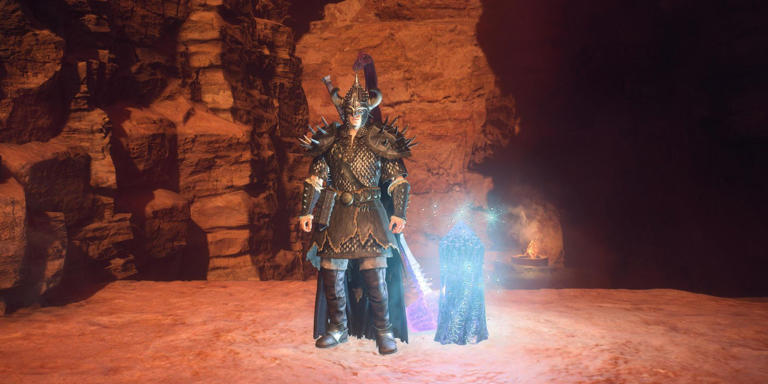
IMAGES
COMMENTS
The official advice is to come early and allow time for the extra checks. You can follow the Yunnan Airport Group (YAG) WeChat account for updates — kunmingairport is their WeChat ID. Travel within Yunnan. Thursday April 30 update: teachers and students are not allowed to travel outside Kunming during the Labor Day holidays.
Yunnan, home to 25 ethnic minorities, is a place to experience the unique cultures of China's ethnic minority groups. Yunnan has well-preserved old towns and villages, with ancient buildings, well-worn blue-stone streets, and rich histories. Visiting Local Minority Family in Lijiang. Cannot wait to visit Yunnan.
Top Travel Destinations in Yunnan. Traveling to Yunnan is a dream to many travelers. In this ethnic kingdom, travelers can explore in Lijiang - a Naxi minority city which has been a UNESCO World Heritage Site since 1997; Shangri-La, an ethic Tibetan township with Lost Horizon scenery; Dali - Bai ethnic group inhabited as well as a historic center of the Nanzhao and Dali Kingdoms; Yuanyang, a ...
Yunnan has a number of destinations that have been attracting an increasing number of visitors from China and abroad (pre-COVID; now relatively COVID-free domestic Yunnan travel continues with restrictions): Kunming, Dali, Lijiang, Shangri-La, tropical Xishuangbanna, the Yuanyang Rice Terraces, etc. This has led to many developments in transportation: larger airports, bullet trains, better ...
This forest lined lake overlaps the remote border between Yunnan - Sichuan provinces. It is home to several Tibetan, Yi as well as Mosuo minority villages. The stunning scenery and ethnic cultures are two main features that attracts thousands of visitors. A visit to the Lugu usually can be started from Luoshui.
Yunnan means the south of the colorful clouds in Chinese. The 26 ethnic groups in Yunnan make the province abundant in tourist resources. [email protected]; 86-773-286-5632 (Intl rates apply) ... Yunnan is reopening to tourists and you can travel without any restrictions and quarantine. You are no longer required to prepare a negative ...
See the 5-Day Spring Tour to Kunming, Luoping, and Wanfenglin. Summer (June to September) in Yunnan is a good season to escape China's heat. We recommend Dali, Lijiang, Shangri-La, and Puzhehei. Autumn (October to November) in Yunnan is busy with golden harvests and it's a season to enjoy clear blue skies. We recommend Dongchuan, Shangri-La ...
Below are the recommended best time to visit the popular destinations in Yunnan and you can check for reference. Kunming (altitude: 1895 meters): It can be visited all year round. Lijiang (altitude: 2418 meters): The best time to travel is March ~ November. Shangri-La (altitude: 3300 meters): The best time to travel is May ~ October. Dali (altitude: 2052 meters): The best time to visit is ...
Yunnan has the most ethnic minorities in China, which make up about 1/3 of the province's population. Of China's 55 ethnic minorities, the province is home to 51 and 25 of them exceed populations of 5,000. These ethnic minorities live together over vast areas in the region while some live in individual concentrated communities in small areas.
1. Why you should visit China's most diverse province. Visiting Yunnan (云南) ticks all the right boxes. It is by far the most diverse of all of China's provinces. Planning a trip here means ...
China, Asia. Yunnan (云南, Yúnnán) is the most diverse province in all China, both in its extraordinary mix of peoples and in the splendour of its landscapes. That combination of superlative sights and many different ethnic groups has made Yunnan the trendiest destination for China's exploding domestic tourist industry. 01 / Attractions.
Background: In response to the COVID-19 pandemic, China implemented strict restrictions on cross-border travel to prevent disease importation. Yunnan, a Chinese province that borders dengue-endemic countries in Southeast Asia, experienced unprecedented reduction in dengue, from 6840 recorded cases in 2019 to 260 in 2020.Methods: Using a combination of epidemiological and virus genomic data ...
Yunnan is one of the most beautiful and diverse provinces in China. In this travel guide, you can find the top things to do and see. Yunnan Province in China is a beautiful, diverse, landlocked region known for its stunning natural beauty, rich cultural heritage, and delicious cuisine.With its vibrant cities, picturesque countryside, and unique ethnic minority groups, Yunnan offers travellers ...
In 2018 alone, Chinese travelers took roughly 150 million outbound trips and collectively spent more than $277 billion. "In 2001, Chinese residents made 10.5 million foreign trips. By 2018, that ...
Yunnan is now complete open for foreigners tourist but at the moment only foreigners with China residence because now country still is close to tourist. We have been traveling in all Yunnan last 3 weeks and it have been perfect because there aren't much Chinese local tourism compare with other years. Very quiet and safe.
With the recent Kunming railway incident, and the current tight security, I need some updated info whether there will be any restrictions for foreign travellers to enter some of the tourists destinations especially the following areas : Honghe area - Yuanyang, Jianshui, Dali, Lijiang and Shangrila. Thanks. Report inappropriate content. 1-3 of 3 ...
Authorities restrict travel by foreigners in China. If you plan to travel outside major tourist areas, check that the area is 'open to foreigners'. For example, restrictions apply near military installations and some border areas. Travel and living conditions vary greatly between cities and less developed rural areas.
Background: In response to the COVID-19 pandemic, China implemented strict restrictions on cross-border travel to prevent disease importation. Yunnan, a Chinese province that borders dengue-endemic countries in Southeast Asia, experienced unprecedented reduction in dengue, from 6840 recorded cases in 2019 to 260 in 2020.
Organized Trip to Yunnan: Travel as a couple, with friends or in a group. You can choose to travel to Yunnan as a couple, with friends or in an organized group. ... Attention: The restrictions for Covid-19 in China are over, so we are back to organizing routes through Yunnan. And from December 2023 to November 2024, no visa fee is required to ...
Yunnan, abbreviated as Yun (Dian), is the capital of Kunming. It is located on the border of southwest China. It is adjacent to Guizhou to the east, Tibet to the northwest, Myanmar to the west, and Laos and Vietnam to the south. Yunnan has a pleasant climate all year round without severe cold and heat, and the scenery is unique.
Posing as a potential customer, Sixth Tone found that several travel agencies in Yunnan have such restrictions on journalists. ... a Yunnan travel agency in 2017 listed rules barring lawyers, journalists, and other people working in the tourism industry from joining their tours. Following a crackdown on such practices by the travel platform ...
China Travel Restrictions & Travel Advisory (Updated March 7, 2024) Updates March 7th, 2024 : Travelers from the following countries could enjoy visa-free entry to China for tourism, business, transit, or visiting friends and relatives. Europe: From December 1st, 2023, to November 30th, 2024: France, Germany, Italy, Netherlands, and Spain.
For Muslims around the world, Ramadan is a time for fasting, praying, charity work and providing community assistance. In China, as Muslims mark the holiday from March 10 to April 9, restrictions ...
The modder rthomasv3 seems to be one of the players who didn't like this limitation on fast travel in Dragon's Dogma 2 and decided to create a mod that removes all restrictions. With the mod, it's ...
USDA does not allow travelers to bring back most poultry meat or poultry meat products from countries affected with certain serious poultry diseases:. Highly pathogenic avian influenza; Newcastle disease; To find out a country's status for these diseases, visit our animal disease status page.. Commercially-packaged and labelled, cooked, shelf-stable poultry items from affected countries that ...
For pet travel requirements not listed, APHIS has not been officially informed by the foreign country about the requirements for your pet's travel. We recommend that you contact a government official of the country you are traveling to for more information. Country of Destination Contact Information. World Organisation for Animal Health: Members
The United States is restricting travel for government employees and their families in Israel as Iran threatens to retaliate for a April 1 airstrike on its embassy in Damascus.
LANSING, Mich. - Effective 6 a.m. Monday, April 15, the Michigan Department of Transportation (MDOT) will lift seasonal weight restrictions on all state trunkline highways in the entire state of Michigan.State routes typically carry M, I, or US designations. Weight restrictions are implemented during the spring frost thaw period and are now completed for the 2024 season.
Difficulty: very hard. Altitude: 3,100-3,800 m (10,200-12,400 ft) Recommended tour: 4-Day Yubeng Village Hiking Tour. The top hiking route for snow-capped mountains in Yunnan must be the Yubeng Village Trek. Yubeng village hides in the hinterland of the Meili Snow Mountains at an altitude of 3,000 m (9,800 ft).
The State Department issued the travel warning on Thursday as the top American military commander for the Middle East, Gen. Michael E. Kurilla, traveled to Israel to coordinate a response to ...